

Alliance offer: more value heads offshore
and
THE Alliance Group looks set to be New Zealand’s seventh significant primary sector business in the past 14 years to be sold into foreign ownership, as a whole or in part.
Cameron Bagrie of Bagrie Economics said some sales were strategic but others were sold after performing poorly.
“The reason they needed to be recapitalised was because their performance was sub-par.”
He was commenting on the Alliance board recommending last week that shareholders accept an offer by Ireland-based Dawn Meats to buy 65% of the co-operative for $250 million.
If the deal does go through, it will add to the five primary sector companies already sold in their entirety or part to overseas buyers or investors in the past 14 years: Silver Fern Farms, Westland Milk, Synlait, PGG Wrightson and T&G Global.
Alliance now joins Mainland Group, which trades as Fonterra Brands in NZ and Australia, in going through the sales process.
If the Dawn Meats offer is accepted, NZ will no longer have a 100% farmer-owned meat company.
Bagrie said while Alliance has few alternatives but to seek a new investor, in the case of Fonterra
the board has decided another owner has the skills to grow Fonterra Brands.
“One needs recapitalisation and does not have many options so has pulled the ‘oh shit’ ripcord,” he said.
“Fonterra is asking the right question of Fonterra Brands: ‘Can it extract additional value with its business skills and take this business to a new level or should they sell it to someone else and use those enhanced returns to look at other options?’”
Shareholders are often too slow to act when a company is not performing.
“Typically when a company is underperforming they get rid of the chief executive, but there is not the same accountability for the board who signed off the strategy.”
Sector leader Andrew Morrison asked why others see value in these companies when previous owners did not.
“I liken it to investing on one side of the mailbox but not the other.
“Over time, is that a wise strategy?”
This creates a risk of less competition, turning farmers into price takers.
He said New Zealand investors traditionally favour speculative, non-wealth-creating assets such as land and housing, which does not help the productive sector.
Rob Hewett, who sits on the boards of multiple companies, said
Continued page 3

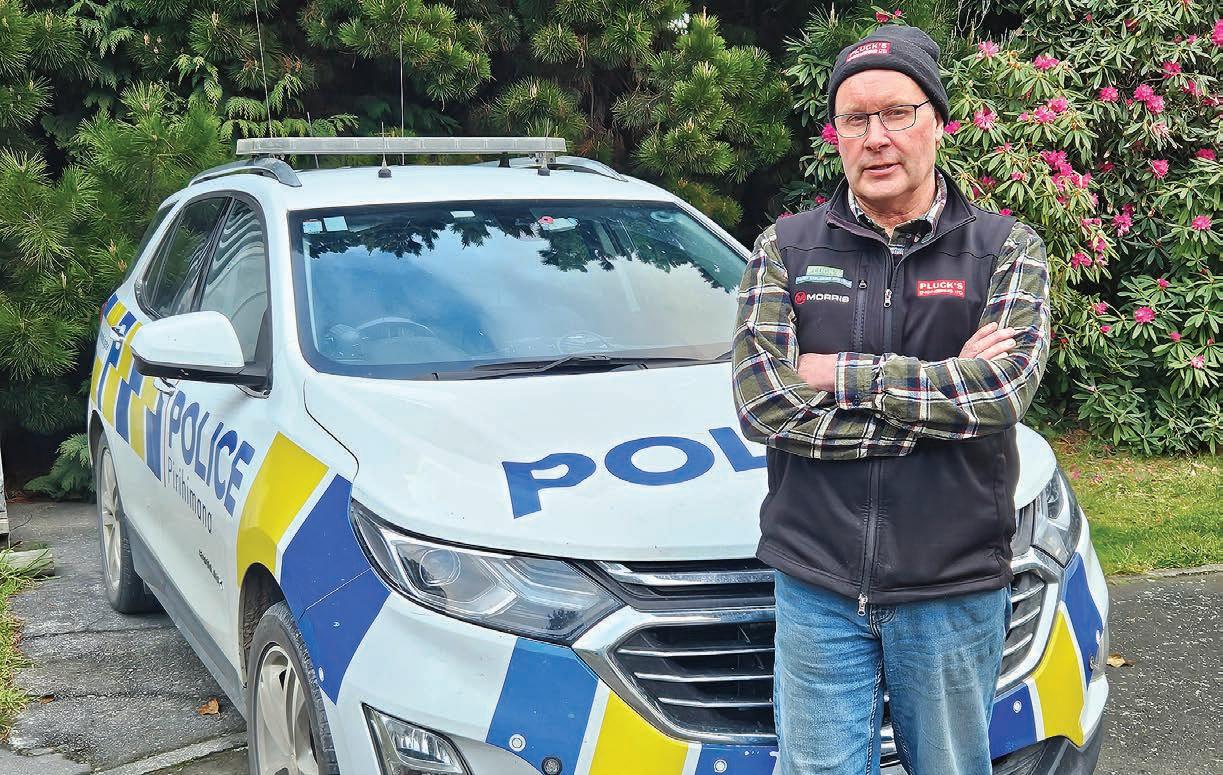
Don’t cut back on rural cops!
Rural communities across Canterbury are feeling under threat – not from crime, but from disconnection under a proposed new regional policing structure. Rakaia Community Association chair Neil Pluck says the planned restructuring is a ‘bloody disgrace’.
3

Alice Sanders works as a lawyer in Wānaka, but she’s equally likely to be found cutting the back steaks out of a deer she shot herself.
14
AI reliance erodes critical thinking capacity, writes John Foley.
OPINION 17









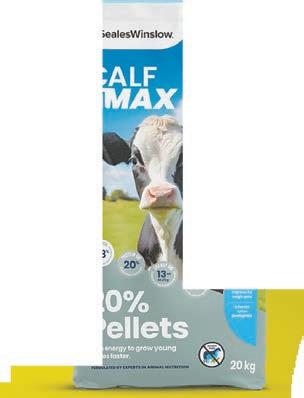
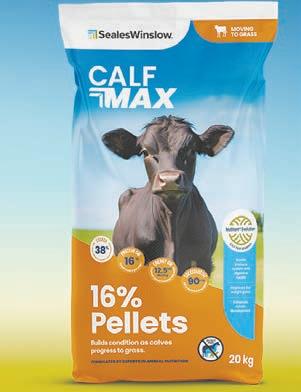

Photo: Annette Scott
Neal Wallace
Hugh Stringleman NEWS Production
EDITORIAL
Bryan Gibson | 06 323 1519
Managing Editor bryan.gibson@agrihq.co.nz
Craig Page | 03 470 2469 Deputy Editor craig.page@agrihq.co.nz
Claire Robertson
Sub-Editor claire.robertson@agrihq.co.nz
Neal Wallace | 03 474 9240
Journalist neal.wallace@agrihq.co.nz
Gerald Piddock | 027 486 8346
Journalist gerald.piddock@agrihq.co.nz
Annette Scott | 021 908 400 Journalist annette.scott@agrihq.co.nz
Hugh Stringleman | 027 474 4003
Journalist hugh.stringleman@agrihq.co.nz
Richard Rennie | 027 475 4256
Journalist richard.rennie@agrihq.co.nz
Nigel Stirling | 021 136 5570
Journalist nigel.g.stirling@gmail.com
PRODUCTION
Lana Kieselbach | 027 739 4295 production@agrihq.co.nz
ADVERTISING MATERIAL
Supply to: adcopy@agrihq.co.nz
SUBSCRIPTIONS & DELIVERY 0800 85 25 80 subs@agrihq.co.nz
PRINTER
Printed by NZME Delivered by Reach Media Ltd
SOFT
Advertise
SALES CONTACTS
Andy Whitson | 027 626 2269
Sales & Marketing Manager andy.whitson@agrihq.co.nz
Janine Aish | 027 300 5990
Auckland/Northland Partnership Manager janine.aish@agrihq.co.nz
Jody Anderson | 027 474 6094
Waikato/Bay of Plenty Partnership Manager jody.anderson@agrihq.co.nz
Palak Arora | 027 474 6095
Lower North Island Partnership Manager palak.arora@agrihq.co.nz
Andy Whitson | 027 626 2269
South Island Partnership Manager andy.whitson@agrihq.co.nz
Julie Hill | 027 705 7181
Marketplace Partnership Manager classifieds@agrihq.co.nz
Andrea Mansfield | 027 602 4925
National Livestock Manager livestock@agrihq.co.nz
Real Estate | 0800 85 25 80 realestate@agrihq.co.nz
Word Only Advertising | 0800 85 25 80 Marketplace wordads@agrihq.co.nz
PUBLISHERS
Dean and Cushla Williamson Phone: 027 323 9407 dean.williamson@agrihq.co.nz cushla.williamson@agrihq.co.nz
Farmers Weekly is Published by AgriHQ PO Box 529, Feilding 4740, New Zealand Phone: 0800 85 25 80 Website: www.farmersweekly.co.nz
ISSN 2463-6002 (Print) ISSN 2463-6010 (Online)

News in brief
Taranaki to host Plan appeal
Taranaki will host the 2026 FMG Young Farmer of the Year Grand Final. The contest series begins in October 2025 and more than 200 competitors will battle it out to secure their spot in a regional final, where they will then have a shot at a spot in the Grand Final, which will be held in New Plymouth from July 2-4 2026.
Wairakei Pastoral Ltd is appealing the Environment Court’s interim decision on Plan Change 1 to the High Court. The appeal is based on technicalities of the definitions within PC1, with WPL asking for more clarity on the Court’s interim decision and how PC1 is to be implemented. WPL owns around 27,000 hectares of land in south Waikato with around half the land leased to Pāmu. It is owned by Auckland rich-listers Trevor Farmer, Ross Green and Mark Wyborn.
Flying the fern T&G in profit
New Zealand avocado exporters have joined forces to secure a collective FernMark licence. This is a first for New Zealand’s horticulture sector and marks a new chapter in the industry’s global positioning, NZ Avocado said. The FernMark is New Zealand’s official country of origin mark and is awarded by the government to products that meet strict standards of authenticity, quality and governance.
Listed produce company T&G Global increased revenue by 12.5% to $920 million in the six months to June 30 with a significantly improved performance and a return to profitability.
The New Zealand grower, wholesaler and exporter is 74% owned by BayWa of Germany and is up for sale as part of worldwide restructuring and debt reduction. The FY2025 interim results include operating profit of $18m compared with a loss in FY24 of $2.6m and net profit after tax of $1.7m compared with a loss of $18.6m.



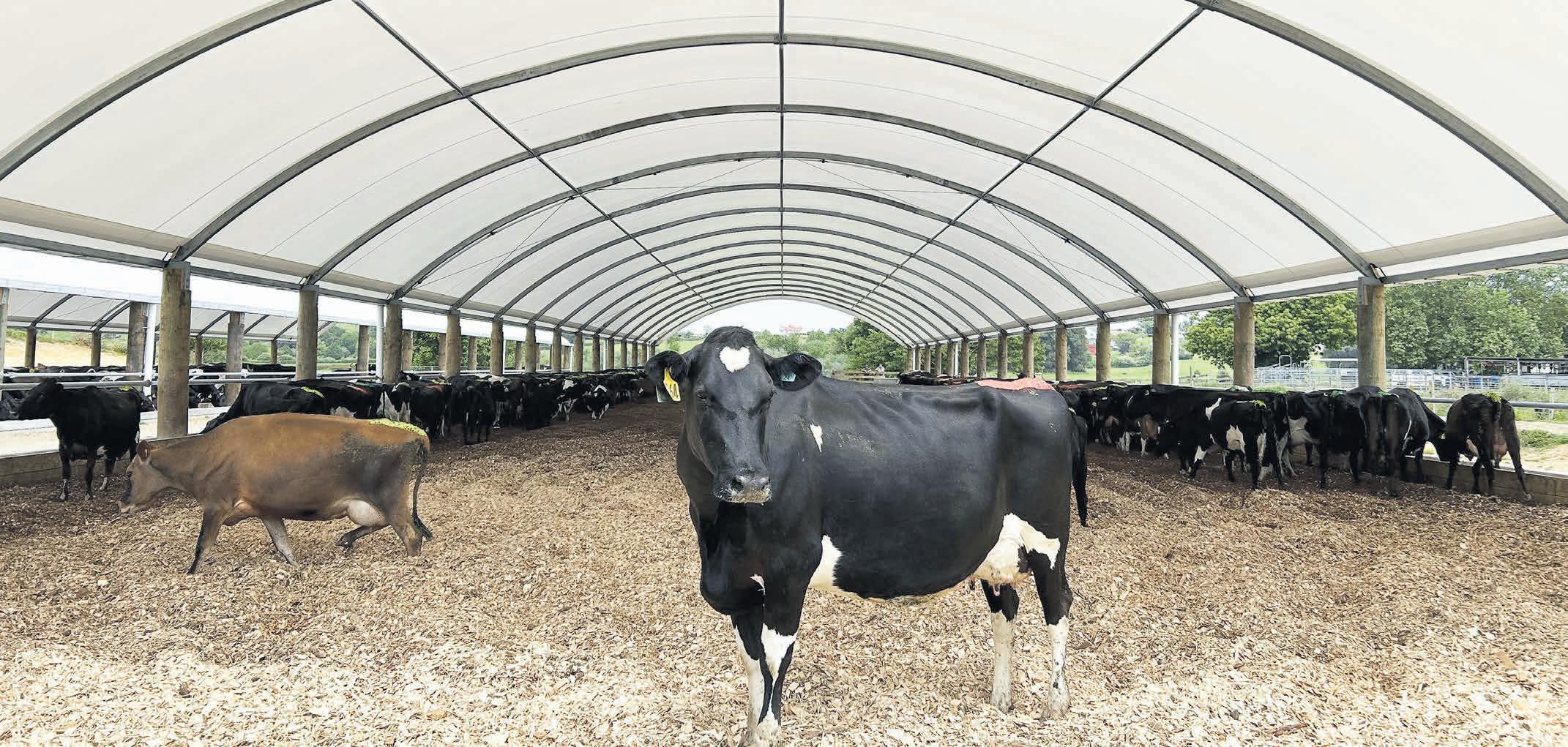
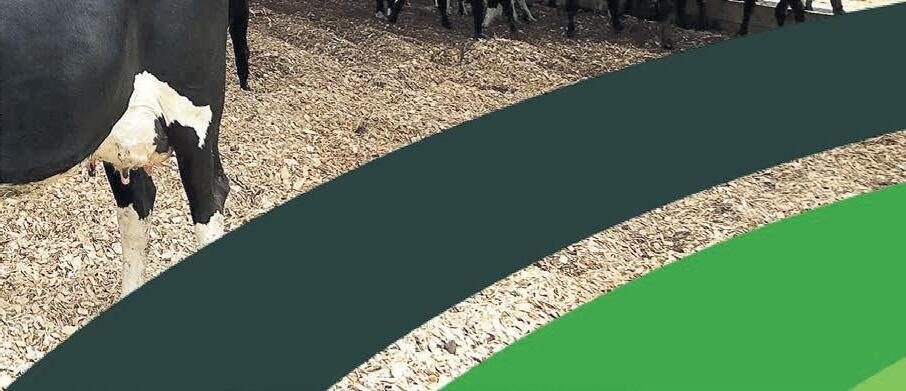
Canterbury’s plea: Don’t cut our cops!

Annette Scott NEWS Community
D‘ON’T cut our cops!”
is the call from rural communities across Canterbury who feel themselves under threat – not from crime, but from disconnection under a proposed new regional policing structure.
The small rural town of Rakaia has had a resident police officer since the first bridge was put across the Rakaia River in the 1800s. Now the community is fighting to keep that policing status.
Leading the charge for the Rakaia township and its farreaching farming community to retain a resident sole-charge officer in the Rakaia Police Station is Rakaia Community Association chair and local agricultural machinery business owner Neil Pluck.
All the people in our community know our local bobby, he’s a presence, a protector.
Neil Pluck Rakaia
He described the NZ Police’s proposed restructuring of the rural police force as a “bloody disgrace”.
“As a community we have been blindsided. Our local policeman is to be retrenched into a road cop and the first we heard about it was from him, our local bobby.
“All the people in our community know our local bobby, he’s a presence, a protector, and we enjoy the fact we know him as an individual, he knows our community and he knows the people, he builds real community trust. It’s a special relationship, one of trust and caring, of safety, security and understanding, and
there are many layers within that relationship.
“We are horrified at the thought of losing our local policeman and we are angry that we have to defend this space.”
Under the proposal, the solecharge Rakaia policing role will be disestablished and become traffic policing only.
“What we are more concerned about is the safety of the community, the security of their possessions, the health and wellbeing of our people,” Pluck said.
“The local policeman here supports the medical centre, the fire brigade, the local schools, community events. As a community we depend on him.
“The local bobby knows the good people, the bad people and the odd criminal that comes to town.
“He knows far more about everything than we are ever aware of and it is with that knowledge we trust him and rate him; his roots are deep in this community.”
Pluck said to suggest, as the reasoning in the proposal states, that there is insufficient demand to justify a sole-charge station position given that a significant percentage of the Rakaia demand is generated by traffic complaints on the state highway, “is downright bollocks”.
A petition “to keep our rural cop in Rakaia” secured almost 2000 verified signatures in only four days.
Just 25km inland, Methven policing, which supports Rakaia’s and can rely on its support, is also under threat.
There is a proposal to cut the two-person station to a single sole-charge position that will have a rural liaison role, with the station becoming a base for traffic and rural liaison officers.
Federated Farmers national spokesperson Karl Dean said under the proposal, small rural towns right across Canterbury will lose their local cops, instead being
serviced by drive-in, drive-out officers from the big smoke.
Rural communities have been turning out in their hundreds at meetings across the region to protest the moves.
“We’re told this proposal is about efficiency, not cuts, but we’re not buying a word of it.
“This is about more than numbers. It’s about trust, prevention and local knowledge; the quiet but crucial role our police officers play in small towns and rural communities.”
Canterbury District Commander Superintendent Tony Hill said there had been an obligation to consult directly with staff first.
“In a departure from our normal process in relation to operational decision-making, we are now sharing an external version of the proposal and inviting public feedback.
“I stress that this is a proposal and no decisions have been made. I will be paying close attention to the feedback as it comes in,” Hill said.
To submit feedback email: canterbury.review@police.govt.nz (link sends email)
The two-week public consultation period closes at 5pm on Monday August 18.

farmers do not value connections to their downstream processors as they previously did.
That disconnect has emerged as choice has grown on who farmers can supply stock to or buy inputs from.
By not committing to a processor, he said, farmers risk missing out on added value through differentiation or sharing in the financial margins achieved.
“Ultimately farmers are going to be price takers unless they differentiate their products.”
Hewett said governance skills are mixed and while farmers provide linkages to suppliers that are pragmatic, other attributes are required for governance – which independent directors can provide.
This week’s poll question:
Do you think there are enough police in rural communities to keep people and property safe?
Have your say at farmersweekly.co.nz/poll
Farmer directors often don’t distinguish between what’s best for their farm and what’s best for the co-operative, former Westland chair Pete Morrison said.
Retained earnings and investments in technology are foregone in favour of higher milk or meat payouts.
A multiple farm owner in both Westland and Canterbury, Morrison led the then struggling dairy co-op, which sold in 2019 to Yili Group of Mongolia.
Foreign ownership has been
an outstanding success, as Yili has treated its suppliers, the community and its employees very well, he said.
Past generations of farmers founded co-ops for processing because they were the only ones who could.
Now many outside sources of capital are available and should be used.
Foreign investors bring capital and hard-headed decisions, where Kiwi farmers cannot make calls on capital.
“In my view, they shouldn’t, because they have lots of capital tied up in their own farming businesses,” he said.
The loss of ownership to foreign investors reflects the reluctance of New Zealanders to invest in factories and business. They tend to favour residential and commercial property, said Professor of Agricultural Innovation Craig Bunt at the University of Otago.
Associate Minister of Finance David Seymour said international investment is critical to ensuring economic growth, and businesses should have the option to use it.
“Whether or not they choose to is a decision for shareholders, who in this case are the farmers.”


LOSS: Rakaia Community Association chair Neil Pluck says his community is horrified at the thought of losing its local policeman and angry that it is having to defend this space. Photo: Annette Scott
Japan still a top-shelf Kiwi customer
MEETING the MARKET

Richard Rennie MARKETS Food and fibre
ONE of New Zealand’s oldest Asian trading partners, Japan continues to offer food, beverage and fibre exporters diverse market opportunities in what is regarded as a premium export country.
New Zealand Trade and Enterprise’s GM for international marketing, Clare Wilson, said the country has perennially been among New Zealand’s top four export destinations for many years, with dairy dominating and accounting for about $900 million in trade last year.
This was followed by horticulture at $740m. Tiwai Point’s high quality aluminum forms our next valued export, accounting for $600m in export value last year.
While food and beverages dominate exports, Wilson said there are promising signs emerging for other sectors, including artificial intelligence, technology and apparel, particularly children’s wool-based clothing.
“Typically, Japan as a market represents the ‘best of the best’ when it comes to exports.
“Our customers there have very high expectations about quality and standards, and offer particularly attractive margins compared to many markets,” she said.
In return NZ exporters enjoy staunchly loyal relationships with those customers.
The dairy sector has enjoyed sales there for well over 50 years through longstanding trade agreements stemming from an agreement signed back in 1958 and revised in 1962 to give NZ “favoured nation” treatment.
“And over covid, when many companies could not get up into the market, very few NZ companies lost distributorship over that time, compared to other countries that had to work hard to re-establish their relationships.”
Japan’s economy has had a mixed ride since its surge in industrialisation on the back of the automotive and tech sectors up to and through the ’80s.
At one point Japan was predicted to eclipse the United States economy as the world’s biggest.
But the bubble burst in the 1990s, making it a “lost decade” hit by stock and property market collapses, economic stagnation and surging public debt.
Slow growth lagged on through the start of the millennium, exacerbated by the global financial crisis and the central bank enforcing negative interest rates

to try to kick-start the moribund economy.
Meantime Japan acquired the status of a “super ageing” nation, with 29% of its population now over 65, and population declining on an annual basis.
But there are cautious signs of a renewal in the economy, with tourist numbers surging to a record high of 37 million in 2024. Japanese companies are enjoying a strong profit run for the fifth consecutive year.
Despite the economy’s varied state, NZ has continued to lift its export trade to Japan over the past decade. Back in 2013 that was $2.8 billion and has steadily risen to finish last year at $4.5 billion.
Wilson said Japan’s ageing population is offering new opportunities for food producers as awareness of the value of proteins in diets grows.
“Post covid that awareness of wellness and the value of high-
quality food has only grown. People may be ageing, but they are also ageing wealthier and continue to want to consume quality products with a growing appetite for products from overseas.”
Our customers there have very high expectations about quality and standards, and offer particularly attractive margins compared to many markets.
Clare Wilson NZTE
NZ has established trade agreements with Japan through the Comprehensive Progressive Agreement for Trans-Pacific Partnership (CPTPP), and both countries are also part of the Regional Comprehensive
Boots on the ground, productivity in the air

RESEARCH into improving productivity continues to be a major focus for Beef + Lamb New Zealand as it maximises levy spend in light of upward trending livestock price forecasts, it says.
Addressing the BLNZ director roadshow in Ashburton, chair Kate Acland said while 51% of productivity improvements in sheep over the past 30 years have come from genetic gain, underpinned by BLNZ research and development, the other 49% had come from on-farm management, supported by the industry’s extension programme.
“The challenge now is how to maintain the gains – through hogget lambing, faster lamb growth and increasing lambing percentage, there are gains still to be achieved.”
There’s now a major lift in beef research.
“We need to replicate the genetics gain in beef now to improve the same genetic improvements as sheep. This includes nProve for beef launched as an industry collaboration and
the non-replacement dairy calves project with DairyNZ, meat and milk processors.”
Getting more boots on the ground, expanding the way the organisation delivers, will open opportunities to more farmers, in a move away from the big field days to more small group learning and the introduction of hub farms, she said.
We can’t double exports if we’ve planted our best farmland in pine trees.
Kate Acland Beef + Lamb New Zealand
“We have changed the way we engage with farmers on policy. Government is moving too fast and it’s hard to keep in front of farmers.
“We know we need enduring solutions so the pendulum doesn’t swing back and we are working closely with industry sectors on this across climate change, afforestation, freshwater, trade policy and market access.”
BLNZ’s general manager for insights and strategic planning, Julian Ashby, said the outlook
is positive with United States beef exports at record levels and expected to remain high until 2028, and with European and United Kingdom sheep demand solid and demand returning for mutton from China.
“We expect demand for beef into the US to remain elevated for at least two years with greater demand for ground beef.”

Global AgriTrends principal Simon Quilty forecast lamb to reach its peak at $10.50 in July 2026 with beef to follow with a 15% lift over the next 12 months.
“Global demand is good; Australian supply of beef and sheepmeat will tighten significantly and NZ will be the beneficiary,” he said.
“With or without tariffs the fundamentals are strong; tight supply and strong demand as NZ’s role in backfilling increases.”
Meanwhile there are signs of recovery in a BLNZ annual stock number survey released this week.
Total sheep numbers fell by 1%, a welcome contrast to sharp falls in recent years. Beef cattle numbers rose 4.4%.
Acland said the survey shows there are reasons for optimism in the sector, but significant challenges remain.
Worryingly, the number of breeding ewes continues to decline, down 1.9%, and the lamb crop is forecast to be 0.6% lower this season. That’s nearly 120,000 head fewer, on top of a 1.2 million reduction in lambs last year.
Acland said continuing loss of
QUALITY: NZTE’s Clare Wilson says Japan may have an ageing population, but it seeks out high quality food, with a greater focus on overseas options.
Economic Partnership (RCEP).
Under the CPTPP, NZ’s access opened significantly after late 2018, with dairy’s access improved on all protein products, complete elimination on cheese tariffs and reductions in in-quota tariffs by 2028.
Beef tariffs are reducing each year to 9% over 16 years, with the CPTPP tariff the lowest Japan has committed to in any FTA. Horticultural produce enjoys zero tariffs under CPTPP.
Wilson said it is encouraging to see a bullish attitude from exporters there.
“It’s not a market you will get overnight success in. You have to be up there a lot to build those relationships, but the returns are there for the effort.”
• Rennie is visiting Japan with assistance from key exporters including Fonterra, Silver Fern Farms and Zespri.

land to forestry is creating ongoing concerns about the sector’s longer term viability.
“Our conservative estimate is that 2.6 million stock units have been lost to afforestation since 2017, and afforestation is responsible for 78% of the total reduction in sheep and beef stock numbers since 2017.
“We can’t double exports if we’ve planted our best farmland in pine trees.”
Photo: Pexels
Annette Scott NEWS Sheep and beef
TOO FAST: Kate Acland told the meeting that the government is moving too fast and it’s hard to keep in front of farmers.
Photo: Annette Scott
STAYING HIGH: Julian Ashby says record levels are expected to remain high until 2028.
Photo: Annette Scott
Wynne sets out upside of Alliance offer

Neal Wallace NEWS Production
CONTINUING with business as usual would not allow the Alliance Group Co-operative to repay around $200 million of debt, says chair Mark Wynne.
The Alliance board has unanimously agreed to ask shareholders to consider selling 65% of the co-operative to the Irish family-owned meat processor Dawn Meats, for $250m.
While acknowledging some shareholders will be unhappy at losing ownership of the cooperative, Wynne said this has to be considered in light of attracting a willing partner, the state of the sector and the state of Alliance’s finances.
“At the end of the day Alliance probably has a very limited possibility of repaying the roughly $200m in debt.
“Everyone will have a view but the one non-negotiable sitting right in front of us is that we have to pay that debt back.”
Wynne said Dawn Meats initially wanted more than 65% of Alliance but this was negotiated lower.
Selling 65% of the company for $250m values Alliance at $502m.
May


Wynne said the cash injection will repay debt, which fluctuates between $188m and $200m, provide $22m for capital expenditure and allow a $40m cash dividend for shareholders allocated according to stock supplied.
The method for dispersing that $40m is still to be confirmed but Wynne said it represents a 40c/ share divided on the nominal $1 co-op share.
Retaining 35% ownership values the co-op shares at $1.26/ share.
The proposed joint venture is still to be approved by shareholders, but would have Alliance Group Ltd owned 35% by the 4300 farmer shareholders, through a new entity Alliance Investment Co-op, and 65% by Dawn Meats Ltd.
Existing co-op shares would be changed to ordinary shares, which
as well be a Dawn deal
Neal Wallace NEWS Production
THERE is anger but a mood of inevitability among Alliance Group shareholders that they have little option but to sell 65% of the company to Irish family-owned Dawn Meats.
“I’m not happy,” said Southland farmer and Alliance shareholder Ben Dooley.
But the weak financial state of the co-operative means shareholders have few options but to support the proposed joint venture with Dawn Meats, he said.
“I would much rather we stay a 100% farmer-owned co-op but, given what has happened in the last five years and the financial
trouble we are in, I am surprised at how good a deal they have got.”
He will be voting in favour of the deal with Dawn Meats, in terms of which the Irish company would buy the stake in Alliance Group for $250 million. Approval of the deal will require 75% support from those shareholders who vote – and support of more than 50% of all Alliance shareholders along with regulatory approval.
“It’s not really an option to say no.”
Colleagues and neighbours have views both for and against the proposal, but Dooley said rejecting the Dawn Meats joint venture would require shareholders to invest significant sums of money, which would be resisted by some.
He would like to see more than the proposed $40m shareholder

can be traded on the Unlisted Exchange, the same share platform used by Silver Fern Farms, Zespri and NZ Merino.
Dawn Meats shareholding would be capped for a period and the interests of co-op shareholders would be protected through agreed reserve matters.
Wynne said that would mean there must be unanimous support for issues such as the budget, strategy, a change in shareholding and related party transactions.
Wynne said a business must earn the right to exist through its performance and in the past two years Alliance has done that by rebuilding to focus on the basics and adopting a simple strategy.
It is now up to shareholders to determine the ownership structure.
Wynne said Alliance and other New Zealand companies already supply Dawn Meats but this joint venture would create an entity that could supply global customers all year round.
Senior management from both companies have inspected each other’s plants and identified operating efficiencies.
Dawn Meats uses energy and water technology that Wynne said would immediately benefit Alliance’s bottom line.
dividend from the sale, saying Silver Fern Farms shareholders received more when Shanghai Maling bought half the company.
One who is considering voting no is third-generation Alliance supplier Andrew Cowie from central Southland, who, like Dooley is frustrated that Alliance is in this position.
He said giving up 65% of the company will make his 90,000 shares worthless and he doubts the board’s claims that the shares, which could be traded on the Unlisted Exchange, are worth $1.26.
“A share is only worth what someone is prepared to pay for it and I can’t see why people would want to buy Alliance shares.”
He also questioned why shareholders were only given one recapitalisation option as they have nothing to compare it to.
Cowie said Alliance traditionally pays less for stock than competitors do, and he doubts the proposed $40m cash dispersal will compensate for years of receiving below-schedule prices.
“Overall the deal is very underwhelming.”
Pāmu CEO Mark Leslie said it will consider the proposal once the structure and detailed financials are available.
“As Alliance has acknowledged, shareholders are not in a position to make significant capital contributions and Pāmu shares this stance.
“The offer from Dawn Meats represents a credible pathway to address Alliance’s debt obligations and support a more sustainable future for the business.”
The one nonnegotiable sitting right in front of us is that we have to pay that debt back.
Mark Wynne Alliance Group
He is most excited by Dawn Meat’s further processing business and its supply chain linkages into large customers such as Sainsbury’s and McDonald’s, and the ability to extract more value, which would benefit Alliance.
“The more volume that goes through that model, it will be very beneficial.”
The capital raise offer initially attracted 50 interested parties but when considered against predetermined criteria this was whittled down to six, then three.
“Across our criteria, Dawn Meats was by far the best offer,” said Wynne.
Two weeks of road shows will start in mid-September with a vote at a special meeting in Invercargill on October 20.
Approval requires a minimum 75% shareholder acceptance of those who vote, and greater than 50% of all the shareholding voting yes.
Adding to a growing offshore ownership list

Hugh Stringleman NEWS Agriculture
THE imminent sale of a major shareholding of Alliance Group is the latest in a long history of all or part ownership of NZ rural companies by overseas entities, many of them in the meat or dairy industries.
Westland Milk Products, sold in 2019 to Yili Group of Mongolia for $588 million minus liabilities of $342m, or net $3.40/share for farmers on what were nominal $1 supply shares. Yili also promised to pay the equivalent of Fonterra’s farmgate milk price to farmer suppliers for 10 years.
Synlait Milk has two cornerstone shareholders, Bright Dairy of China 65% and a2 Milk Company, listed in Australia and NZ with 20%, after debt refinancing in 2024. Bright first bought into Synlait in 2010 to finance the building of a second drier at the Dunsandel site. A2 followed in 2012 to facilitate the collection and processing of A2 protein milk supply.
PGG Wrightson (PGW), the leading rural servicing company, invited Agria Corporation of Singapore to acquire a 44% shareholding in 2009, to inject capital following loss-making ventures by the late Craig Norgate and his McConnon family partners in Rural Portfolio Investments, such as the uncompleted purchase of Silver Fern Farms (SFF) in 2008. PGW sold its finance division
to Heartland Bank in 2011 and the seeds division to DLF Seeds of Denmark for $420m in 2018. Two failed attempts to raise capital, first from shareholders and then via a partnership with PGW, left SFF in a perilous position in 2014, with $60m in cumulative losses and $387m of interest bearing debt. In 2015 the board recommended – and shareholders agreed – that an offer from Shanghai Maling to buy half the processing arm of the business for $261m be accepted.
T&G Global (formerly Turners & Growers) is a leading produce company 74% owned by BayWa of Germany and 20% by Wo Yang of China. BayWa bought its stake in 2011 from Guinness Peat Group, one of the speculative Brierley investment companies. BayWa said recently that T&G is up for sale and interest is being shown by two Australian investment companies.
Mainland Group (Fonterra Brands in NZ and Australia) is being readied for divestment and the disclosed possible purchasers include Bega Cheese of Australia with Friesland Campina of the Netherlands, or the Lactalis Group of France.
Mainland has around $5 billion of annual revenue and is estimated to bring over $2bn sale proceeds, subject to a Fonterra farmer-shareholder vote to approve either outright sale or an initial public offering with preference given to dairy farmers.
PERFORMANCE: Alliance chair Mark Wynne says a business must earn the right to exist through its performance, and in the past two years Alliance has done that.



One wool lady who didn’t stick to her knitting

FOR years Philippa Wright was known as the wool lady, the sole female in a male-dominated wool industry.
In the 1980s Wright began working for what was then the Hawke’s Bay Farmers’ Co-op stock and station company. Most viewed her skill and knowledge of wool favourably, but some could not see past her gender, she said – but she was undeterred by the pressure.
“It was a difficult few years but I was really determined not to show it.
“It was good in that I developed a tough exterior, learnt how to deal with it by not allowing it to have an effect on me and in the end I think that earned me a lot of respect,” Wright said.
Those lessons were transferred into her business life as owner for 28 years of Waipukurau-based Wright Wool, which she has just sold to WoolWorks.
Initially she wasn’t interested in owning a wool store but saw the potential.
“It was a fantastic opportunity
to do things the way I wanted to do it, treat staff the way I wanted to treat them and treat clients on a more personal level.”
When Wright was growing up, her father Bryan was a wool buyer in the South Island. Wright saw a job in the sheds as a quick way to make money for her activities such as travel.
It was a difficult few years but I was really determined not to show it.
Working in a shed in the Mckenzie Basin, she realised there was even more money to be made as a wool classer, so sat her Diploma in Wool at Massey University.
Wool became her career.
For the next 15 years she worked for Hawke’s Bay Farmers in almost every facet of its wool business, from the store to shipping and as a field representative.
“That gave me a great profile as people remembered me as the wool lady.”
When she bought the wool
store it led to involvement in industry activities, including the New Zealand Campaign for Wool and its global arm. The bodies aim to educate and promote the attributes of wool.
“Suddenly I was exposed to the global wool industry and connected to everybody after wool had left our shore, manufacturers and retailers.
“It opened my eyes understanding an industry that was so global but also so small.”
It made her even more passionate to promote the attributes of wool and its value for humanity.
“Friends of my children feared coming to our house because they were going to get a lecture on the merits of wool.
“When my children or friends went off to university I would give them wool clothing and a wool blanket.”
With the assistance of family and staff, Wright has launched her own line of wool-filled pillows, which are made and sold online from her Waipukurau offices.
Wright is optimistic that young people will lead the recovery of wool as they bring innovation, energy and a willingness to try new ideas, but she warns the








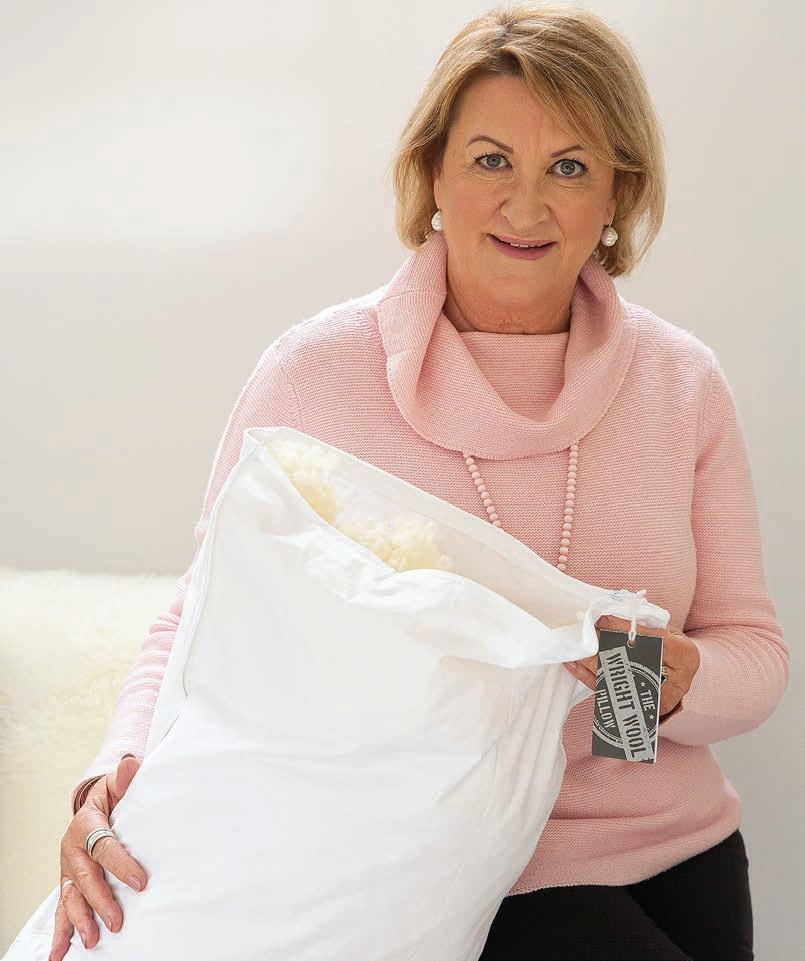
next decade will be tough as the industry adjusts to lower sheep numbers.
In the past two years her client base has grown but the volume of wool has been 20% lower than when she started in business in 28 years ago due to lower sheep numbers.
She is relieved that WoolWorks intends to maintain her former business including staff. Wright intends having a break from business, visiting friends and family, but said stock agent partner Dean Freeman may have to adjust to having her around home much more.









We’re proudly partnering with Farmstrong to scuss the little things that bring us happiness, e this warm jersey on a chilly day or the simple pleasure of a coffee break to connect with thers Farmstrong’s 5 Ways to Wellbeing are mple, daily habits to help you stay well on farm

THE WRIGHT STUFF: Waipukurau wool buyer Philippa Wright has sold her business to WoolWorks, bringing an end to a life in the wool sector.
Philippa Wright Wright Wool
Neal Wallace PEOPLE Food and fibre
Green fuel on the blue horizon

TBiofuel
AKING fuel from forests to power up oceangoing ships could rapidly become reality, thanks to Scion’s marine biofuel breakthrough.
Scientists with what is now an internal group of the newly formed Bioeconomy Science Institute have formed Biowave, a funding startup aiming to draw in funds to take their proven technology to the next stage of scale and testing.
They have developed a patentprotected distilling and catalysing process capable of turning forest waste into biofuel suitable for fuelling up ocean-going ships and delivering significant emission reductions in the process.
The international shipping industry is under significant pressure to curtail its emissions with standards tightening up between now and 2050, when it is expected to achieve net zero emissions.
The mandate known as MARPOL sets a threshold for ships to operate under. Exceeding it
requires them to buy remedial fuel units, while those using zero or near-zero tech will receive financial rewards.
New Zealand could be at the sharp end of policy that will impose a minimum fee of US$100 for every tonne of surplus gases emitted by certain ships.
Shipping accounts for 3% of global emissions but this is expected to rise in coming decades to be as high as 13%.
Scion researcher Dr Paul Bennett and innovation manager Amanda Davies are the Biowave cofounders. Davies said the ability of their biofuel to be dropped straight into marine fuel systems is a significant advantage, compared to other tech in play.
“You have the likes of green ethanol being developed, but they all require different infrastructure to deal with, and are still a way off.”
She said the global marine fuel market is valued at US$150 billion a year.
The scientists have proven the biofuel they have developed can replace 20% of the conventional fuel mix, delivering an 18% emissions reduction, with potential for more with further refinement.

We work on about a 10% yield from green forestry waste, but low value ‘K’ grade logs are preferred.
Dr Paul Bennett Biowave
“And the energy density is very similar to conventional marine fuel,” she said.
The Biowave funding startup aims to raise at least $2 million from investors to enable the plant to be scaled up sufficiently to produce enough fuel to fully trial on a scaled-down marine engine.
NZ’s 1.7 million hectares of exotic forestry provides a sound feedstock base for this country to scale up the technology.
“We work on about a 10% yield from green forestry waste, but low value ‘K’ grade logs are preferred,” said Bennett.
Estimates are NZ has about 7 million tonnes of green waste available, but this would have to be economically accessible to refinery sites. Those sites could initially include locations in Northland, central North Island, east coast and northern South Island.
Bennett said a potential customer has indicated interest in 200,000t of fuel, requiring 2 million tonnes of green waste.
“The challenge is whether that is
available in the right location.”
Estimates are refinery sites would occupy about 10ha, and employ 40 people directly, with a similar number engaged indirectly with transport and support services.
Bennett said interest has been strong from within the industry, and from across the export sector. Zespri is among those keen to investigate low emission shipping as a part of the carbon reducing process for NZ exporters whose reliance on shipping is greater than most countries’.
Estimates by Scion are that producing 200,000t of biofuel would deliver a $600m manufacturing opportunity for NZ Inc.
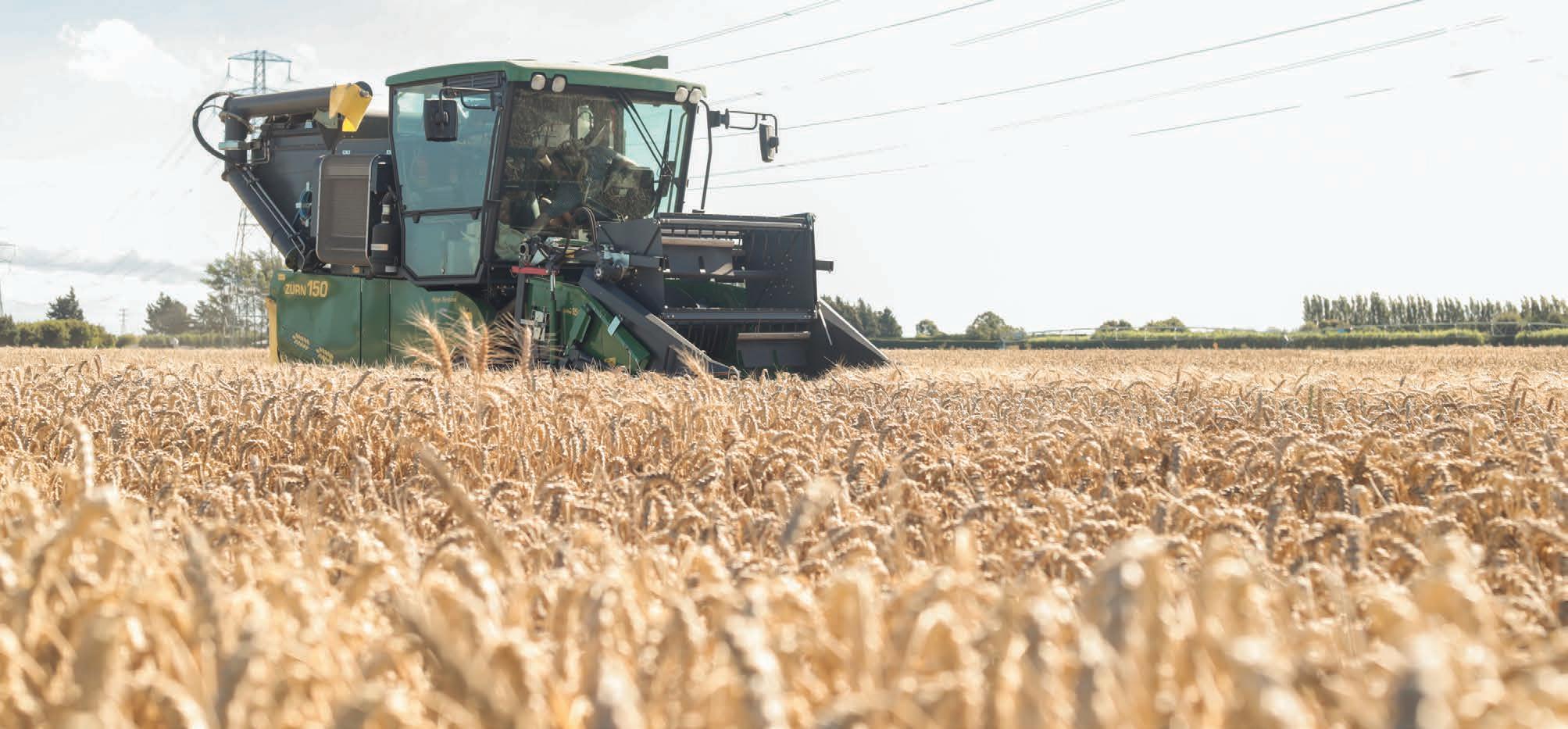


Richard Rennie TECHNOLOGY
GREENER: Scion’s marine biofuel technology could unlock a marine biofuel industry worth hundreds of millions to the NZ economy.
Sheep of the future begins to take shape

Bryan Gibson NEWS Sheep and beef
ARESEARCH programme
tasked with finding the sheep of the future has reported some promising discoveries, three years into its workstream.
The Sheep of the Future programme is a collaboration between Focus Genetics, AgResearch, the Ministry for Primary Industries and Pāmu.
Stakeholders were updated on the programme at a field day at Pāmu’s Paeroa Farm in Central Hawke’s Bay last week.
Focus Genetics general manager Matt Johnson told the Farmers Weekly Podcast that the aim is to breed a sheep with traits that will make it more resilient in the future environment.
“We’ve got our core traits around productivity, but we’re looking
We’re able to bring the science to the farm to confirm what we’re seeing, not in a lab environment, but in a test environment.
Matt Johnson Focus Genetics
into novel traits, so things like heat stress and heat tolerance.
“Is there any genetic correlation to different animals and their ability to manage stress and how they act in those stressful times?
“We’re looking at immune competence. Are there animals that have genetic ability to manage different sicknesses and illnesses, and can we breed towards that?
“And then we’re looking at the impacts of going to no-wool or fine wool breeds, and how we can ensure that we still get those productivity measures from them, and the survivability their product out the gate isn’t impacted by the changes that farmers may make.”
He said findings to date show it’s worth continuing the study.
“We’re at the stage now that we’re starting to see evidence of some of these [heat stress or immune competence] traits. We know enough now that we can continue an investment and look at incorporating them into breeds in the future.”
Another important aspect of the programme is that by using Pāmu farms, researchers get regular feedback from shepherds about how the sheep handle and how they progress through the farming year.
At Paeroa Farm, manager Richard Scott told attendees that
some of the research mobs had significant advantages when it came to temperament and ease of mustering.
Whether those characteristics persist in future generations is yet to be seen.
“Science is a beautiful thing,” Johnson said.
“It tells us a whole lot of facts and information. But also, farmers are out there who are making decisions based on animal behavior and what’s actually happening on farm.”
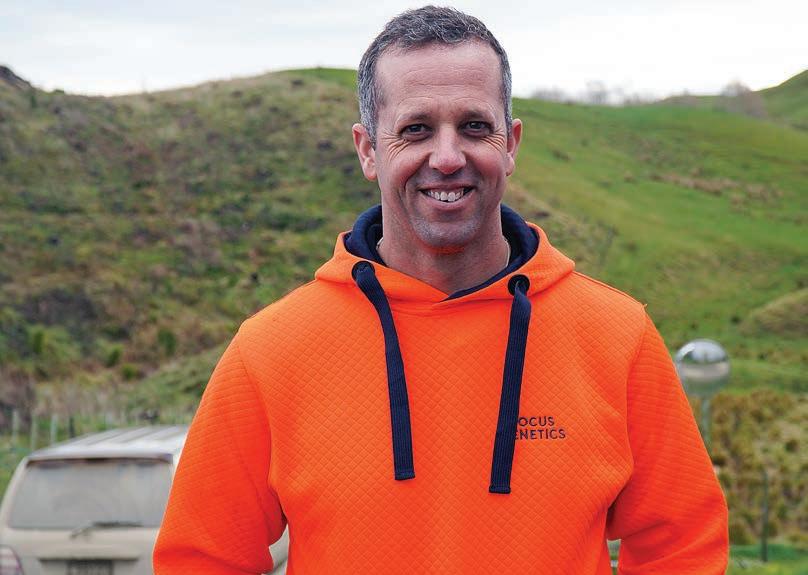
farmersweekly.co.nz/podcasts
ASB builds business, rural lending

Hugh Stringleman NEWS Finance
BUSINESS and rural lending by the ASB Bank in New Zealand grew 2% over the 12 months to June 30.
Home lending was up 7% over the previous financial year and the bank reported a net profit after tax of $1350 million, down 1% on the previous year.
Chief executive Vittoria Shortt
said the results show ASB has strong momentum and that its business lending has grown by $4.5 billion over the past five years, the best rate of growth among leading NZ banks.
“We are playing our part to help the country prosper with lending to the productive sector, linking food and fibre producers with trade advice and connections and partnering with Māori business customers to contribute to their
long-term intergenerational success.
“Since last July, we’ve extended more than $2 billion to new business lending customers, and cut our floating base rate by 2.25%.”
Shortt also referenced the 0% Smart Solar loan for energy security and cost savings for farmers.
ASB has an Our Every Hectare Matters programme to support farmers wanting to diversify their business.










































TRAITS: Matt Johnson of Focus Genetics says the project is starting to see evidence of heat stress or immune competence traits in the Pāmu flocks it is working with.
Outcry over plans to lower Lake Hawea level

Neal Wallace NEWS Water
ENVIRONMENTAL,
farming and recreational groups in central Otago’s Upper Clutha region are banding together to fight an application by Contact Energy to lower the operating range of Lake Hawea by 2m.
Contact is seeking a variation to its consents for the hydroelectric storage lake, but locals fear lowering levels will expose the shoreline and mean a loss of recreational and scenic values.
Lake Hawea was dammed in 1958 to create a storage lake for the now two hydroelectric dams on the Clutha River.
Contact is seeking to amend the maximum operating range from the current 338m to 346m mean sea level (msl) to an emergency operating level of 336m to 346m msl.
In an exceptionally dry year it seeks to lower it a further 6m to 330m msl.
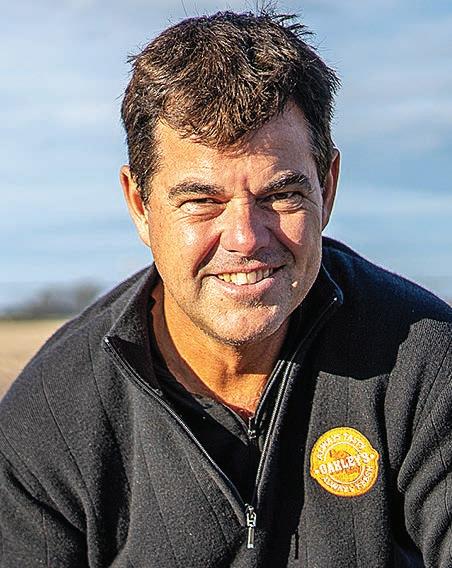
Long-time resident Ray Macleod recalls the dust storms of the 1970s and ’80s coating the township and houses in dust, preventing doors and windows from being opened and constant cleaning.
He is also concerned at the impact that lowering the lake level will have on groundwater levels.
A 2023 groundwater modelling study by the Otago Regional Council found a lake level of 337 msl allowed aquifers in the Hawea Basin to be recharged and stable groundwater levels.
But below 337 msl, the sediment barrier was exposed, interrupting that recharging.
Locals are concerned the application could be heard under the government’s fast-track consenting process, a streamlined consideration of resource consent for projects deemed of regional or national significance.
Contact Energy’s head of hydro generation, Blair Croall, said while it has applied for the consents to be considered under the fast-track
legislation, it could be another three months before it gets an answer.
It should at least go through the normal consenting process so it can have an appropriate investigation by independent bodies.
Allan Kane
Upper Clutha Angling Club
“If the referral is accepted, Contact would have up to two years to prepare a full application.”
Croall said lowering the lake to 330 msl would only be actioned in rare and extreme circumstances, and only if Transpower warned of a serious electricity shortage.
Emergency storage was last accessed in 1982.
Croall acknowledged the community’s concerns and said should the application proceed, it will engage with locals.
In its application, Contact
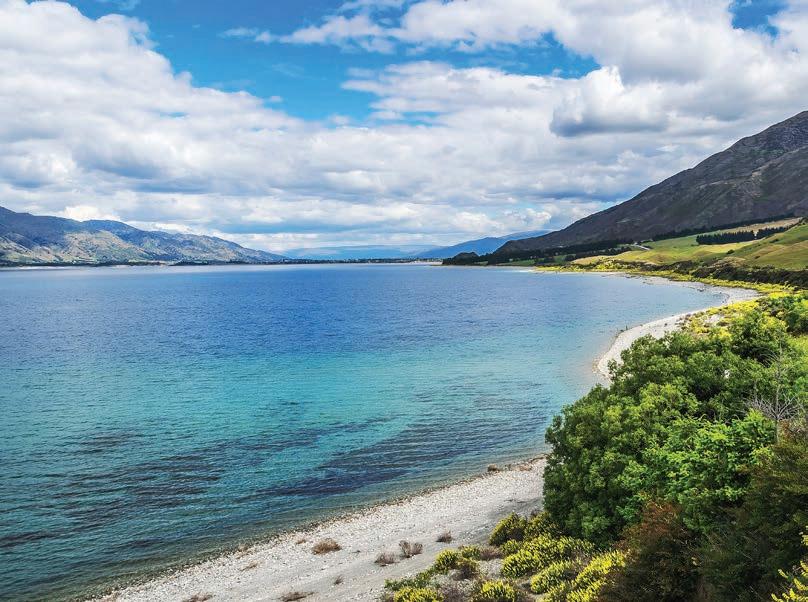
said since 2007 the country has decommissioned 1000MW of carbon emitting thermal energy generation, replaced by 1000MW of renewable, but intermittent, capacity.
This is providing challenges to the security of New Zealand’s electricity system.
Tarras farmer and secretary of the Upper Clutha Angling Club Allan Kane said lowering the lake level would be devastating for the lake environment and recreational users.
It would also impact tributaries and fish spawning areas and expose an estimated 1km stretch of mud flats at the top of the lake, a source of fish food.
The fact it will be considered under the fast-track legislation means the application will bypass a degree of scrutiny.
“It should at least go through the normal consenting process so the community can at least have a say and have an appropriate investigation by independent bodies,” Kane said.
Spuds need to push their health benefits

Annette Scott NEWS Horticulture
A DECLINE in potato consumption has growers looking to lift the profile of the humble spud.
While New Zealanders eat fresh potatoes more often than any other vegetable, many still see them as just a carbohydrate, rather than recognising their health and nutritional benefits.
The consumer insights study from Potatoes New Zealand reveals that more than two-thirds of people eat fresh potatoes at least twice a week, and more than
80% enjoy them weekly.
The research, launched at Potatoes NZ’s annual conference in Christchurch, was commissioned in the wake of a recent decline in consumption of potatoes, within the context of an overall decline in fresh produce consumption nationally.
Potatoes NZ chef executive Kate Trufitt said despite their popularity, potatoes’ biggest barrier to increased consumption is perception.
“To reverse this, we needed to better understand what is driving consumer behaviours and attitudes towards potatoes as
a basis for moving forward.
“Shifting public perceptions remains a challenge for the industry and one we are very committed to addressing.”
Trufitt said as the research shows, while people love potatoes for their versatility and convenience, they tend to see them as a filling carbohydrate rather than a healthy, delicious and nutritious vegetable.
“In fact, compared to other alternatives, fresh potatoes are a super healthy wholefood packed with vital nutrients.
“As well as getting high-quality fibre and fuel to power the
body, you’re getting a wealth of nutrients like vitamin C, minerals including potassium and essential B vitamins.”
The research revealed that as well as being a versatile ingredient that is widely accepted in the household, potatoes satisfy different needs for Kiwis as a familiar “comfort food providing something for everyone making life easy”.
While there are multiple different varieties available, agria is the most purchased variety, with most people buying loose or unlabelled packaged white potatoes.



DRY YEARS: Locals are angry Contact Energy is seeking approval to allow the level of central Otago’s Lake Hawea to be lowered for hydroelectric generation during dry years.
CONSUMPTION: Fifth-generation potato grower Robin Oakley is keen to lift the profile of the humble spud to drive increased consumption.
Growers seek certainty as gas shortages bite

Gerald Piddock NEWS Energy
GROWERS using natural gas need more regulatory certainty from the government if they are to plan for future change. And that has to come in the form of cross-political party support that shows a clear direction of travel, Vegetables NZ chief executive Antony Heywood said.
“We don’t want every time there is a change of government for the direction to change.
The only way we are going to get out of this is if the government gives us a really good steer of where they are going with their energy.
Antony Heywood Vegetables NZ
“The only way we are going to get out of this is if the government gives us a really good steer of where they are going with their energy. In New Zealand, because it is isolated, we have to be really practical in how we manage it.”
While a relatively small user nationally, New Zealand’s covered
crop vegetable growers also use natural gas for carbon dioxide production and temperature control in greenhouses to encourage plant growth, Heywood said.
The sector is a mix of larger corporations such as Talley’s and McCain Foods as well as smaller, privately owned operators that use a mix of gas, coal boilers and biomass.
Heywood said around 65% of the energy used in vegetable production for covered crops is supplied by gas annually.
“We have an energy crisis in New Zealand and it’s probably typified by gas users being the most at risk.”
While many businesses want to decarbonise, they need the runway to do it and that includes certainty and confidence in investment in that technology.
“That’s the part that government has to play.”
Businesses nationwide are grappling with gas shortages, which led to Ballance AgriNutrients to recently contemplate closing its urea plant at Kapuni in Taranaki for four months.
On August 8, Associate Energy Minister Shane Jones met with major gas users to discuss the issues around securing an affordable gas supply.
Jones told RNZ he is seeking
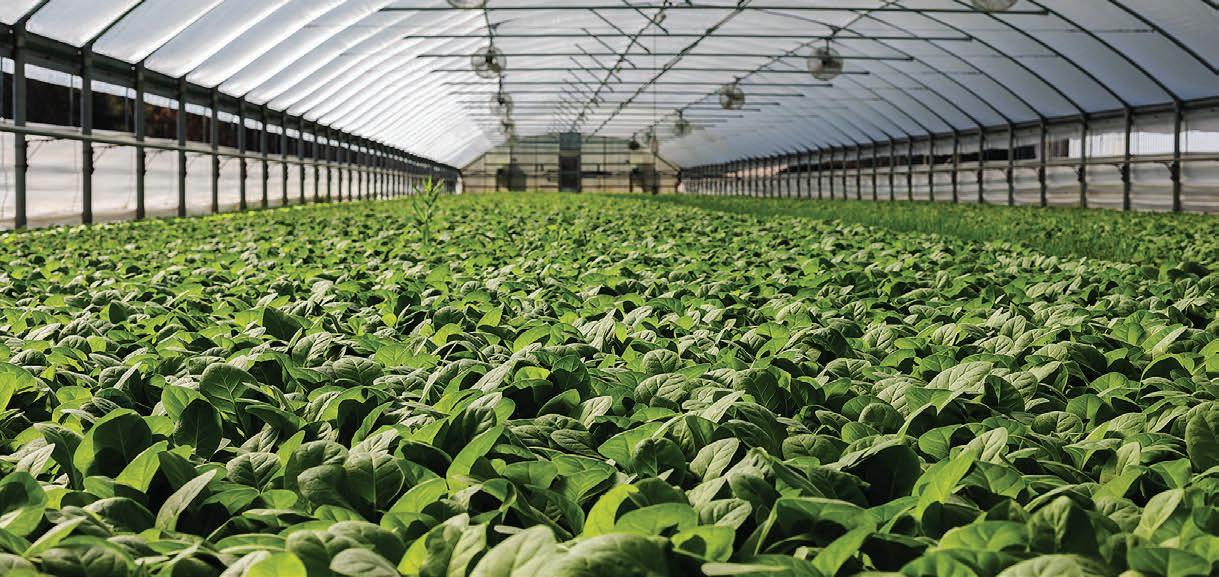
advice on where the electricity system can use more coal to reduce reliance on gas.
Heywood said many growers are now on yearly contracts and some purchase on a month-to-month basis, buying off the spot market.
He knew of one small grower whose energy price had risen by 500% in the past five years.
“The price of gas is going up and it gets to an economic point where our growers would say, ‘Nothing is dropping out of my business at the moment, why am I producing a product that is going to cost me money when I send it out the gate?
PGW eyes billion-dollar year

Hugh Stringleman NEWS Agribusiness
THE outlook for the current financial year is encouraging for farmers and their rural servicing company PGG Wrightson, chief executive Stephen Guerin says.
Good commodity prices underpin higher livestock values, and the agency business in livestock, wool and real estate is enjoying increased fees and margins.
PGG Wrightson reported much improved financial results for the year ended June 30 2025 and will pay a fully imputed final dividend of 4c a share in addition to the interim 2.5c.
The return of dividends this year comes from a net profit after tax of $10.7 million, up $7.6m or 248% over the prior financial year. Operating earnings were up 27% to $56.1m and
operating revenue up 6% or $59.4m to $975.3m.
In the previous financial year the directors did not pay a dividend because of an 80% reduction in net profit and an uncertain outlook.
At the current rate of growth, PGG Wrightson’s revenue in FY26 is on track to exceed $1 billion for the first time, a goal that Guerin carries at the beginning of his seventh year as chief executive.
“But we are only midAugust, wet and cold, with spring yet to come, so I am not going to predict a number.”
The rural real estate market is a bellwether in the sector and is currently picking up with stronger activity in commercial farm sales.
Dairy and orchard conversions are making headlines while the demographic need for up to 20 succession sales a week over the next decade
keeps the market moving, he said.
With the rising tide of agency income, PGG Wrightson has paid $20 million for the animal health Nexan Group, made a joint venture in wool with Norsewear, paid $17.4m in capital expenditure, installed a new Microsoft enterprise reporting platform and pushed out the online coverage of livestock, wool machinery and clearing sales on its bidr platform.
“While agency business and retail sales are cyclical, we have longer-term initiatives to grow the company.”
Go-Stock receivables increased by $30m to reach $81.4m in livestock funding on June 30, almost all of the company’s debt.
Fertiliser and stockfood were in demand as farmers focused on increasing production to maximise the higher commodity returns.

“‘It’s that equation of, I am not getting paid enough for my produce, so do I carry on?’”
In the arable sector, natural gas is used in the drying process for maize grain production. Waikato Federated Farmers arable chair Donald Stobie said he understood the dryers had secured an annual contract to supply the gas for the coming spring, but was unsure what it will cost growers.
Fonterra is also a natural gas user in the primary sector, where it helps power the co-operative’s plants across the North Island through the peak milk months.
Its general manager for energy and climate, Linda Mulvihill, said Fonterra is investing in energy efficiency and alternative fuel projects to reduce its reliance on gas.
“These initiatives not only enhance supply surety but also support our long-term sustainability goals. In saying this, we remain confident in our ability to maintain operations through seasonal peaks.
“Our sites operate on a mix of gas, coal, electricity and biomass, ensuring resilience even during market volatility.”
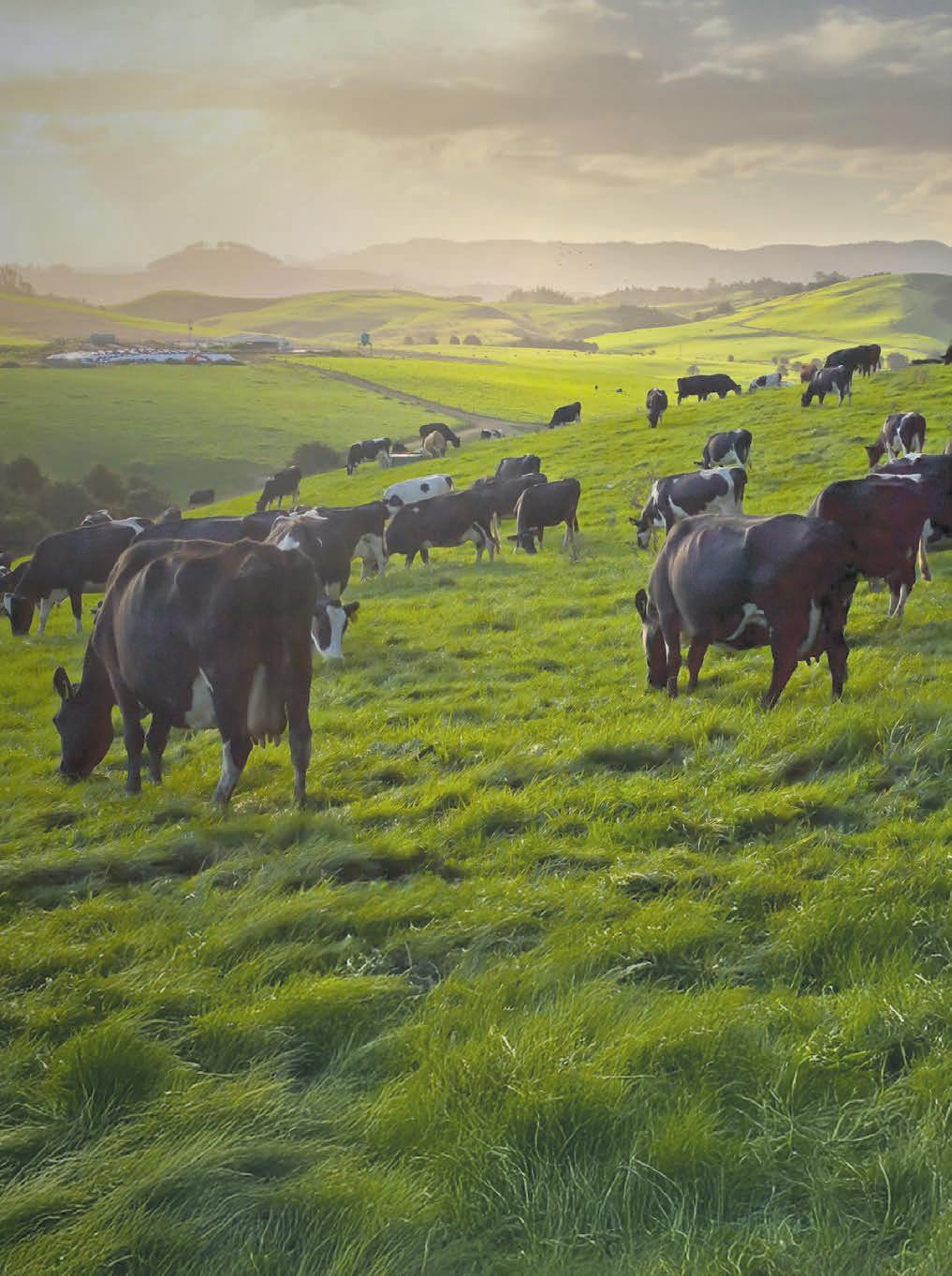


AVAILABILITY: Vegetables NZ chief executive Antony Heywood says growers need more certainty from a regulatory perspective regarding gas availability.
New visas get rural stamp of approval

Gerald Piddock NEWS Employment
PRIMARY sector groups are celebrating the introduction of two new seasonal visas designed to help New Zealand businesses access the workers they need during peak times of the year.
The Global Workforce Seasonal Visa (GWSV) is a visa for up to three years, to enable skilled workers to return for subsequent seasons on the same visa. It is designed for highly experienced seasonal workers in roles such as rural contracting, sheep scanning, winemaking and snow instruction.
We have been wanting it for a long time.
Charlie Burton New Zealand Shearing Contractors Association
Visa holders will need to spend a minimum of three months out of every 12 months offshore before returning to New Zealand to qualify.
The second visa is the Peak Seasonal Visa (PSV), which is up to seven months for short-term seasonal roles such as meat and seafood processing, calf rearing, and wool handling.
Visa holders will have to have at least one season of previous
relevant experience and people will need to leave New Zealand for at least four months before the visa can be renewed. For visas over three months there will be a new requirement for insurance with health coverage.
Rural Contractors NZ president Clinton Carroll said they had been advocating for years for such a policy, calling it a “real win for our members”.
The process of repeatedly applying for visas under previous arrangements – even for workers who’d previously been here – had been a nightmare for many rural contractors.
“None of us, either ourselves or the people we were bringing in, are skilled in the bureaucratic complexities of meeting visa requirements again and again. They make reading a new tractor manual seem easy,” he said.
Meat Industry Association chief executive Sirma Karapeeva said improving the ability to employ migrant workers on a seasonal visa means meat processors can ensure shifts run at maximum capacity on a regular basis.
“This results in more sustainable employment and income for New Zealanders employed by the sector.
“When meat processing plants have enough people to run at full capacity, companies can process every part of the carcase to capture maximum value, ensuring higher returns on exports, which flows back to farmers,
Temuka joins nationwide bidr saleyard coverage

Hugh Stringleman MARKETS Livestock
TEMUKA Saleyards in South Canterbury will join the PGG Wrightson online platform bidr on September 1 and complete the coverage of major saleyard sites throughout the country.
Temuka will be the 15th regional site for bidr with regular scheduled sales, plus its pop-up coverage of numerous seasonal fairs, stud stock sales, machinery and clearance sales.
After four years on a United States platform called Xcira, Temuka farmers’ co-operative and its Tessco operating company have been advised of a change of platform ownership and move away from livestock auctions.
Temuka has the secondbiggest throughput of New Zealand saleyards, in excess of 70,000 cattle and 260,000 sheep annually through 100 sale days, after Feilding in the North Island.

regional New Zealand and the economy.”
New Zealand Shearing Contractors Association executive member Charlie Burton said the move is very positive for the industry. It gives certainty to overseas shearers who in the past have had to re-apply for visas on a seasonal basis, he said.
Federated Farmers immigration and employment spokesperson Karl Dean said it will give farmers
and growers better access and certainty for securing skilled staff in specialised roles.
“It will really give employers a lot more certainty to know those specialised workers who prove themselves can return here for subsequent seasons for three years under the new Global Workforce Seasonal Visa.”
The PSV gives farmers, rural contractors and the meat processing industry more confidence
they can secure staff when seasonal workloads ramp up, he said.
“Calf rearers, relief milkers, wool handlers, meat boners and process workers can also find work around the world.
“Until now, the Working Holiday Visa has served as a pseudo seasonal visa for these kinds of workers, but not all countries can access this visa, and age restrictions cut people out from applying.”
Tricky gene legislation pushes on

Richard Rennie NEWS Genetics
THE Gene Technology Bill passing through Parliament lays out a pathway for managing new genetic technologies that appears likely to take a similar approach to Australia, says an expert tasked with overseeing its progress.
Dr Emily Parker, the science adviser to the Ministry for Business Innovation and Employment, updated delegates at this year’s Plant Breeders and Research Association forum in Christchurch.
Co-operative chair Bruce McDougall said vendors at Temuka and their five agencies will gain bigger exposure on bidr, which has 13,500 registered buyers. Temuka has a nationwide reputation for large Monday prime cattle sales and store sheep with keen competition.
He expects a smooth changeover, utilisation of the existing equipment and no increase in transaction costs.
For bidr, spokesperson Liam Beattie said buyer registrations are growing by 20% annually.
As bidr’s parent, PGG Wrightson has operating agreements with many different saleyard owners and operating companies across the country, he said.
Local staff members are trained in the use of bidr and stay with their current employers.
“When the big cattle ring sales at Temuka are bedded down we will include over-the-rails sheep and calves as wifi covers the site.”
She acknowledged the legislation is complex and said it is two phased, with primary legislation providing the “scaffolding” to hang the technical
secondary legislation upon.
The primary legislation’s Select Committee is due to report back on August 22.
“The secondary legislation is the ‘meat’ of the Act, it contains the really detailed, technical steps.
“We know a lot of people have had issues understanding the framework and the secondary will be going out to full consultation.
There will be a lot of interest in that.”
The discussion document for this is to be released later this year. The Bill’s final reading is also likely to be late this year.
So far, the Bill has received 15,000 submissions, a significant number that nonetheless pales against the likes of the Treaty Principles Bill, which received more than 300,000. The End of
Life Choice Bill attracted 39,000 in 2021.
Modelling off Australia to manage genetic technology would mean NZ establishes an independent office for genetic technology within the Environmental Protection Authority and will include technical and Māori advisory committees.
Parker said NZ is likely to have more levels of complexity than Australia, with categories of environmental and medical risk created to increase transparency on where the tech is deployed.
“It will also allow for categories of exemption, yet to be publicly consulted on.”
COMPLEX: Dr Emily Parker, tasked with overseeing the passage of the Gene Tech Bill, acknowledges there is a lot of complexity within its secondary legislation for people to try to understand.

It is possible some versions of CRISPR gene-editing technology could be included here, given the edits they insert are almost identical to those that emerge through conventional breeding.
There will also be notifiable activities that are classed as low risk activities capable of being carried out without a licensee, although they must be notified.
Medium-to-high-risk activities will require risk assessment and a risk management plan, public consultation and a licence with possible conditions imposed by the office.
Australia authorities have suggested NZ could consider having a register of where all gene-editing tech is deployed, something no other country has at this stage.
Parker was unable to say at this point if this would occur.
“The secondary legislation will give people a chance to comment on that.”
The government intends to have the Act in place in the first half of next year.
SEASONAL: The government has announced two new visas designed for seasonal workers such as farm machinery operators and shearers.
Grain drain on horizon for cereal crops

Annette Scott NEWS Arable
CROPPING farmers are not seeing the profit in growing grains, with next season looking towards a grain drain as arable farmers shy away from cereal crops, Federated Farmers arable chair David Birkett says.
Difficult harvest conditions coupled with unfavourable autumn weather and lack of profitability stand out as key challenges for cropping farmers in the latest Arable Industry Marketing Initiative (AIMI) cereal survey.
The Foundation for Arable Research (FAR) conducts the survey of cereal growers three times a year to determine the final size of the 2025 New Zealand harvest of wheat, barley and oats across milling, malting and feed crops.
Also part of the survey are sales channels and the level of on-farm storage for both sold and unsold crops, as well as autumn-winter cereal sowings.
Birkett said the biggest driver for the figures in the July survey is profitability.
“Milling wheat is costing more to grow and contract prices are the same as last year. While we can push yields in feed crops and get
a bit more profitability, the figures do show farmers are looking at other options.”
Going forward Birkett said there will be a shortage of grain.
“We already know there’s a shortage in Southland with grain being transported down now and as the season moves on we will see Southland looking for grain further and further up the [South] Island.
“We believe with lower carryover we will run out of grain this year and, with reduced planting intentions, next year will be in short supply.”
The dairy industry largely drives the feed grain market, with much smaller volumes going to the chicken and pork industries.
“Good advice would be to talk to arable farmers as there are options for grain growers who can’t afford to be growing unprofitable crops,” Birkett said.
Key findings show the difficult harvest conditions delayed progress in south and mid Canterbury with frequent rainfall across Canterbury and parts of Southland impacting autumn drilling.
This has seen some newly established crops drowned out while drilling has been postponed for others until the spring.
The 2025 harvest data showed that total tonnage from all six crops combined was down 19,300

Milling wheat is costing more to grow and contract prices are the same as last year.
David Birkett Federated Farmers
tonnes (2%), compared to last season.
Feed and milling wheat yields were down 9% and feed barley yields up 14%, while malting barley was down 14%, milling oats yields were up 5% and feed
oats yields down 32%, resulting in an overall average yield of 8.5t a hectare, down 3% compared to last season.
Unsold stocks of grain totalled over the six crops were up by 20,700t, with more unsold tonnes of feed barley, up 30,700t, and malting barley, up 9,600t, and lower stocks of unsold milling wheat, down 15,900t, and feed wheat down 3,300t.
When totalled over all six cereal crops the 2026 harvest hectares are predicted to be down 7% on the 2025 harvest from 97,500 hectares to 90,500ha, noting that 54% of
SHORTAGES: Feds arable chair David Birkett says grain will run out this year and, with reduced planting intentions, next year will be in short supply.
the crops had not been established at the time of the survey in early July, and the remainder being intentions for spring sowings. Sowings and intentions for milling wheat are down 22% while feed wheat is up 10%. For malting barley sowings and intentions are down 53% (less beer), feed barley sits about the same as last season while milling oats is down 20% and feed oats down 26%.
Given the weather interruptions, some growers were undecided about spring plantings, so predicted harvest hectares are expected to change.


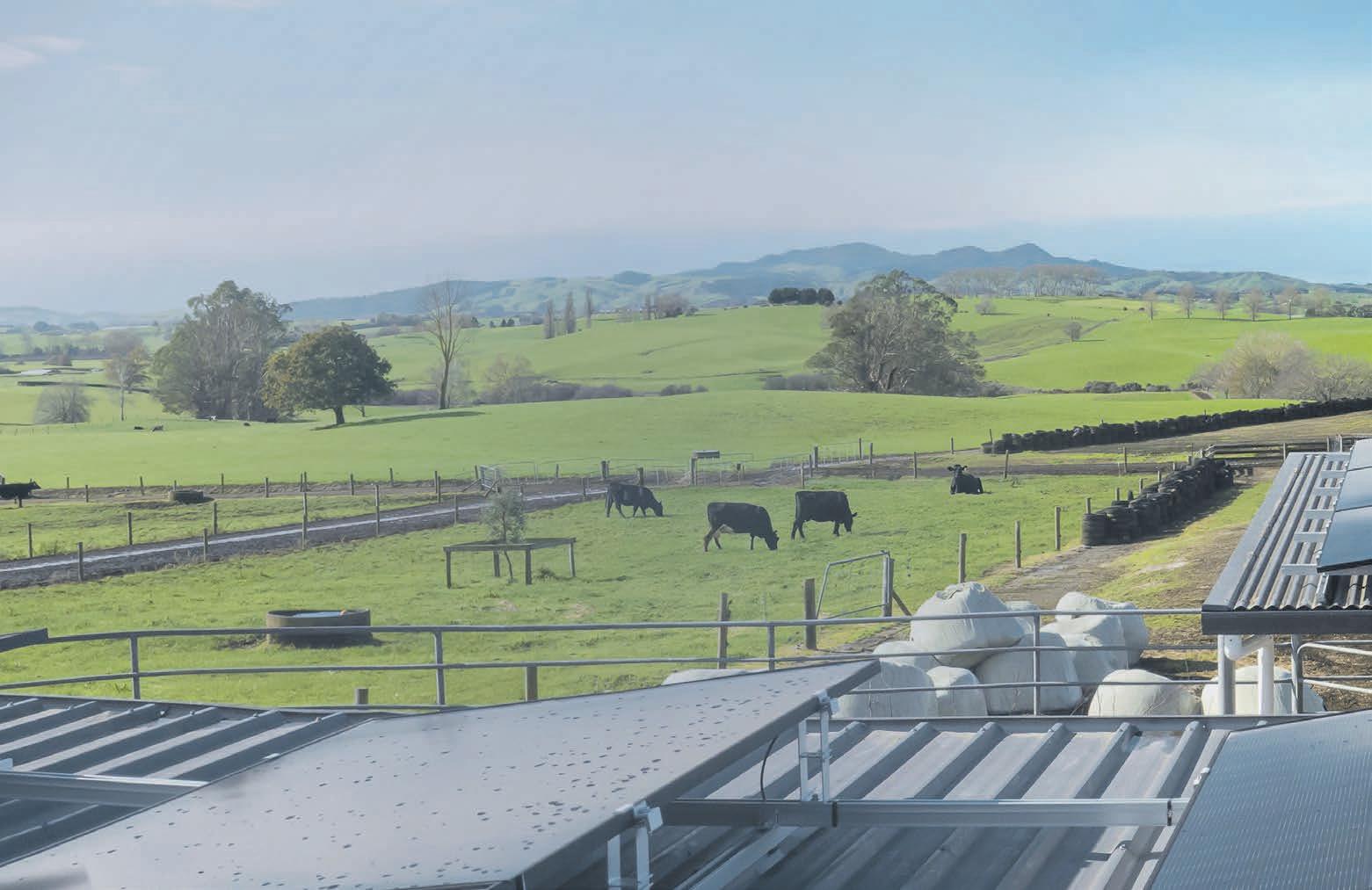
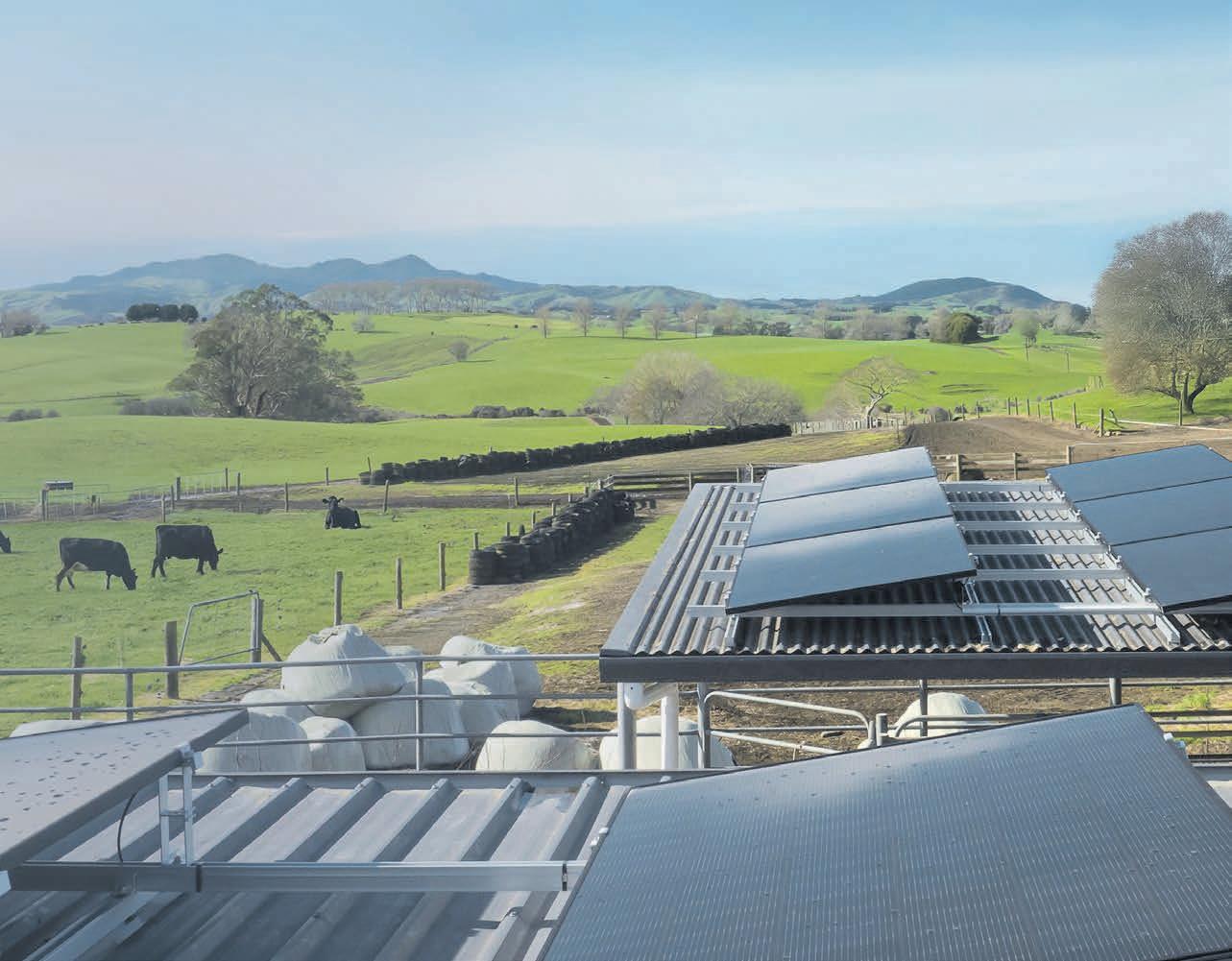
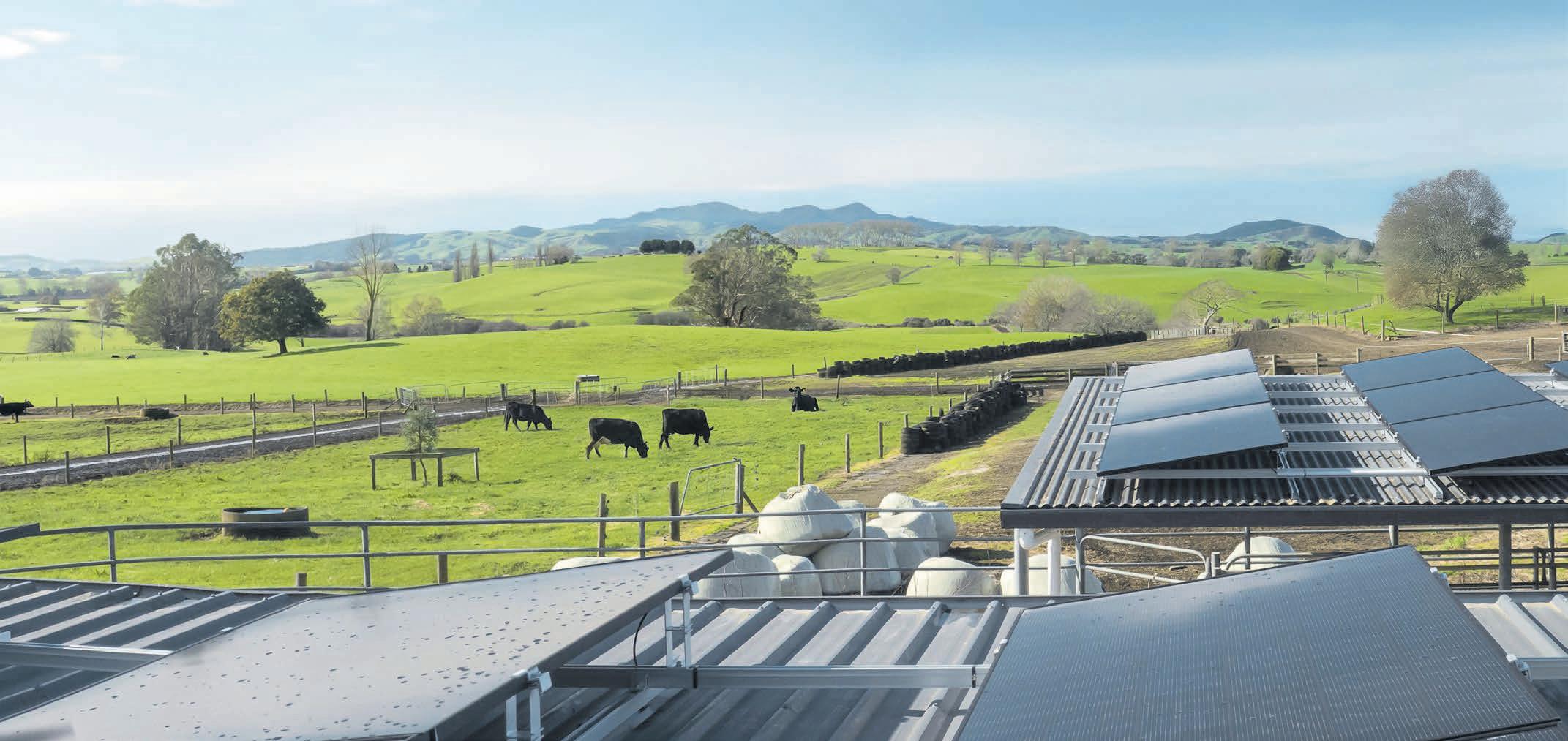


Photo: Annette Scott
Taking aim at a balanced life

Rebecca Greaves PEOPLE Hunting
YOU might clock Alice Sanders in heels, working in her professional career as a lawyer in Wānaka, but she’s equally likely to be found cutting the back steaks out of a deer she shot herself. As the pull to her family farming connections and the
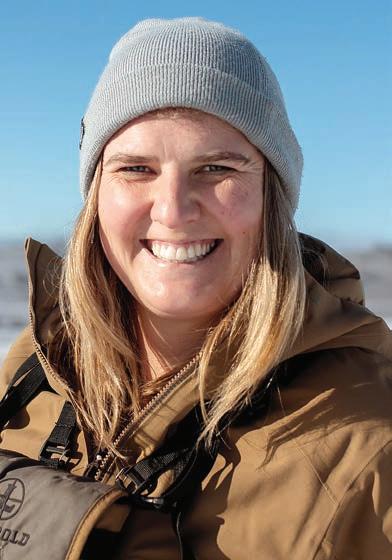
magic of central Otago called her home, Sanders built a life that balances the things she loves most – farming, hunting and her corporate career.
Mount Campbell Station is a high-country station in Alexandra, about 11,000 hectares, comprising a mix of pastoral lease and freehold land. The family run ultra fine Merino and Angus cattle, with the sought after wool sold into Italy and China, depending on the market.
The addition of irrigation has boosted productivity and allowed the family to graze dairy calves and heifers in winter.
Sanders counts herself lucky to work for a law firm that values flexibility and life outside of work. She works a nine-day fortnight, with one day a fortnight spent working on the farm. As well, she founded and runs Mount Campbell Hunting Club, offering learn-tohunt workshops, guided meat hunts and occasional trophy hunts.
An opportunity to learn to hunt first sparked the idea for the hunting club. Sanders got the bug and she wanted others to have the chance, and the confidence, to experience the freedom of being out on the hill and the thrill of taking an animal.
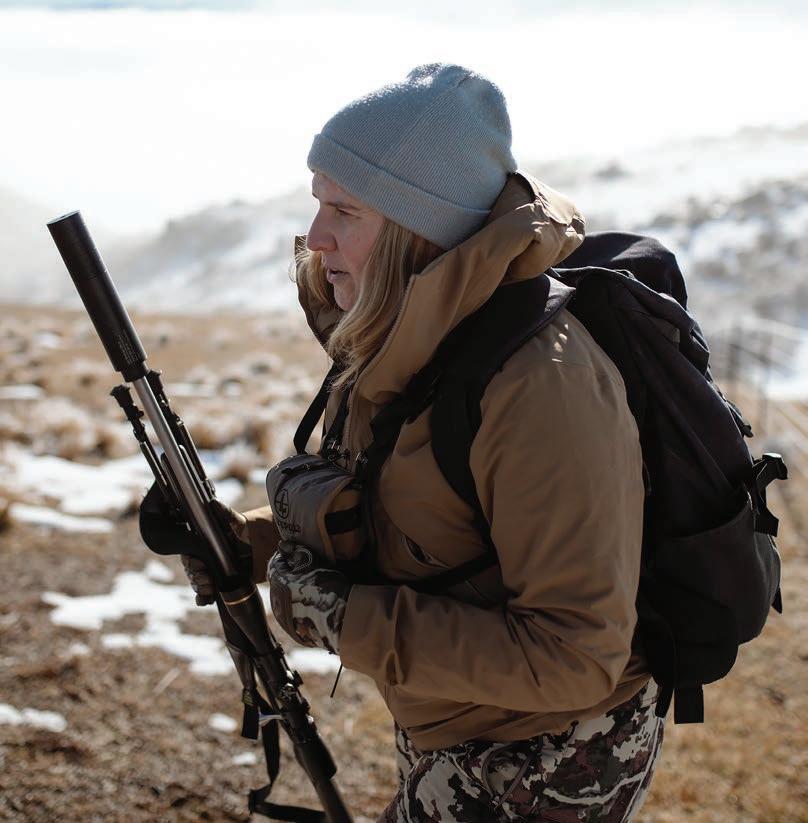
The family farm was the obvious place to host. With a plentiful supply of wild deer, it was the perfect on-farm diversification, using their natural resource.
“Hunting is one of the only things I’ve found where you are so present in your environment that everything else falls away. Whether you’re stalking or glassing, you’re so in tune with every movement and sound that it creates this silence, and a
camaraderie with other people that is really honest,” Sanders said. She recently added a Ladies Only Learn to Hunt offering and was surprised when it sold out immediately.
“I have to admit, I was a little bit hesitant, purely because I think girls can do anything and I don’t like to put women in a box. But what I have realised is it’s more about creating a supportive, safe learning environment that women
I need a life I love and I went out and created it.
Alice
Sanders Mount Campbell Station
can thrive in, ask questions and take time to get confident.
“Hunting can be quite intimidating, there’s firearms. I had a really positive learning-tohunt experience, but that’s not necessarily the case for everyone.”
Sanders said hunting is a form of meditation. And it opens up a whole new world to people.
“I didn’t set out to create a business. I set out to do something I love and share it with others. If I can get more people out creating bonds and community on the hill, back into nature instead of on their phone or stuck in a concrete jungle, that would be success.”
She admits it’s hard to find balance in her busy life.
“Striking balance is a foreign concept to me, and I definitely don’t always get it right. I do really have to dial in on my boundaries and make sure I’m getting enough rest, say no if things are getting a bit overwhelming. And I have a really good Google calendar with colour coding.
“Money can’t buy you all the things that will make you really happy. I need a life I love and I went out and created it. I could have spent my career in a high rise, but I would always have been replaceable.”
100 years on, Rural Women keen to reshape itself

RURAL Women New Zealand
has been an integral part of NZ’s rural landscape for 100 years and as the organisation honours the past it looks to embrace the future through a renewed lens.
“We have been strong for 100 years, now we must shape for the future; the direction periods of the past have been challenging but we have always adjusted and pivoted with the times,” RWNZ national president Sandra Matthews told the regional centennial conference in Ashburton.
“To be a relevant organisation into the future we must refocus on the needs of all rural women.
“Streamlining the current complex structure will make it easier to thrive in coming years, but the process of change needs to be well implemented and sustainable.”
Matthews said recent Cinta research findings showed RWNZ has limited presence and awareness among target members at local, regional and national level with need to “show and tell” around the organisation’s role and the impact it has in NZ’s rural landscape.
There is big opportunity to attract women in the 30-49 age group who are community leaders, and an opportunity to better use social media and online platforms as RWNZ adapts to audience needs and expectations.
“We don’t tell our stories that well, we do all this fantastic work, we are humble, but we don’t sing from the rooftops.”
Despite successive boards and councils working tirelessly to turn things around, membership has dropped from 30,000 in 1960, to 21,000 in 1972, to just 1690 today.
“Your current board is
We don’t tell our stories that well, we do all this fantastic work but we don’t sing from the rooftops.

continuing that journey with commitment and urgency to reverse that decline.
“Your voice, your experience and your ideas have been, and are vital to this, journey,” Matthews told the near 60 members at the conference.
Reimagining the structure and function for “another 100 years strong” will mean taking a good look from the top down.
A significant finding from the review was that the national office has long been under-resourced and under-invested in.
“The board has made the decision to restructure the national office with the intention of building an operation that is better resourced with the right team, tools and infrastructure to meet today’s needs.
“We need to be member and future focused, ensuring our services are relevant, responsive and aligned with our mission and charitable work.
“This restructure also enables us to reduce our reliance on our investment fund overtime, by increasing operational capability, attracting external funding and creating new revenue pathways to sustain RWNZ for future generations, which are not just rural on farm, but rural at heart.”
Rural Women began its journey in July 1925 during the Farmers Union conference in Wellington.
While the men attended sessions, a group of women gathered over afternoon tea,
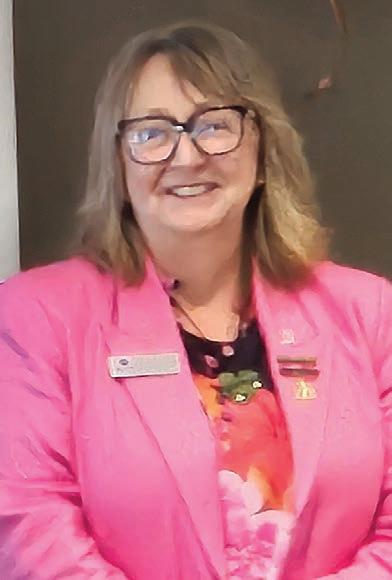
complex structure will make it easier to thrive in coming years.
listening to a talk about the stark realities of rural life, the isolation, health challenges and lack of support.
The next day the women decided to act and a group of 16 of them founded the Women’s Division of the Farmers Union, aiming to improve support systems for rural women.
By 1946 the organisation had evolved into the Women’s Division of Federated Farmers; in 1999 it took on the new identity of Rural Women NZ, symbolising independence and dedication to addressing the needs of modern rural women.
SHARING: Alice Sanders founded the Mount Campbell Hunting Club at her family’s high-country station to share her love of hunting with others.
Photos: Francine Boer
TALENTS: Alice Sanders is a lawyer, farmer and keen hunter based in Central Otago.
THRIVE: RWNZ national president Sandra Matthews says streamlining the current
Annette Scott NEWS Community
AT HEART: As RWNZ celebrates 100 years of impact, leadership and legacy, the organisation prepares to reshape to meet the needs of all ‘rural at heart’ women.
Sandra Matthews Rural Women New Zealand
Are you with us?
Be part of the growing community that has opted in to an annual voluntary subscription with us. Your support means more than you might realise. You’re backing more than just a 22-year-old newspaper, you’re backing belief, and we want you to know how much our entire team at Farmers Weekly would appreciate your support.
It’s become clear in the last few years that the era of quality, free community newspapers is over. That model is broken.
So we had two options:
1. We cut costs. We’ve already tightened our belts, but going further would mean fewer journalists, less content, and less support for the food and fibre sector. Cue the trolls on social media cheering on the slow death of the media.
2. We keep believing, and here’s what we believe:
• We believe in the need for a strong, independent farming media that reaches every farmer. In today’s world of algorithm-powered misinformation, that is more important now than ever.
• We believe everyone should have access to reliable market information and insight. Many of you tell us you turn to the business end of Farmers Weekly first.
• We believe the work of your advocacy groups should be visible to everyone. That’s why we partner with Federated Farmers and others.
• We believe in holding on to our team of seasoned agri-journalists, and employing and training new ones.
• We believe you value Farmers Weekly, both print and online.
While other media companies shrink their newsrooms, we’re determined not to, but we need your voluntary subscription. Already, 932 of you have started your voluntary subscription. Thank you! This support is why we continue to believe.
Farmers Weekly reaches more than 150,000 people online every month and lands in 74,000 rural letterboxes every week. We believe at least 8000 of you know it’s worth $2.50 a week, or $120 a year, fully tax-deductible. So become a Friend of Farmers Weekly and sign up to a voluntary subscription.
In return we’ll continue to deliver you, and every farmer in the country, the best value we can for your annual $120 voluntary subscription.
Please contact me at any time if you have any questions (or ideas on how we can reach our 8000 target any quicker!)

Dean
Williamson –
Publisher dean.williamson@agrihq.co.nz
– 027 323 9407
BECOME A VOLUNTARY SUBSCRIBER
Choose from the following three options:
Scan the QR code or go to www.farmersweekly.co.nz/donate


Start your voluntary annual subscription today. $120 for 12 months. This is a voluntary subscription for you, a rural letterbox-holder already receiving Farmers Weekly every week, free, and for those who read us online. Note: A GST
Email your name, postal address and phone number to: voluntarysub@farmersweekly.co.nz and we’ll send you an invoice Call us on 0800 85 25 80
subscriptions.


From the Editor
Grown in NZ, but owned overseas

Neal Wallace Senior reporter
THE list of New Zealand primary sector companies that have in recent years been sold to foreign buyers in part or as a whole, or that have a sale pending, includes some influential entities.
As Farmers Weekly reports this week, in the past 14 years six companies representing the core of our rural servicing, dairy, meat and horticulture industries have gained foreign owners or investors.
That list could soon number seven, with Alliance Group consulting on selling 65% of the company to Ireland’s Dawn Meats.
For Westland Milk, Silver Fern Farms, PGG Wrightson, Synlait and now Alliance, this was due to unserviceable debt and a reluctance by shareholders to invest new capital.
The Alliance Group board last week advised shareholders it supports selling 65% of the co-operative to Irish family-
LAST WEEK’S POLL RESULT
owned Dawn Meats for $250 million after shareholders earlier declined to inject new capital.
Two of these – Silver Fern Farms and Westland Milk – were, like Alliance, farmerowned co-operatives that had to look for offshore investors, and found them in Shanghai Maling and Yili respectively.
Pending is the sale of Mainland Group, which trades as Fonterra Brands in NZ and Australia.
Although not co-operatives, PGG Wrightson sold 44% of its business to Agria Corporation and Synlait 65% to Bright Dairy.
This seems to be an issue especially for co-operatives that are no longer viewed as an extension of the farm business, run and controlled by their members, that return surpluses to their members and meet their needs instead of maximising profit.
Why, many ask, should they own shares in a co-operative when they can have free access to any number of dairy or meat processors?
Farmer owned co-operatives in the 1950s and ’60s were used to break up the rule of the United Kingdom meat barons who dominated ownership of the meat industry. In the case of dairy, farmers have since 1871 owned the industry and are still its predominant owner.
Fonterra has successfully retained its co-operative status largely due to its
ALMOST three-quarters of respondents thought New Zealand was ill-equipped to deal with incursions of pests and diseases. One said our investment in science was a big part of the problem. “NZ’s commitment to science is underwhelming. We depend heavily on a biological economy that is purely based on the sciences of chemistry, biology and physics. Research and development in these sciences is critical.
“Our spending is low relative to other developed nations.”
Another highlighted the time it took to get new tools approved for use. “It takes too long to get approvals for new products. I think it is time the approval authorities concentrate on new products instead of approving yet another glyphosate-based brand product as NZ already has other brands available for sale. The market is flooded with them.”
Of those who thought we were well-positioned to meet the challenge, many thought that individual farmers were the key. “We have been controlling grass grub with a bacterium for many years and find it to be very effective. We include it in a solution with our fish fertiliser. There is absolutely no need for toxic chemicals.”
performance, but inconsistent profits by meat co-operatives have led to shareholder scepticism and reluctance to invest.
Surprisingly, while many baulk at allowing foreigners to buy farmland, they stay quiet when our dairy or meat processors are sold overseas.
This is not just a primary sector issue.
Access to capital within NZ is also tight for start-up businesses or for commercialising new products, compared the seemingly insatiable appetite investors have for property.
Directors have few options when faced with debt and recapitalising challenges, given their fiduciary obligation to act in the best interests of the company.
Farmers are rethinking their relationship with their off-farm processors at a time when many countries are prioritising food security.
Getting access to our food processing network may not provide volume, but it is a source of wholesome, quality and safe food and an enviable reputation that comes from “Grown in New Zealand”.
It appears to be largely business as usual for these foreign owners, with a few minor ructions.
But that could change for the meat industry when the elephant in the room, surplus processing capacity, is finally addressed.
Last week’s question:
Do you have confidence in NZ’s ability to combat pests and diseases such as grass grub?
Letters of the week We’ll keep ag drones aloft
James Meager
Associate
Transport Minister
EARLIER this week, I was alerted to concerns about proposed changes to New Zealand’s drone regulations, rightfully raised by those in the farming community who outlined it could bring unnecessary regulatory red tape to the sector and ground progress on the new and innovative tools being used to improve farm efficiency.
As the Associate Minister for Transport with a responsibility for aviation, I sought information from the Civil Aviation Authority to get to the bottom of this situation and seek assurances that our farmers won’t be stopped from undertaking low-risk activities in changes to Civil Aviation Rule Part 101.
I’m pleased to confirm the CAA has provided some context around this proposal.
The intention of the proposed changes to Rule Part 101 is to give clarity around agricultural spraying, which already requires certification under CAR Part 102 due to the hazardous nature of chemicals used in this process, as well as the extra training and oversight required with spraying.
The CAA has realised that the current drafting of this proposal would inadvertently prohibit drone surveying work, and some other basic farming operations that were not intended to be stopped.
Work is underway to refine this, to ensure that tasks such as surveying can continue under Part 101.
Any changes to these rules will need to be signed off by myself and I won’t agree to any that put an unnecessary and unreasonable burden on farmers.
Our government is committed to empowering our rural communities – not constraining them with red tape. I thank Dan Devine and Federated Farmers’ David Birkett for bringing this to my attention, and ensuring swift action could be taken to clarify the situation for everyone.
Best letter WINS a quality hiking knife
Send your letter to the Editor at Farmers Weekly P.0. Box 529, Feilding or email us at farmers.weekly@agrihq.co.nz

This week’s poll question (see page 3):
Do you think there are enough police in rural communities to keep people and property safe?
Have your say at farmersweekly.co.nz/poll
AI in agriculture? Computer says no
Eating the elephant
John Foley Foley lives near Lincoln in Canterbury and works in the seed industry
ARTIFICIAL intelligence, a technology once found in science fiction, is now becoming both ubiquitous and an everyday work tool. ChatGPT, Microsoft’s CoPilot, Google’s Gemini and Claude are just some examples.
One of the much-vaunted benefits of AI is its use as a decision support tool – packaging up data into recommendations that users can take or leave based on their critical thinking, expertise and human touch.
This gives AI users amazing potential to drive productivity in their businesses and even opportunities to solve some of humanity’s greatest challenges –whether it be in medical sciences, space exploration or climate change.
In agriculture, AI and its relative, augmented reality (AR), are starting to be employed at scale. These are primarily decision support tools that aid farmers and agronomists to monitor livestock and crops, optimise irrigation, pesticides and fertiliser use, and improve yields with precision farming technologies.
Critically, users require a high
degree of subject matter specialty to evaluate AI’s recommendations. AI in this context seems like a revolutionary tool. However, unrestrained AI could have serious implications for society. It is undoubtedly a disruptive technology, and a number of recent reports suggest we maybe sleepwalking into an existential crisis for our species.
Ten years ago, students were regarded as digital natives, having known nothing but smart phones at home and digital devices in schools. Today’s generation of students are similar – but for AI. This is where the risks begin.
If students become conditioned to being dictated to by AI, the allimportant critical thinking will not develop, and they will not have learnt the skills and knowledge to interpret the recommendations AI offers them.
There is evidence that this loss of common sense earned through human experience is happening.
There is evidence that this loss of common sense earned through human experience is happening. A recent MIT Media Lab study found that students using AI tools like ChatGPT to write essays exhibited decreased critical thinking skills, shorter attention spans and lower brain activity compared to those who didn’t use such tools.
Over time these students grew more dependent on AI, shifting from basic factchecking to copying and pasting entire sections of text. In other words, the study observed a measurable reduction in cognitive performance in the AI users’ group.
Imagine a time where we no longer see the challenges and rewards inherent in learning? What will the consequence of AI be on human endeavour when humans are no longer the source of new knowledge?
In 1962 John F Kennedy said of why the United States was choosing to go to the moon: “We choose to go to the moon in this decade and do the other things, not because they are easy, but because they are hard.” AI has the potential to end this type of ambition. As humans, we may find ourselves detached from meaningful work and purpose. Back to our farmers and agronomists. Major multinational agricultural companies and the tech giants themselves are investing heavily in AI & AR technologies: IBM’s Watson Decision Platform for Agriculture, Valmont’s Prospera, Corteva Agriscience’s Granular to name a few. These products offer increased efficiency and productivity to farmers – but at what cost? The loss of critical knowledge and expertise? The loss of local farming innovation? The

obsolescence of current farming enterprises such as the family farm?
Maybe the greater risk is a concentration of data and power into the hands of a few large players.
Imagine a scenario where global supply chain optimisation is only offered to global food manufacturers and distributors, with price structures to farmers across the world based on demand and supply scheduling: there wouldn’t be much room for increased value for NZ farmers.
Just like many other sectors, farming would become a landscape of winners and losers.
DUMBING DOWN: An over-reliance on AI is already being shown to erode the capacity for critical thinking, says John Foley.
This would accelerate the drive towards complete corporate farming and increase the influence of big multinationals and tech companies. Farmers would face a dilemma – participate to sell their products and have their data, story and practices “captured” by the owners of AI tools, or stay out and lose markets and opportunities. Those who stay out will be farmers without the tools and knowledge to compete in an increasingly tech-driven industry, and they will eventually be displaced.
This doesn’t seem like science fiction, it could be the stuff of nightmares.
Butter: we’re all wearing the same jersey
In my view
Sir Henry van der Heyden
Fonterra chair from 2002 to 2012, Foodstuffs North Island director and Fonterra supplier
I’VE been watching the recent butter debate in New Zealand with a mix of determination, frustration and déjà vu. Determination, because it’s clear we need to find ways to keep one of our most iconic staples within reach for Kiwi households. Frustration, because the conversation has quickly turned into farmers versus supermarkets when the truth is, we’re all supposed to be on the same team. And déjà vu, because I’ve seen this dynamic before, in both paddocks and boardrooms.
Right now, supermarkets –including Foodstuffs – are using butter as a “loss leader”, selling it at a price lower than what it costs us to buy in, purely to help customers under pressure. It’s not a marketing gimmick.
It’s a way to ease the strain for households facing tough budgets. The flip side is that it’s not sustainable forever, and it puts heat on other parts of the value chain.
As a farmer and as former Fonterra chair, I know exactly what high butter prices mean on the
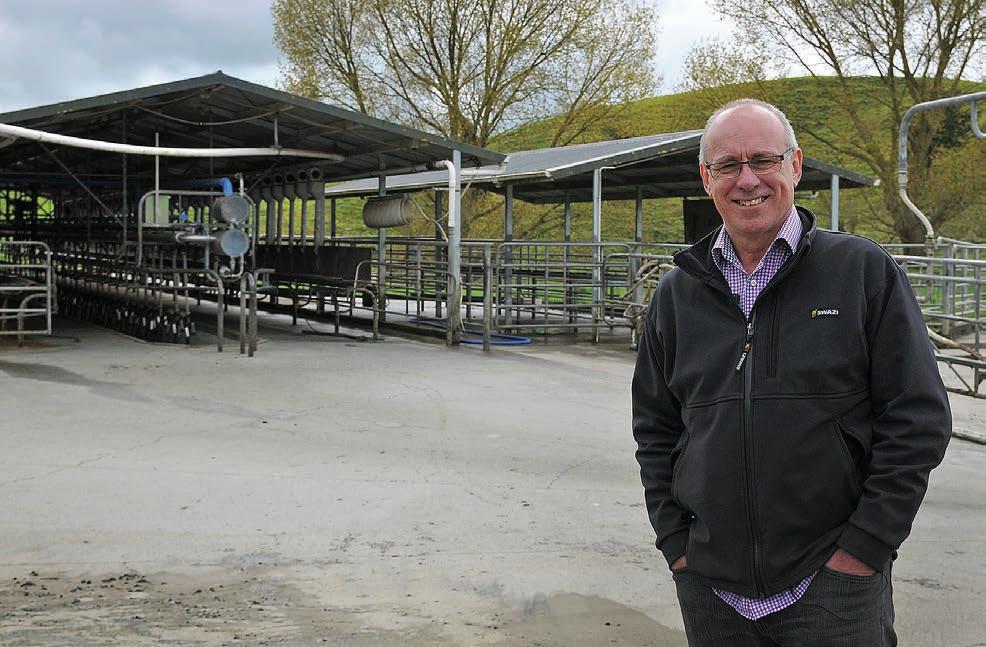
land. I’ll never forget the seasons when a lift in global dairy prices felt like a well-deserved try under the posts – the result of years of hard work, tough calls, and a fair bit of luck with the weather. But I also remember that those same prices can feel like a yellow card against the home crowd when they translate to bigger grocery bills. This is where we can take a lesson from our national game. Farmers are the forward pack, doing the hard graft in all conditions, fighting for every inch of progress. Fonterra is like the distributor, deciding when to kick for territory by absorbing price
changes and when to spread it wide to the backs.
Supermarkets are part of that backline, getting the product into the hands of New Zealanders and making the last pass before the try is scored. Shoppers are both the try-scorers and the home crowd – their enthusiasm, loyalty and support at the checkout keep the whole game alive.
When everyone’s in sync, it’s magic. But when the pack, the distributor and the backs start blaming each other for the scoreboard, we lose momentum.
While we’re arguing among ourselves, the real opposition
SHARED GOALS:
Under the silver fern of NZ Inc, says Sir Henry van der Heyden, we all want ‘thriving farms, profitable businesses, and families who can afford to put quality food on the table’.
– global competitors who’d be more than happy to intercept our export markets and even our domestic shelves – are watching for weaknesses to exploit.
Butter is a good example of a win that isn’t easy. To get it to the shelf at a more affordable price right now, some parts of the team are taking bigger hits than others. Supermarkets are taking the immediate financial knock; farmers have already weathered seasons of fluctuating payouts and rising on-farm costs; consumers are still juggling household budgets under pressure. But there’s a bigger picture.
Farmers are the backbone of rural communities, supermarkets keep thousands of local people employed, and shoppers keep the whole system turning over by choosing to buy local.
The point is, we’re not opponents. We’re all wearing the same jersey – the silver fern of “OneNZInc”. We want thriving farms, profitable businesses, and families who can afford to put quality food on the table.
That means recognising that sometimes you’re in the ruck, sometimes you’re in the clear, and sometimes you’re just holding the line so someone else can make a break.
Butter prices will rise and fall. Weather will turn good and bad. Markets will open and close. The only constant we can control is how we choose to play together. If we can resist the temptation to see each other as the problem and instead see each other as teammates, then every win –whether it’s in a paddock, a store, or a kitchen – is a win for all of us. In rugby, the scoreboard only matters at full-time. In the food game, the final whistle never blows, but the principle is the same: play hard, play fair, and play for each other.

Sector Focus
Purchase nets access to top Wagyu genetics

OUTHERN Stations
SWagyu has access to some of New Zealand’s most elite genetics for marbling, growth rates and calving ease following its purchase of Brownrigg Agriculture’s stud, Wagyu Breeders Ltd.
SSW general manager Rob Earl said that, having bought genetics off WBL in the past – and seeing how well they worked in their system – purchasing the business was an easy decision to make.
Earl said he has an enormous amount of respect for what company co-owner David Brownrigg and his team have achieved with the stud.
It was founded in the mid-1990s, when Wagyu genetics became available outside of Japan, prior to its government preventing this.
Brownrigg was an early adopter of the Japanese breed, partnering with a Japanese cattle farmer and pioneering airfreight live exports of Wagyu calves back to Japan, Earl said.
“Brownrigg have got some of those early genetics and built on that over 30 years.
“They essentially started Wagyu farming in New Zealand and grew one of the longest running Wagyu studs outside Japan ... this stud has been developed with a lot of effort and investment in genomics and making sure they were breeding the right Wagyu to mate over

dairy to get the best results.”
Those genetics include soughtafter traits such as calving ease, growth rates, marbling and gestation length.
“We bought the stud because so much work has gone into selecting for high growth rates because there is no point in getting a premium if it takes ages to get there,” Earl said.
Brownrigg Agriculture owner David Brownrigg said the business divested its 30-year-old Wagyu stud after making the decision to simplify its livestock operation to the core lamb and cattle finishing enterprises.
“We are very pleased that our stud will remain in New Zealand in the hands of Southern Stations Wagyu. They have developed a
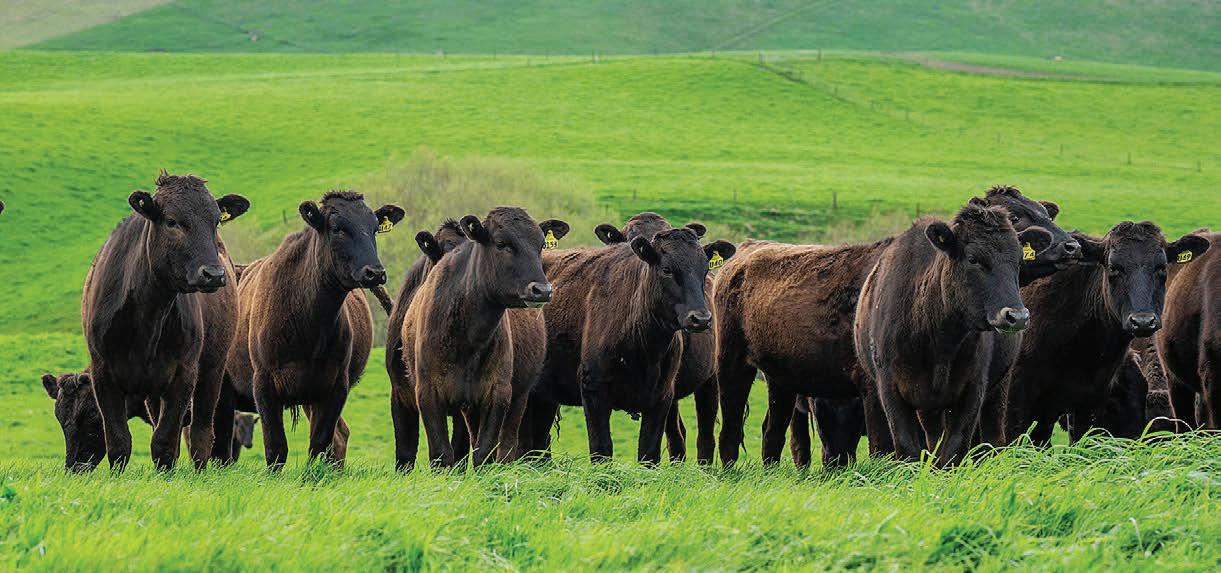
proven and uniquely New Zealand Wagyu production system and their results from our genetics drove the purchase.”
SSW is well placed to drive continued improvement in Wagyu genetics, for the benefit of the farming sector and New Zealand beef exports, he said.
The sale of WBL to SSW was finalised earlier this year.
Now in its eighth season, South
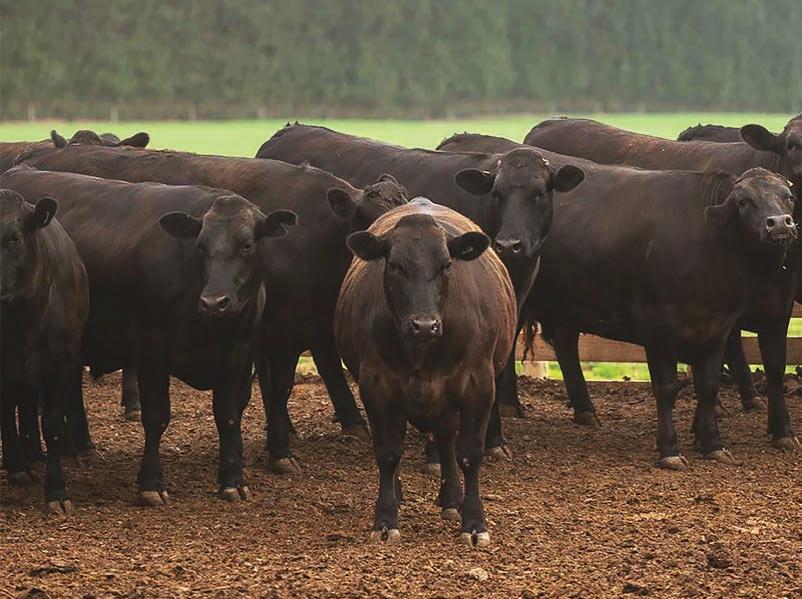
Island-based SSW sells semen mostly to the dairy market for farmers to mate with their nonreplacement cows.
The cows required by SSW range from a J8 to an F16 – which is anything from a 50% to a 100% Friesian. SSW’s genomics, mating plans and EBV data are managed by AbacusBio, allowing dairy farmers to target the best traits needed to produce an optimum calf.
Brownrigg essentially started Wagyu farming in New Zealand and grew one of the longest running Wagyu studs outside Japan.
Rob Earl Southern Stations Wagyu
“Marbling is the important thing about Wagyu and it’s a maternal trait, and dairy are really high marbling animals.
“Dairy is a really strong base for eating quality – and if you cross it with Wagyu, you are getting something that is exceptional quality beef,” Earl said.
SSW have both semen and service bulls for dairy farmers for mating with their nonreplacement cows. The calves that are born are DNA verified and the farmer either sells the calves to a rearer who grows them to a weaning weight or the farmer grows them themselves.
SSW then buy the calves at weaning (100-150kg) and they are grazed by finishers who are paid on a weight gain basis.
SSW has longstanding contracts with these finishers, who are located across the South Island. At 550kg, the cattle are taken and finished for 100 days on grain in SSW’s indoor composting barn complex in Mid Canterbury. This helps express marbling, gets a better product consistency and gets the animals to the desired carcase size, Earl said.
The cattle are killed at 24-36 months old to ensure an even spread throughout the year, with the carcase weight averaging around 400kg, across steers and heifers.
The resulting F1 (first cross) Wagyu meat is then sold on the global market by Australian partner Endeavour Meats.
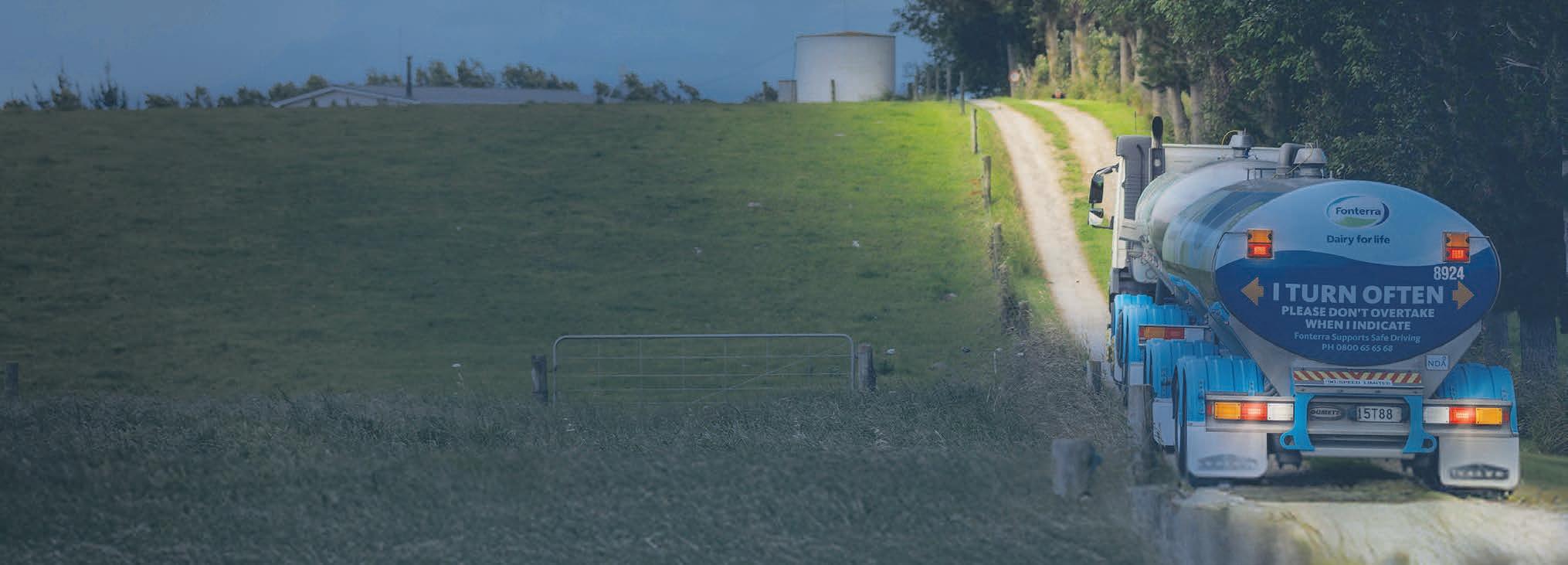

Gerald Piddock NEWS Breeding
CROSS: Some of SSW’s grain-fed Wagyu-dairy cross cattle at the company’s feedlot facility.
REAL DEAL: SSW general manager Rob Earl said that, having bought genetics off Wagyu Breeders Ltd in the past, purchasing the business was an easy decision to make.
Working to bridge the technology gap
Sector perspective
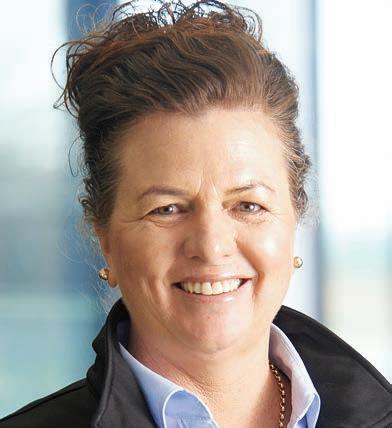
IN FARMING there is a job to be done in bridging the gap between what’s possible now and what needs to be achieved in the future based on what’s most likely to happen.
It’s why we’re a sector of innovation and quick adoption.
That’s been apparent across the evolution of New Zealand dairy through three key eras of development and change: firstly growth (and the era of widespread dairy conversions), then sustainability and responsibility (the focus of the last one to two decades), and now, technology and data, to enable growth that is also sustainable and responsible.
But what is it about this latest era of accelerating technological advance that dairy farmers really need to know about?
A 10-year global outlook for agriculture has recently been published by the OECD and FAO.
It describes the next decade as one where more people are eating more animal products, driven by rising incomes.
There will be more exports, with 22% of all calories crossing international borders. Agricultural production increases
by 14% due to productivity gains. And butter prices remain high.
All good news for NZ (depending on your view on the cost of butter).
But it also suggests that real agricultural commodity prices will fall in the medium term due to those productivity gains – and that while emissions intensity will decline for the same reason, we need to keep an eye on total emissions.
That places greater importance on the adoption of innovative technologies to reduce the risk of declining prices and environmental performance.
In fact the different rates of technology adoption around the world are named as a key risk for agriculture, alongside the more well-known risks of climate change, geopolitics and environmental regulation.
Here at home, New Zealand dairy farmers have been steadily investing in more technology on farm, in particular to help with automation in the dairy shed and herd management.
The different rates of technology adoption around the world are named as a key risk for agriculture.
Our last Technology Survey report, in 2023, said wearable technology had had the greatest uptake since 2018, with 16% of farms reporting using wearable technology, compared to just 3% in 2018.
It’s a report usually done every five years but we’re looking to increase that frequency given the interest and uptake of tech across dairy farms. We’re also doing the work to look at the benefits, (or not), of new tech. For example, recent DairyNZ wearables research indicates that farmers who automated mating with wearables reduced some labour or reliance on
key staff, without compromising reproductive performance.
As we look to the future, the government has signalled that farmers can expect new technologies to reduce methane without negatively impacting production or profitability.
These include the likes of lowemissions breeding, vaccines, probiotic treatments, bolus products (although not for lactating animals at this point), and potentially even a UV light treatment for ryegrass seed that triggers higher productivity and lower emissions (to be clear, this is not a gene technology).
The significant investment in these tools, with the government partnering with companies through AgriZeroNZ, means some may be available as early as next year.
We are told this is what people want – lower emissions food – but the new tools to achieve that are still new and unfamiliar. While as farmers we are committed to reducing our footprint, we also need to ensure innovation is balanced with public trust.
DairyNZ does its work in testing and evaluating these tools under NZ conditions – to ensure they’re safe for animals and farmers to use, and accepted by customers in our export markets.
On behalf of farmers we’re also advocating on policy settings, as we edge closer to government decisions around methane and freshwater.
Meanwhile, the tech doesn’t stop the work underway to support farmers on the options they have now to influence emissions –and we have recently published results about the importance of homegrown feed, which also supports profitability.
We know farmers face a lot of emerging tech opportunities, that the set-up costs can be high, and that it can be hard to make sense of it all.
No two farms are the same, so

our advice would be to consider and balance what the need is for your farm; what a successful outcome looks like (reduced labour, happier staff, productivity gains, stronger profit margins, reduced environmental footprint); the financial cost; and what you need on your individual farm
to make this tech work.
The OECD-FAO has one picture of what’s possible with the dual outcomes of increased productivity gains and uptake of emissions reduction tech.
The eradication of undernourishment globally. That seems to be a gap worth bridging.
Yili companies thrive
Staff reporter NEWS Dairy
SIGNIFICANT year-on-year growth for the first half of the year has put Yili Group-owned dairy companies operating in New Zealand on track for strong revenue growth in 2025.
Westland Milk Products and Oceania Dairy have posted combined unaudited revenue growth of 16% compared to the same period last year. Before-tax profit growth for the first half of 2025 is 12%.
Executive director Zhiqiang Li
said profitability is expected to continue to climb for both companies well into 2026.
“Production capacity of highdemand, high-value products across Westland’s Hokitika and Rolleston sites and ODL’s Glenavy facility have undergone significant investment to capitalise on surging global demand for high-quality dairy products.”
Li said both Westland and ODL, which since 2024 have also operated under a co- operative external sales arrangement, are well positioned to build revenue growth off the back of increased production capacity.


Tracy Brown Brown is chair of DairyNZ
TESTING: The government has signalled that farmers can expect new technologies to reduce methane without negatively impacting production or profitability. DairyNZ’s Lye Farm has been measuring methane.
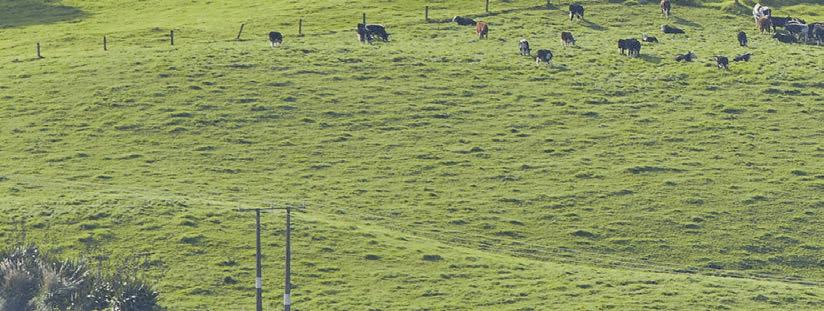






Smarter sprin


g planning for stronger performance
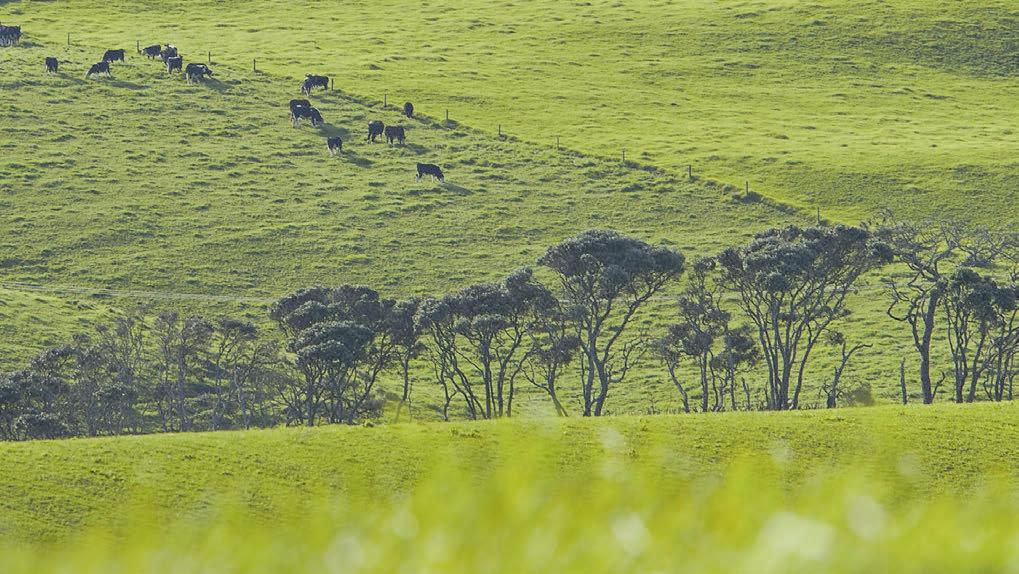
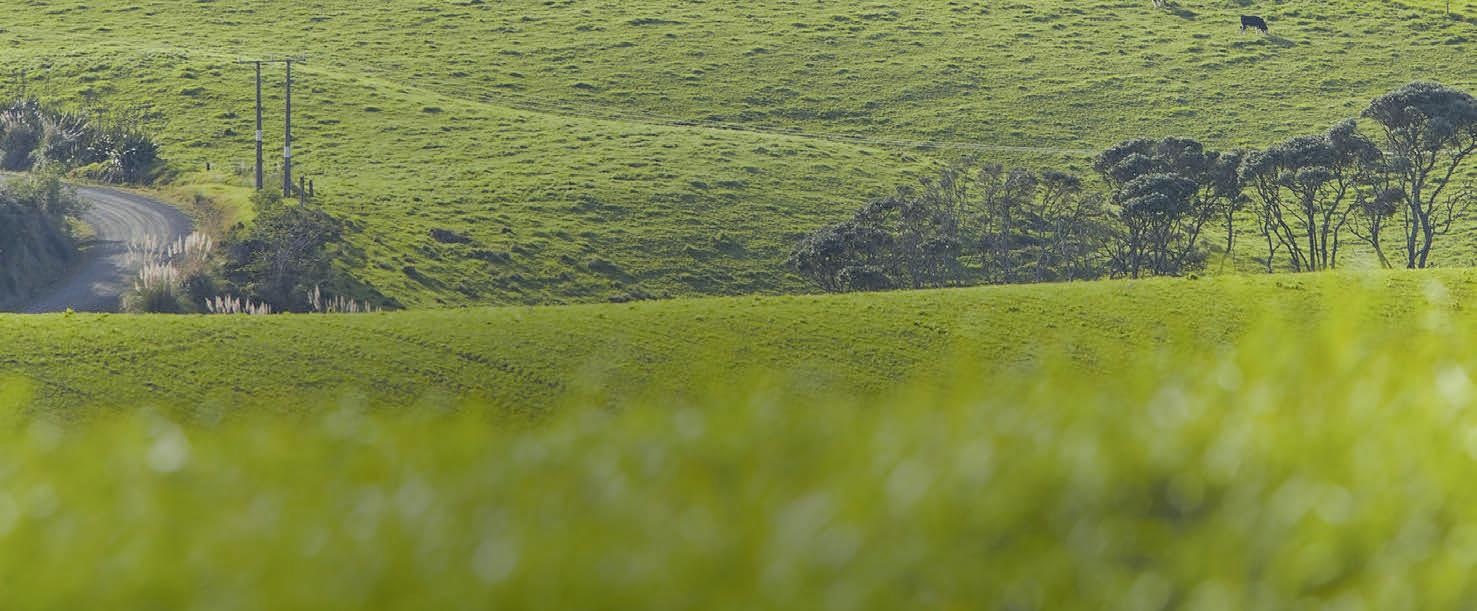
With winter nearly over, the months ahead present a critical window to set up your farm for a produc tive and profi table year. Spring is a season of oppor tunit y — but to make the most of it , proac tive planning and sharp execution are essential .
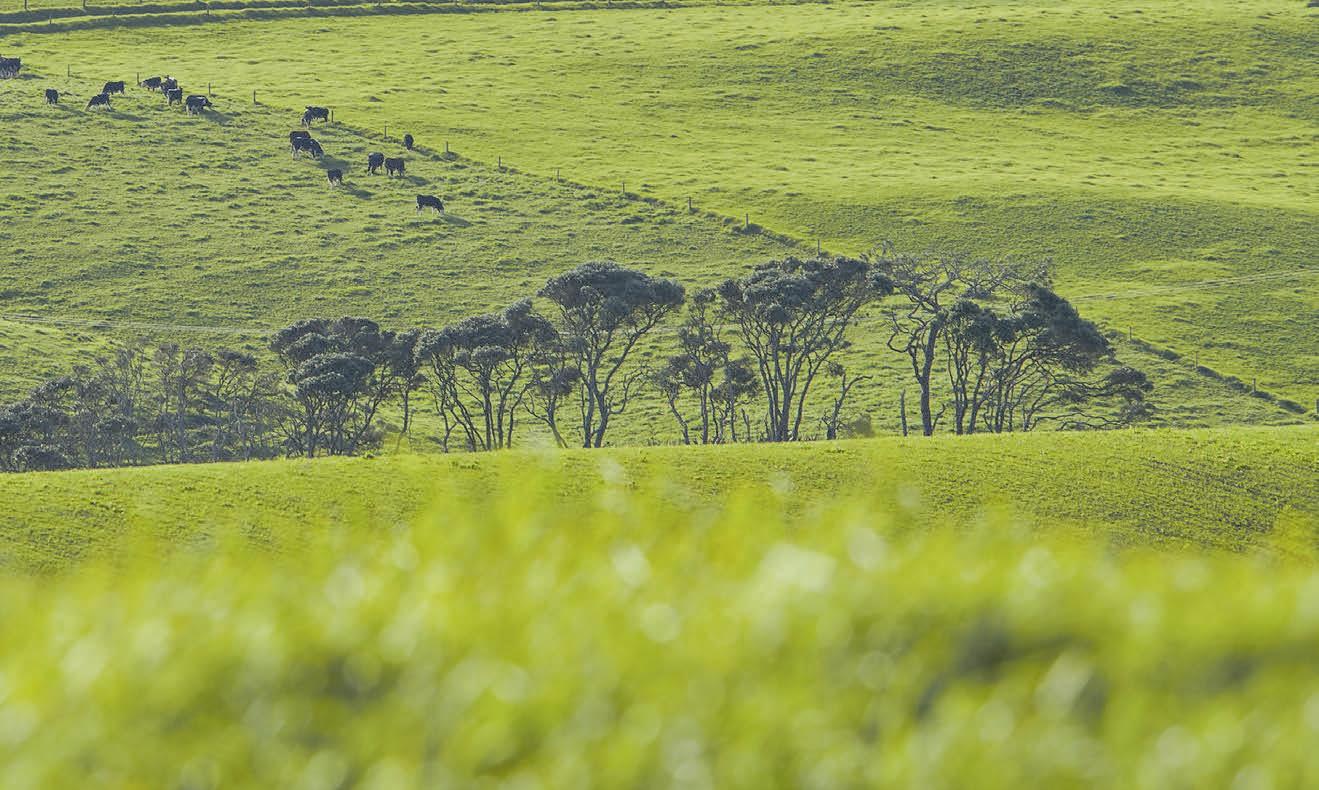
effec tively to feed surpluses or shor tages maximising pasture utilisation and supplement use
Grazing timing mat ter s too



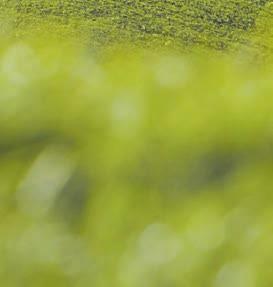

That ’ s why D air yNZ has developed a suite of spring tool s and resources to help farmer s fine -tune their systems and lif t results across feed, cow health, reproduc tion and infrastruc ture
The realit y is that the decisions made over the nex t few months can have flow- on effec t s across the entire season From how you manage your pasture and prevent animal health issues to how you prepare your herd for mating, a smar t spring sets the tone for the rest of the year
Feed: make ever y blade count
Early spring pasture grow th can be unpredic table, making regular pasture walk s and feed budgeting invaluable Using tool s like D air yNZ’s Spring Rotation Planner helps you manage pasture qualit y and quantit y as you move through calving and into the lead-up to mating With grass grow th of ten fluc tuating in August and September, having a clear plan helps you respond quickly and
Aiming for your r yegrass to reach the 2 5 –3 leaf stage, while sticking to the right rotation length and residual s, suppor ts greater feed grow th throughout the season Grazing too early can hamper regrow th and increase supplement costs down the line
Cow health: prevention beats cure
Cow care is especially impor tant through calving and the week s that follow D own cows remain a concern on many farms, yet they ’ re of ten preventable with the right mineral management and feeding strategies par ticularly around calcium and magnesium supplementation
When cases do occur, having a clear, well- communicated plan for treatment and recover y helps ensure animal welfare and reduces longterm impac ts Team training, easy access to supplies like metabolic bags, and good communication can all make a major difference
Lameness is another springtime challenge that needs to be

tackled head- on It ’ s not just an animal welfare issue it al so affec ts produc tion and reproduc tion Early identification and treatment, effec tive trimming, and good stock handling prac tices are key This spring, take the oppor tunit y to assess and upgrade infrastruc ture where needed, and invest time in training your team to spot the early signs of lameness Early treatment can avoid antibiotic inter vention and milk discarded from supply vat improving profit from increased income and reduced costs
Spring is al so a key time to manage biosecurit y risk s With bull s moving bet ween farms and increased stock movement, the risk of Bovine Viral Diarrhoea (BVD) rises The impac t of BVD can be serious causing reproduc tive losses, lowered milk produc tion and reduced grow th rates in young stock For tunately, it ’ s al so manageable Testing your herd and any incoming animal s is a small investment that can protec t your produc tivit y and bot tom line
Reproduction: set up for in- calf success
Effec tive heat detec tion is the corner stone of good reproduc tive per formance Each heat successfully detec ted and inseminated not only
our proven strategies and seasonal tools to work
production, suppor t animal health and watch your profits hum
Take a look at dair ynz .co.nz/spring

boosts the 6 -week in- calf rate but al so contributes to more days in milk before summer and more time to increase cow body condition heading into the nex t calving
With mating around the corner, now is the time to review your team’s heat- detec tion approach and run training to help less experienced staff learn from other s, improving accurac y and set ting up for a successful mating season
D air yNZ’s InCalf reproduc tion gap calculator is a helpful tool to identif y areas where heat detec tion may be costing you
Let ’s make this spring count
Spring is a demanding time, but it ’ s al so full of potential By put ting the right systems in place now focusing on pasture management, cow care, lameness prevention, reproduc tion, and biosecurit y you ’ re giving your farm the best chance for success throughout the whole se ason
To suppor t your spring planning, D air yNZ’s online Spring Toolbox offer s tips and prac tical tool s designed to help you and your team work smar ter, not harder

Mark Williams Dair yNZ farm systems specialist
Succession failure endangers family farms

Richard Rennie NEWS Succession
LIKE bubbles behind the cork in a bottle, the pressure for farmers to address farm succession threatens to pop within the next decade as more ageing farmers seek to exit.
Southland farmer Peter Templeton, who studied the issue for his Nuffield scholarship, said the rate of transition to the next generation for family farms is only half what it should be, leaving the institution’s future vulnerable.
Templeton said recent estimates by Rabobank that only one in three farmers have a succession plan seem overly optimistic.
“In fact, I would put it closer to 25-28% based on what I saw both locally and globally doing my Nuffield.”
But the surge in ageing farmer demographics, that lack of planning, and a younger generation with multiple career pathways ahead of them add urgency to achieving the transition.
Estimates are 17,000 farms need to transition in the next decade, but in reality farms are moving down the generational line at only half that rate.
“And I think the number needed to move is higher, nearer 24,000.”
Even if the 17,000 were correct, a doubling from the present number to achieve that would put enormous stress on professional services and resources needed to get them over the line.
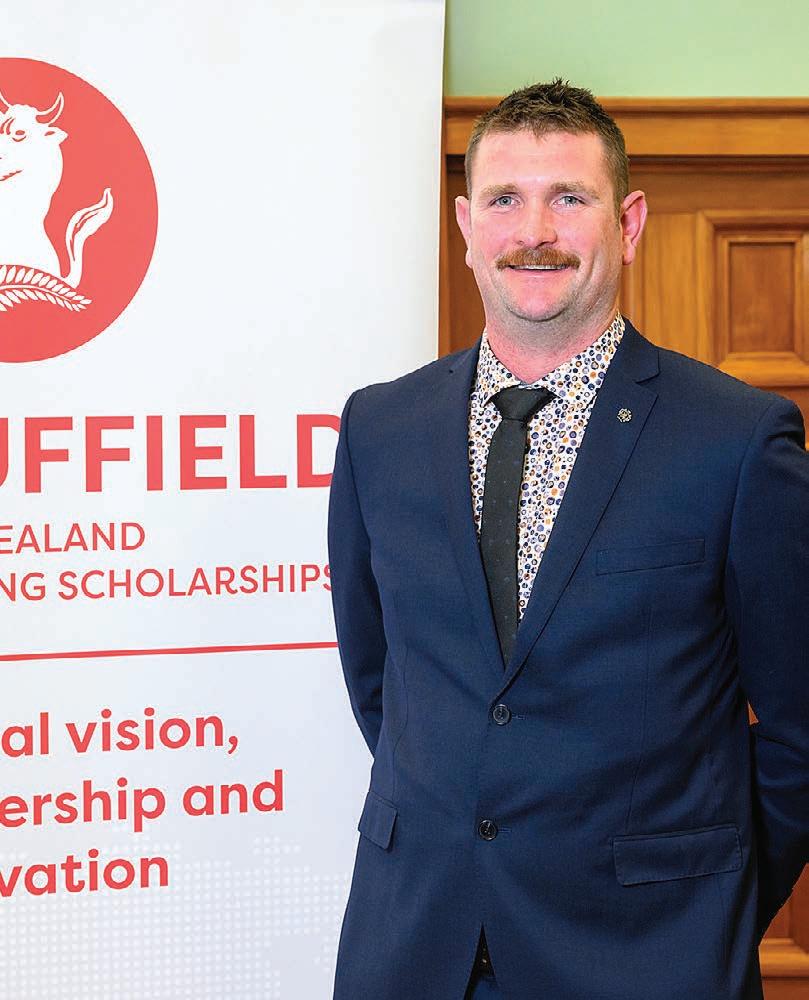
lending methods, family farms risk being lost to big corporate owners in a very short period of time.
“We simply do not have the capacity to achieve that at present.”
Tried and true pathways of equity accumulation to help one generation buy out the other are proving less capable of
building the cash necessary. Templeton points out that between 2005 and 2025 the ratio of farm value to farm manager salary more than doubled.
The average dairy farm is now valued at 65 times the annual farm
manager salary, and it will take 60 years of salary savings to afford a deposit under standard banking criteria.
Travelling around the world, he found similar gaps in succession ability, and varied approaches to try to deal with transition.
“In the Midwest United States there has been the rise of the ‘family corporation’ model, particularly on dairy farms in Wisconsin.
“That corporate model seemed to work well for generation one and two, but I felt risked falling apart by generation three.”
Family shareholder numbers get pushed up significantly, meaning pressure to generate a meaningful amount for each shareholder increases significantly.
“I saw many doing it (generating higher return) but would question how long that was sustainable for.”
From his Nuffield study
Templeton has put forward a suite of options farming families could consider.
They range from share-farming agreements to equity partnerships, lease-to-buy agreements and even crowd-funded agreements he witnessed in Europe.
But regardless of option, all are built on some fundamentals, including early planning, incorporating family at a young age without necessarily meaning they must “come home”.
Creating a formal succession structure, and seeking skilled external help prior to the first family meeting are also essential.
But Templeton said these aside, if the farm is not a profitable business to start with it is unlikely to survive any transition re-modelling.
There is also a need for financial institutions to incentivise constructive transition, recognising the role stock and plant assets play as loan security, with a lower risk lens.
That corporate model seemed to work well for generation one and two, but I felt risked falling apart by generation three.
Peter Templeton Nuffield Scholar
Without constructive support behind the farm gate and beyond, Templeton said, there is the danger young, capable operators will remain stuck in management roles, unable to advance to ownership, and possibly be lost to the sector.
The other risk is wholesale corporatisation of farms in New Zealand, taking profits out of the district or even offshore.
“Either way, the losers are the 65-plus farmers wanting to exit.”
He admits coming back from his Nuffield work slightly deflated.
“But in the last year I am now thinking there has never been a better time to be family farming. We just need to change the pathways to how they can do that.”
People power and efficiency drive dairy farming

THE top 20% of Waikato dairy farmers are maintaining their excellence by using great people who are great managers across all aspects of their business, an AgFirst study says.
Based on information from DairyNZ’s DairyBase, the study found that these top performers are also highly efficient farmers who are always striving to find extra gains from a production standpoint.
Unless you have got the top managers and they are well equipped to do what they need to do, it’s not going to happen.
James Allen AgFirst
In presenting the findings at the Waikato Innovation Park in Ruakura, AgFirst CEO James Allen said he is “utterly convinced” that it is the people running these farms who make the difference.
“You can have the best infrastructure, the best farms, the potential to grow a lot of grass, but unless you have got the
top managers and they are well equipped to do what they need to do, it’s not going to happen.”
Efficiency is another factor. The top farms are always striving to be more efficient from a production perspective.
The top 20% of farmers are also growing an extra 3 tonnes of pasture crop per hectare compared to an average farm. As a result, they need extra cows.
While these farms have a higher stocking rate, they are not overstocked.
There are also top operators who are very good grass managers, who run highly efficient farms with a low stocking rate.
“You need to manage your pasture well, and if you’re growing a lot of grass, what’s the right balance to harvest that grass?”
That came back to planning –knowing their numbers and not relying on averages – and there are plenty of tools available to do that now.
The amount of feed coming onto farms has increased enormously. Some of this is substituting for poorer management as well as a result of farmers changing their systems.
“What you are seeing in the top 20% is that, yes, they are putting more feed in, but they are utilising it really well.”
This resulted in these farms being more efficient, he said.
“They are growing more grass, they are harvesting more grass, they have more production per hectare, they are more efficient in what they are doing.”
It equates to an extra $4000 per hectare and higher profitability, he said.
“The top 20%, they are doing well, and we should celebrate that.”
A lot of small 5% wins can also make a difference. For a 200,000kg MS farm on a $9/kg MS payout with $6.50kg MS farm working costs, increasing production and costs each by 5% led to a 31% lift in profit, he said.
While all dairy farmers can aspire to be in that top 20%, becoming more feed efficient is key before looking to intensify, he said.
“It comes back to no matter what systems you’re into, maximise that home-grown feed. Until you have that nailed, I wouldn’t be going to a more intense system.”
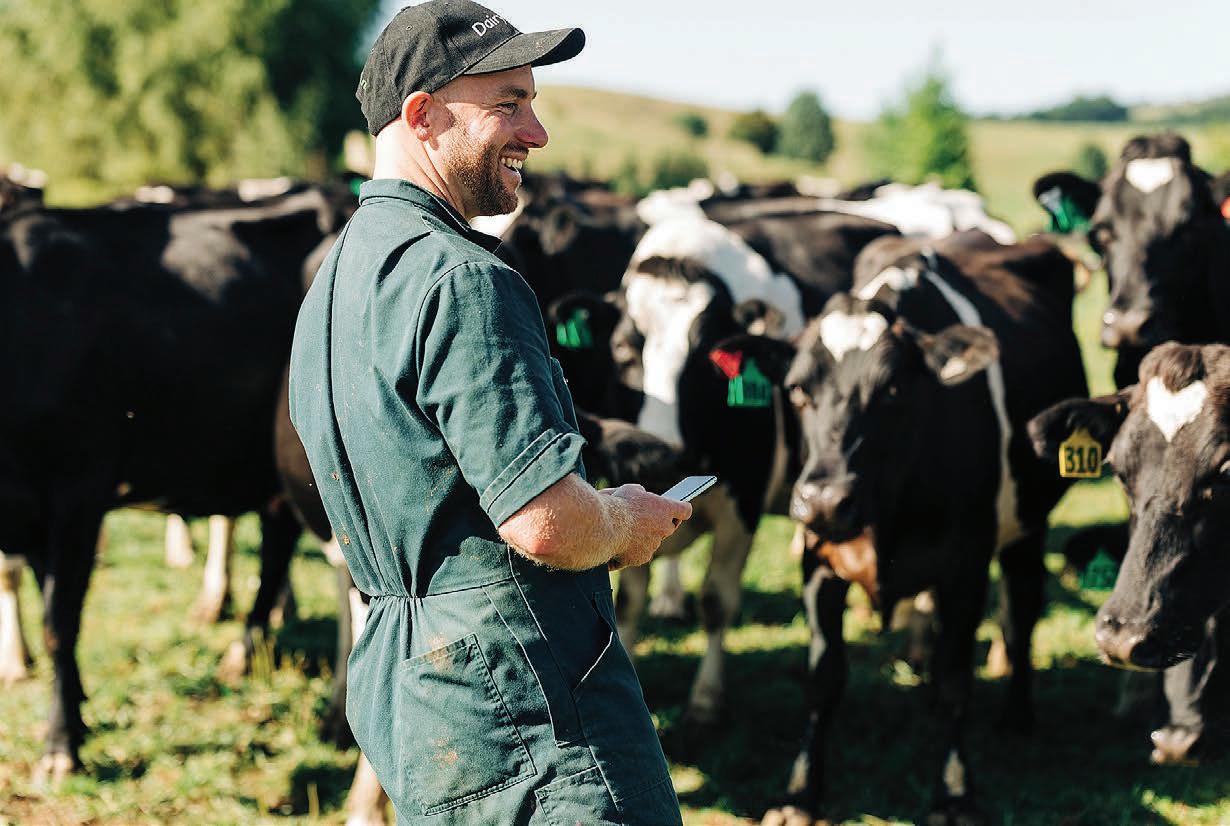
PATHWAY: Southland dairy farmer and Nuffield Scholar Peter Templeton says without new ownership models and shifts in financiers’
Gerald Piddock NEWS Dairy
PEOPLE POWER: Waikato’s top 20% of dairy farmers are great people managers and efficient operators.
Get more beet for your buck


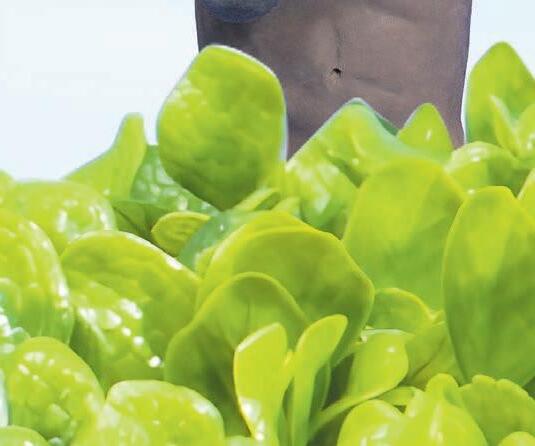

RGT BRIGADIER
RGT 1505BV
RGT Brigadier is huge with the most bulb above ground.
RGT 1505Bv grows high yields of nutritious feed to graze.
ORDER NOW

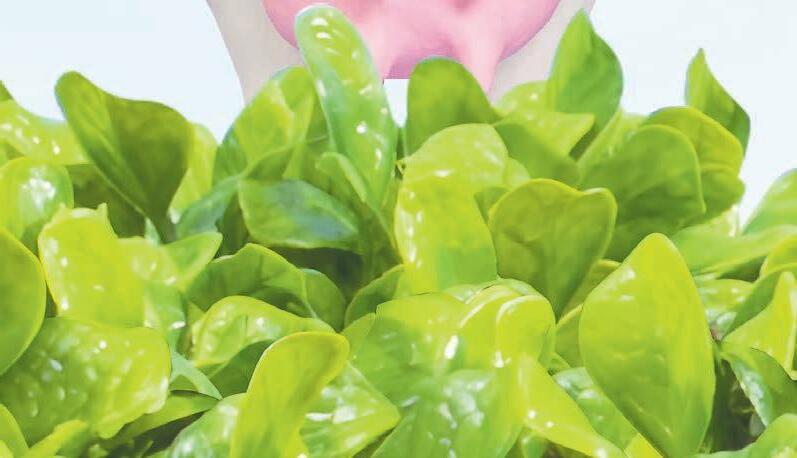



LIC brings two dairybeef breeds to market

Neal Wallace NEWS Breeding
CATTLE genetics company
LIC is releasing two dedicated dairy-beef breeds to provide the dairy industry with more breeding options for non-replacement calves.
The first Synergizer-breed calves, which are based on LIC’s Stabiliser genetics crossed with a Charolais, will be born this spring.
The first frozen semen inseminations will be available from spring next year and liquid insemination in spring 2027.
LIC’s chief science officer, Richard Spelman, told the recent Silver Fern Farms Farmer Conference that the Synergizer project is a partnership between Focus Genetics and Pāmu.
The cross will have two copies of the Charolais dilution gene so calves will retain their colour marking.
It joins KiwiPrime, a cross
that is seven-eighths Angus and one-eighth Hereford and which preserves the whiteface marker attributes.
This breed has the growth attributes, gestation length and black coat of an Angus but a white head. It will be released in 2027.
Spelman said the creation of dairy-beef genetics reflects a global trend to make better use of calves that are surplus to the dairy industry.
The use of sexed semen is on the rise in the United States and United Kingdom with some estimates that 84% of sexed semen used in the US is dairy-beef cross.
Day-old dairy-beef calves in the US are selling for NZ$170.
Spelman said there are additional gains from more targeted breeding.
Since 1990 overall dairy production in NZ has increased 50% or 145kg/MS/cow, and breeding has contributed 60% of that gain.
NZ inseminations of beef genetics over dairy have increased from 2.5% to about 9% in the
past decade, but he said that could rise as more dairy farmers use monitoring technology such as collars and tags to assist with mating management.
He estimated 18% of herds use collars now but that is expected to increase to between 40% and 50% in the coming years.
This use of collars and sexed semen will assist farmers to breed dairy replacement calves but also allow targeted use of new beef genetics.
Spelman said how the value of those beef-cross animals is reflected for both breeder and finisher and the cost of using sexed semen is still to be determined.
Overseas supply chains are integrated, which underpins the true value of dairy-beef cross animals.
Spelman said Synergizer and KiwiPrime crosses are being tested on Pāmu farms and the resulting production data will reveal genetic progress but also build confidence in the dairy beef animals and genetics.
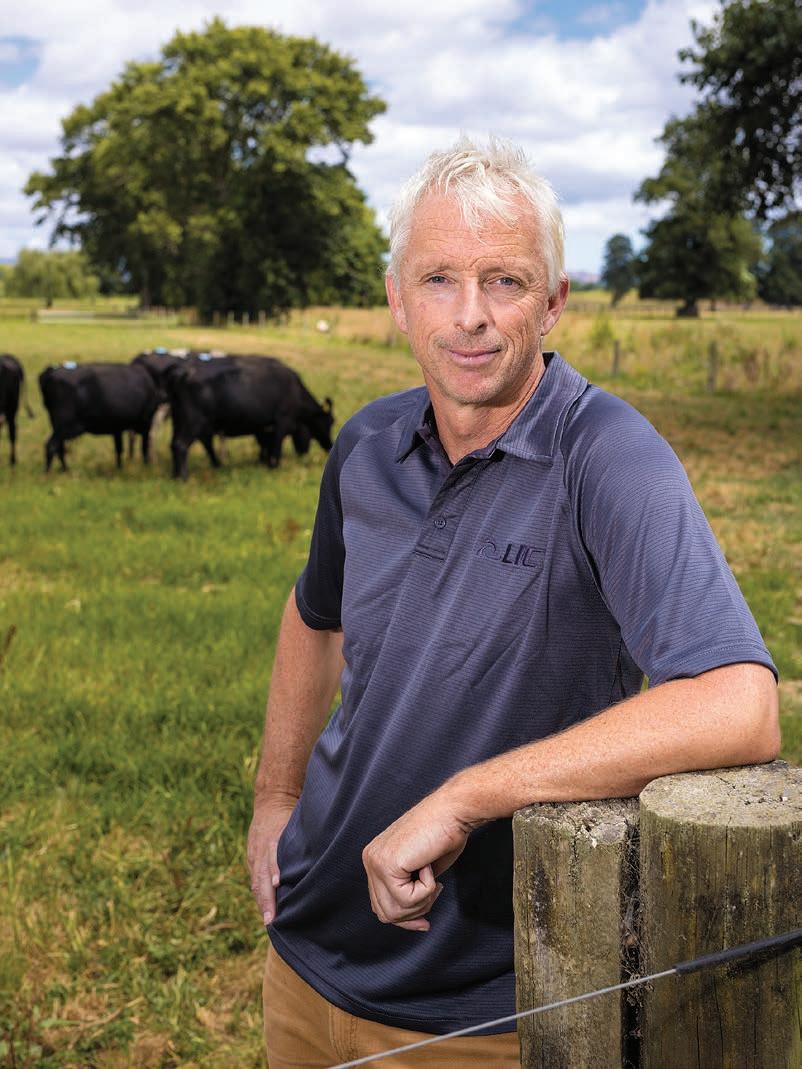
Young dairy-beef beats soy in new global study

Gerhard Uys NEWS
Food and fibre
A STUDY has shown that Mīti’s young dairy-beef products outperform soy protein on both carbon footprint and nutritional value, findings that could reshape the wider protein industry, says Mīti founder Daniel Carson.
Carson said the world-first study, which is now up for review, is the first time that a meat product has been shown to have a lower carbon footprint than a soy or plant-based product.
The study by the New Zealand Institute for Bioeconomy Science
used a nutritional life cycle assessment (nLCA) to compare Mīti to an equivalent soy-based product.
An nLCA measures the environmental impact of a food product while also considering the nutrients it provides.
Instead of just comparing products by weight or calories, it looks at how much carbon is used to deliver nutrition such as protein, iron and vitamins.
Carson said measuring carbon alone misses the point and that once the nutritional value of a product is factored in, the playing field is level.
Using young dairy-beef stock,
raised to 12 months, as a meat ingredient solves the climate issue and ethical issue that clients have with the dairy industry, he said.
McDonald’s, for example, said last year it wants Kiwi beef producers to address climate
Proteins from beef are associated with higher levels of vitamins, iron and of zinc.
Vincent Desaulniers Brousseau
New Zealand Institute for Bioeconomy Science
change and tackle the bobby calf issue before it becomes a problem for the fast-food giant.
Carson said as the global population grows, convenience foods that see lean meats as a functional ingredient are becoming more popular.
He said it’s critical that the system works for New Zealand farmers.
The scale of the bobby calf issue provides a strategic opportunity for the industry, as there are about 1.8 million bobby calves sent to slaughter each year in New Zealand.
A life cycle assessment scientist with the New Zealand Institute
for Bioeconomy Science, Vincent Desaulniers Brousseau, said traditionally life cycle assessments compare mass, for example, the carbon footprint from production to consumer and disposal of 1kg of beef versus 1kg of soy.
However, this old model did not take into account the nutritional value of a food product.
“The function of food is not just to put mass in your body. It is to provide nutrients.
“Proteins from beef are associated with higher levels of vitamins, iron and of zinc, which are also more bioavailable [than soy and other plant-based products]”.
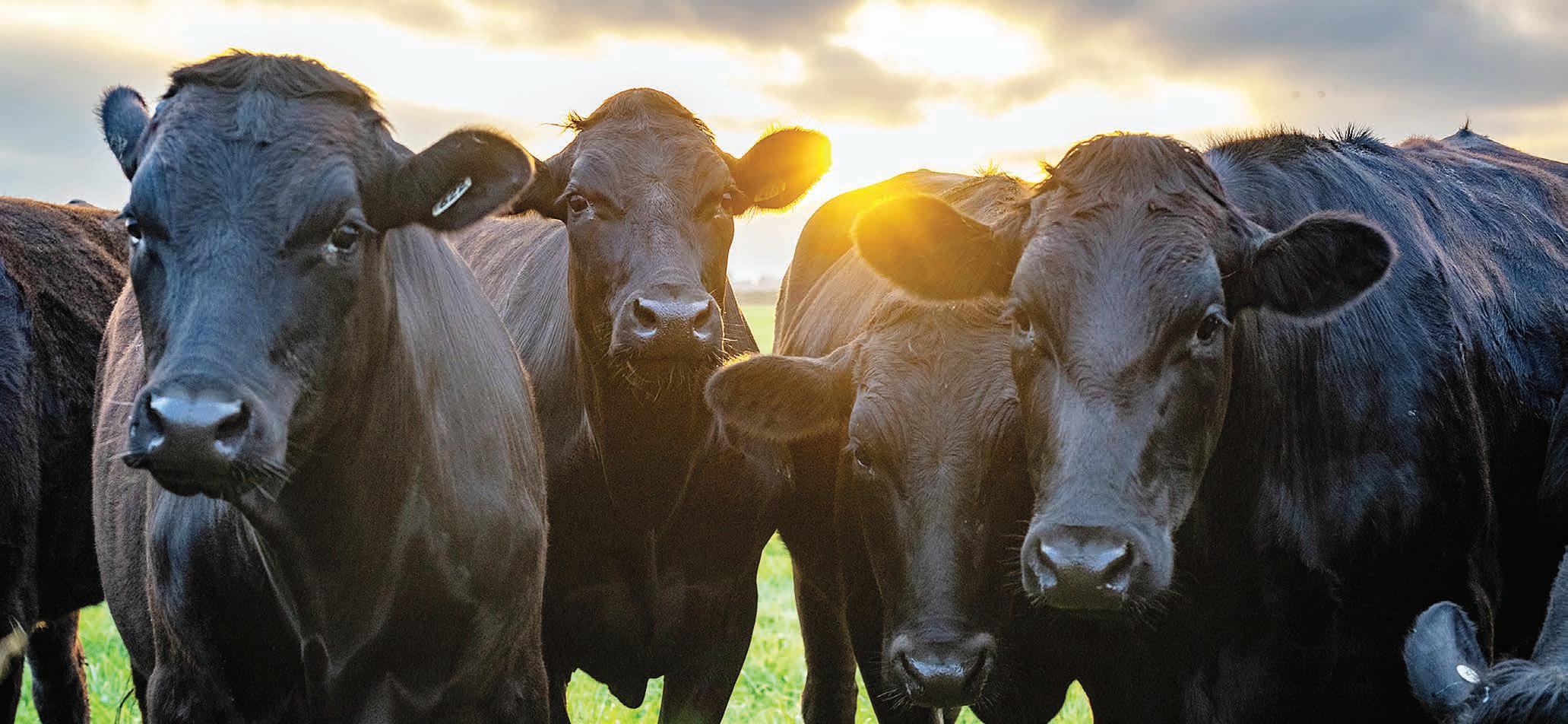
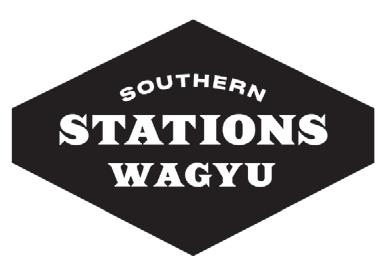
CROSSES: Richard Spelman, LIC’s chief science officer, says the first Synergizer-breed calves, which are based on LIC’s Stabiliser genetics crossed with a Charolais, will be born this spring.
Home front is healthy but tariffs loom
Sector perspective

THROUGH the second half of July and into early August, industry sentiment has held steady, supported by a strong start to the season and firm global pricing.
Milk volumes remain seasonally low, but good pasture growth, solid farmgate price signals and healthy export returns have kept confidence high. Even so, the confirmation of wide-reaching United States tariffs – including a 15% duty on New Zealand dairy products – has introduced a new
level of uncertainty for the months ahead.
New Zealand milk production in June set a record for the month. Milksolids rose 17.8% year on year (YoY) to 23.96 million kg, while total milk volume was up 14.6% to 261,000 tonnes. The opening $10.00/kgMS farmgate price for the current season, combined with favourable pasture conditions – especially in the South Island –has encouraged farmers to respond early. Revised May figures made only minor adjustments, leaving the overall picture unchanged at 3.0% YoY growth for the full 2024/25 season.
Globally, production trends were mixed. The US reported a 3.3% YoY lift in June output, continuing moderate growth. Argentina and Uruguay maintained strong recovery from last year’s drought, with June gains of 10.3% and 10.4%, respectively. Australian production fell -3.8% in May after weather disruptions across several states.
In Europe, May milk output edged up just 0.4% YoY, and the impact of June’s heatwaves is still being assessed. In China, May production dropped -4.1% YoY, highlighting ongoing tightness in domestic supply.
Global Dairy Trade (GDT) prices softened in early July but held firmer than expected as the month
went on. Event 383 saw the index drop -4.1%, led by falls in whole milk powder (WMP, -5.1%), butter (-4.3%), anhydrous milk fat (AMF, -4.2%) and skim milk powder (SMP, -1.7%).
Event 384 recovered some ground, with the index up 1.1%, supported by SMP (+2.5%), WMP (+1.7%) and AMF (+0.8%).
Late-month GDT Pulse auctions brought further modest gains in SMP and WMP. Event 385 continued the upward trend with a 0.7% lift, driven by WMP (+2.1%), SMP (+0.4%) and AMF (+1.2%), which helped offset a -3.8% drop in butter. Prices for powders and fats remain well above year-ago levels.
Trade figures for June highlighted the gap between volume and value. New Zealand dairy exports were almost flat, down -0.1% YoY by volume, but up 11.0% in value thanks to firm global pricing. Year to date (YTD), export volumes have risen 2.5%, while value is up 17.7%. China’s June dairy imports fell -2.4% YoY by volume, but remain 5.8% higher YTD, with import value up 9.9% YoY and 15.6% YTD – underlining the strength of current pricing.
From August 7, the US confirmed a 15% tariff on New Zealand imports, including dairy. Similar or higher duties have been applied to a range of other markets – Canada
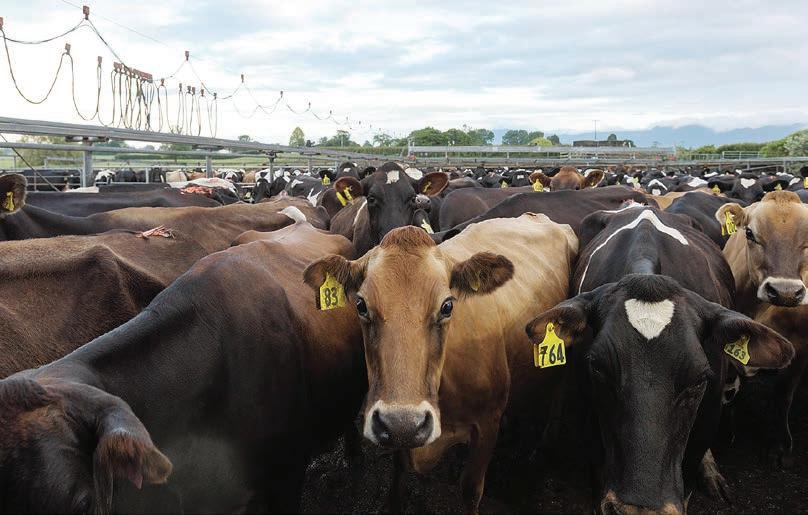
(35%), Mexico (25%), Japan (15%), India (50%), Indonesia (19%), Algeria (30%), South Africa (30%) and Vietnam (20%), among others.
China’s position is expected to be finalised shortly, with negotiations slowed by wider US trade demands, including pressure on countries buying oil from Russia. While some markets, such as Australia and the United Kingdom, secured lower rates of 10%, the changes will increase landed costs in affected destinations and could dampen demand.
With early-season production off to such a strong start, New
Zealand enters the main part of the season in good shape. But the tariff shock has brought geopolitical risk sharply into focus. The breadth of the measures means a significant share of New Zealand’s export markets now face new cost pressures.
While it is too early to quantify the full impact, reduced competitiveness in key destinations is a real possibility. For now, farmers are benefiting from strong prices and favourable conditions, but keeping a close watch on market signals – and potential shifts in buying patterns – will be vital as the season develops.







































M ax out where it counts with Calf M ax.
• High protein , high starch
• Enhances rumen development
• Bovatec® 20CC for coccidiosis control
• Calves love the taste!
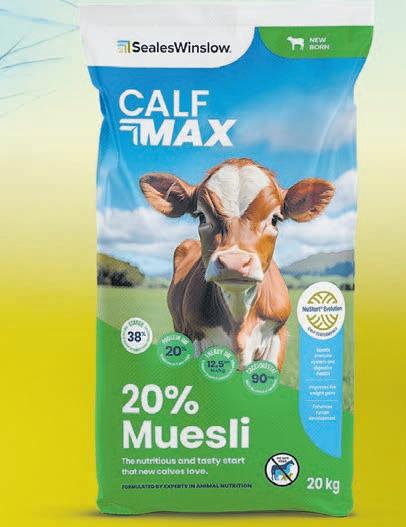












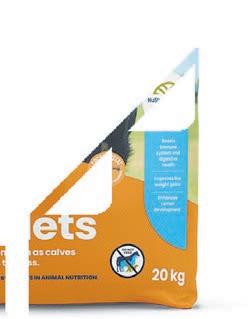






Cristina Alvarado
Alvarado is NZX head of Dairy Insights
STRONG: With early-season production off to such a strong start, New Zealand enters the main part of the season in good shape, says Cristina Alvarado.
FEDERATED FARMERS
Govt’s time to choose: support for farmers or carbon speculators
And let’s not kid ourselves: this isn’t forestry – it’s a licence to pollute.
The Government’s proposed forestry reforms are nowhere near enough to stop the wholesale conversion of productive farmland into permanent carbon forests.
Despite widespread feedback during consultation, and clear crossparty support for action, the draft rules still leave massive loopholes.
For sheep and beef farmers, it’s business as usual – the destruction of our farming base continues.
Two-thirds of sheep and beef farms are on Land Use Capability (LUC) classes 6 and 7, which are the very classes the Government has exempted from the 25% carbon credit restrictions.
That means the vast majority of our red meat farms are still exposed to full conversion to carbon forestry – and once they’re gone, they’re gone for good.
This is permanent land-use change. It’s not like switching from sheep to dairy or trying your hand at an orchard.
Once you plant a forest for carbon, the economic and environmental cost of removing it and restoring that land to food production is huge.
Carbon farming isn’t about growing timber, building rural economies, or helping New Zealand reduce its emissions at source.
It’s all about selling credits to big urban emitters while wiping food production, and small country towns, off the map – likely forever.
To the Government – you need to close the loopholes, protect the land, and back our farmers – before it’s too late.
Richard Dawkins
Federated Farmers forestry spokesperson
Minister Todd McClay has a choice to make. Will he back our hardworking farmers who produce crucial export income, look after the land and feed people with worldclass food?
Or will he keep pandering to a badly broken carbon market and the big businesses – often with foreign investors – that are exploiting it?
He can’t have it both ways and needs to make a decision. I just hope he makes the right one.
New Zealand is at a crossroads –will our future be with sheep and
cattle grazing our hills, or blankets of pine trees as far as the eye can see?
At Federated Farmers, we’ve been clear from day one: we support the intent of this Bill, but the current draft simply doesn’t deliver.
As it stands, the Bill allows a potential ‘lottery’ system for class 6 land, where 15,000ha of conversions each year will likely still occur on a first-come-first-served basis.
There are also no restrictions on class 7 and 8 land – effectively making it open slather.
The rules need to apply to all land classes, including the hill country most of Federated Farmers’ members live and work on.
Every single farm in the country should be subject to the same 25% credit limit, no matter its LUC rating. Otherwise, the damage just shifts – it doesn’t stop.
And let’s not forget, these aren’t ‘marginal lands’. Class 6 and 7 hill country is often vital breeding land that underpins New Zealand’s entire red meat sector.
Sacrificing it to carbon speculation isn’t just short-sighted, it’s self-sabotage.
We’re also deeply concerned about the permanent fire risk these forests pose. They’re a ticking bomb ready to explode in many parts of the country.

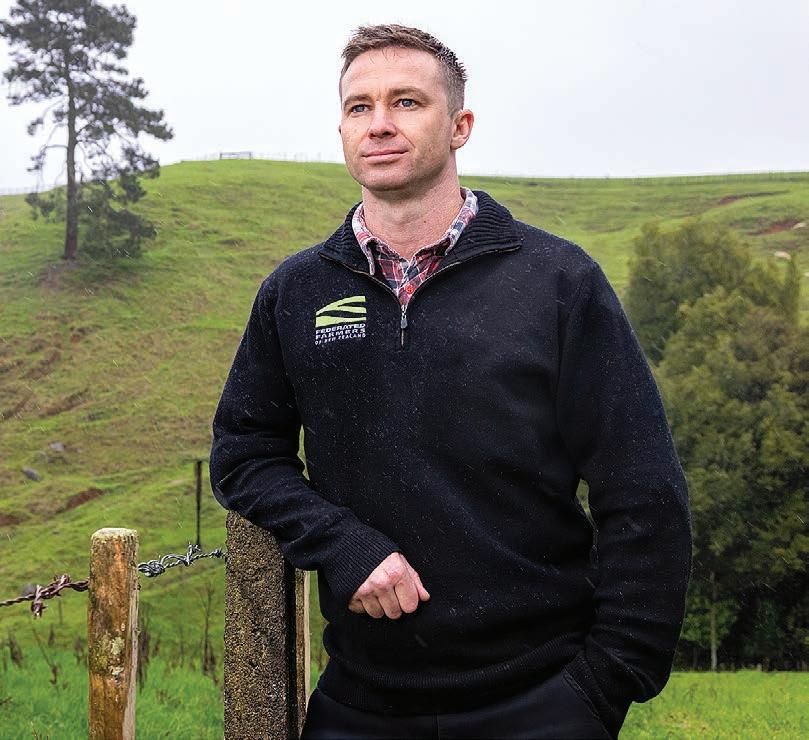
CROSSROADS: Richard Dawkins says it’s time for the Government to decide – do we want sheep and cattle on our hills, or pine trees stretching to the horizon?
With carbon forests, which may not have the fire breaks, pruning, thinning and firefighting resources of foresters growing radiata pine for timber, the risk is very real.
Do we want the chance of enormous, destructive fires on the east coast and other dryer parts of New Zealand where we’re seeing a lot of radiata planted?
The risk to human life, native biodiversity, and rural infrastructure is enormous.
Federated Farmers has been speaking up about this risk for a while now, and it’s time the Government took it seriously too.
It’s very important to clarify that we’re not at all anti-forestry.
When New Zealand went through
a planting surge in the early 2000s, driven by strong timber returns, this was an example of the right tree in the right place.
Federated Farmers does not oppose commercial forestry of this type.
But there’s a big difference between genuine production forests and carbon forests.
This problem is about more than trees. It’s about our people, our food security, and our place in the world.
We cannot afford to keep losing good farmland to bad policy and a subsidised industry.
To the Government – you need to close the loopholes, protect the land, and back our farmers – before it’s too late.




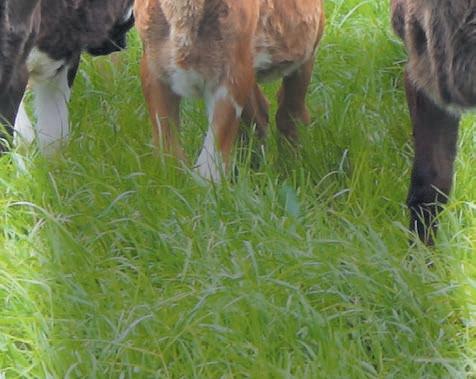















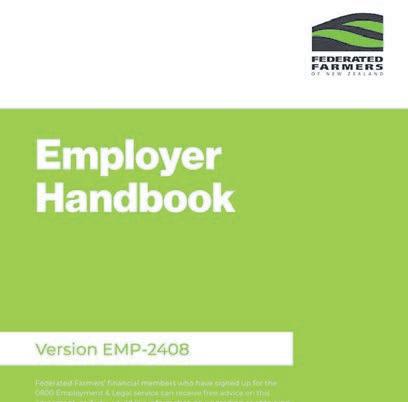




Richard Dawkins
Federated Farmers forestry spokesperson
New seasonal visas a boost for ag
Two new forms of seasonal work visas will give farmers and growers better access and certainty for securing skilled staff in specialised roles, Federated Farmers says.
“Once again this Government has listened carefully to what industries need to keep productivity ticking over, and responded with practical and balanced policy settings,” Feds immigration and employment spokesperson Karl Dean says.
“Federated Farmers and allied sector representatives have been working with Minister Erica Stanford and her officials on this and we’re pleased with the outcome.”
Minister Stanford announced the two new seasonal visa pathways on August 10, saying they would help businesses access the workers they need during peak periods, while also prioritising jobs for Kiwis.
Dean says sheep scanners, shearers, rural contracting mobile plant operators and others in specialist roles often move between the southern and northern hemispheres chasing work in the busy seasons.
“It will really give employers a lot more certainty to know those specialised workers who prove
themselves can return here for subsequent seasons for three years under the new Global Workforce Seasonal Visa.”
Likewise, the new Peak Seasonal Visa (PSV) gives farmers, rural contractors and the meat processing industry more confidence they can secure staff when seasonal workloads ramp up,
Dean says.
“Calf rearers, relief milkers, wool handlers, meat boners and process workers can also find work around the world.
“Until now, the Working Holiday Visa has served as a pseudo seasonal visa for these kinds of workers, but not all countries can access this visa, and age restrictions cut people out from applying,”
Dean says.
“The PSV is more practical for both employers and seasonal workers and should prove much better for tracking uptake and seasonal workforce needs.”
Employers will need to advertise these seasonal roles, and engage with the Ministry of Social Development, to ensure New Zealand workers continue to be prioritised.
“Farmers prefer to hire able Kiwis but the fact is they’re often just not willing or available to work in
Having the option of employing migrant workers provides a much-needed lifeline for many farming employers.
Karl Dean Federated Farmers immigration and employment spokesperson
the more remote rural areas,” Dean says.
“Having the option of employing migrant workers provides a muchneeded lifeline for many farming employers.
“Without them, productivity suffers and existing team members are at risk of burning out during seasonal peak workloads.”
These two visas, alongside last year’s changes to the Accredited Employer Work Visa, mean farmers and growers now have a suite of migrant worker settings that are fit-for-purpose, and attractive to skilled overseas workers.
“Now we just need a smooth transition for highly skilled agricultural workers into ‘green list’ roles and pathways to permanent residency,” Dean says.
“We’ll continue to work with the Minister on that.”

Feds back drive for electronic road user charges
Federated Farmers is on board with Government plans for electronic road user charges (RUCs) for all vehicles, but says there are speed bumps to sort before they can come in.
“We’ve been calling for a proper review of how we fund roads and bridges for a few years now,”
Federated Farmers transport spokesperson David Birkett says.
“There’s a big shortfall in road funding, and it’s only fair that the growing number of owners of fuelefficient petrol and hybrid vehicles should pay their share.”
Signalling what he called the
biggest change to how New Zealand funds its roading network in 50 years, Transport Minister Chris
There’s a big shortfall in road funding, and it’s only fair that the growing number of owners of fuel-efficient petrol and hybrid vehicles should pay their share.
David Birkett
Federated Farmers transport spokesperson
Bishop said our two-tier revenue raising system needed to end.
Petrol users pay fuel excise duties of about 70 cents a litre at the pump, while diesel, electric and heavy vehicle users pay paper-based road user charges based on distances travelled.
This revenue funds the building of new roads and maintaining our existing ones.
In 2015 there were 12,000 fuelefficient hybrid vehicles on our roads. Now there are more than 350,000.
The Minister is confident the market and innovation can deliver
solutions for electronic monitoring of distance travelled for all vehicles – something that already happens for about half of the country’s heavy vehicle fleet.
Given a significant proportion of farm vehicle use is not on public roads, any E-RUC system needs to be separate out – and not charge for –that travel, Birkett says.
“Farmers certainly won’t miss filling in paper forms with odometer readings for RUC claim-backs for onfarm travel.”
While modern vehicles may have suitable electronic readers for E-RUC, details on costs of retrofitting them

to older models are needed.
“We’d also want to know what the cost is likely to be for a farmer signing up with an E-RUC provider to handle all this.
“Most importantly, Federated Farmers would want assurances that as a consequence of this transition there is continued – if not enhanced – funding for investment in rural roads and bridges,” Birkett says.
“Too many rural bridges are near the end of their design lifetimes.
“There are also plenty of rural roads never designed or built to cope with the increased size and weight of modern trucks.”

RESULT: Farmers and growers now have a suite of migrant worker settings that are fit-for-purpose, and attractive to skilled overseas workers, Karl Dean says.
‘Overkill’ drone regs should be grounded
Federated Farmers says proposed new drone rules would clip the wings of a vital new tool for improving farm efficiency and innovation.
“Drones are helping farmers tackle modern challenges – from mustering and stock checks to crop monitoring and flood assessments,” says Federated Farmers transport spokesperson David Birkett.
“For this type of non-commercial drone use, there’s little risk to safety but big time and cost savings for farmers.
“Drone use is beginning to take off, including as an alternative to helicopters in some situations.
“The last things we need is to shoot the option down now with unnecessary regulation.”
Most farmers currently fly drones under the Civil Aviation Authority’s (CAA) Part 101 rules, which cover low-risk operations.
These rules are simple and cost-free – there’s no certification, training, registration or compliance paperwork required.
“As long as you follow a few basic safety rules, like keeping the drone in sight, flying below 120 metres, and staying away from aerodromes, you’re good to go,” Birkett says.
Farmers use these drones for everyday tasks such as aerial photography, monitoring crops, or collecting evidence for winter grazing plans.
“Livestock farmers also use them to check water systems, identify cast ewes, spot calving and lambing issues, and inspect flood damage,” Birkett says.
But the CAA is now proposing to exclude agricultural drone use from Part 101, meaning many farmers could be forced into the much stricter Part 102 regime, which is meant for higher-risk operations.
Part 102 applies to activities like spraying, flying at night, or operating larger drones (over 25kg) – things
typically handled by professional contractors.
It requires certification, drone registration, operator training, maintenance programmes, and a detailed safety plan known as an ‘exposition’.
“The ‘expositions’ needed under Part 102 typically cost $15,000$20,000, requiring consultants and 50-100 pages of documentation, putting it largely out of reach for those who do not use drones as their core business,” Birkett says.
He says it appears the idea of excluding agricultural operations under Part 101 is being driven by concerns around drones being used for spraying.
“This makes little sense. The
Let’s not let red tape bring down one of the most useful tools to land on farms in years.
David Birkett Federated Farmers transport spokesperson
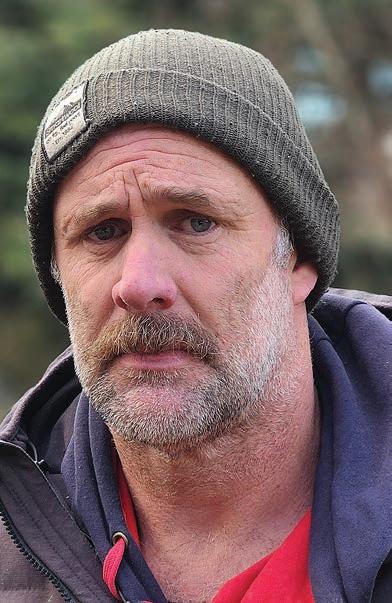
WHO’S
larger size of drones being used for spraying, and requiring the specialist expertise of an agricultural contractor, mean they already come under Part 102.
“There’s no need to throw a heavy regulatory net over all those other farmers and growers using small drones for myriad low-risk tasks.”
Nicky Mead has used drones on Dingleburn Station, on the eastern side of Lake Hawea, for the last five or six years.
“It’s mainly for mustering and checking stock.
“It can save us a lot of time, getting up to check in a corner for animals, rather than having to walk all the way up there.”
The station used to have a helicopter but it became too expensive.
Mead says their drone weighs about 5-7kg and more and more famers in her district carry them around in the ute as an everyday tool.
Dingleburn Station is embarking on a new tourism venture and she can envisage using the drone to fly out along walking tracks if visitors are overdue.
“It would be highly annoying if they hit us with a whole lot of rules and certification costs.
“It doesn’t warrant interference like that – there haven’t been any issues.”
Dan Devine, from Awakino Station midway between Oamaru and Omarama, feels the same.
He says his drone is only the size of a shoebox but it’s a great little tool for mustering, checking water troughs and looking for stock.
“We still need to use the helicopter for some things but thanks to the drone, we’ve been able to cut our helicopter bill by at least a third.”
With high-definition cameras now available on some drones, he can see their use is only going to increase for tasks such as checking on grass growth and weed infestations.
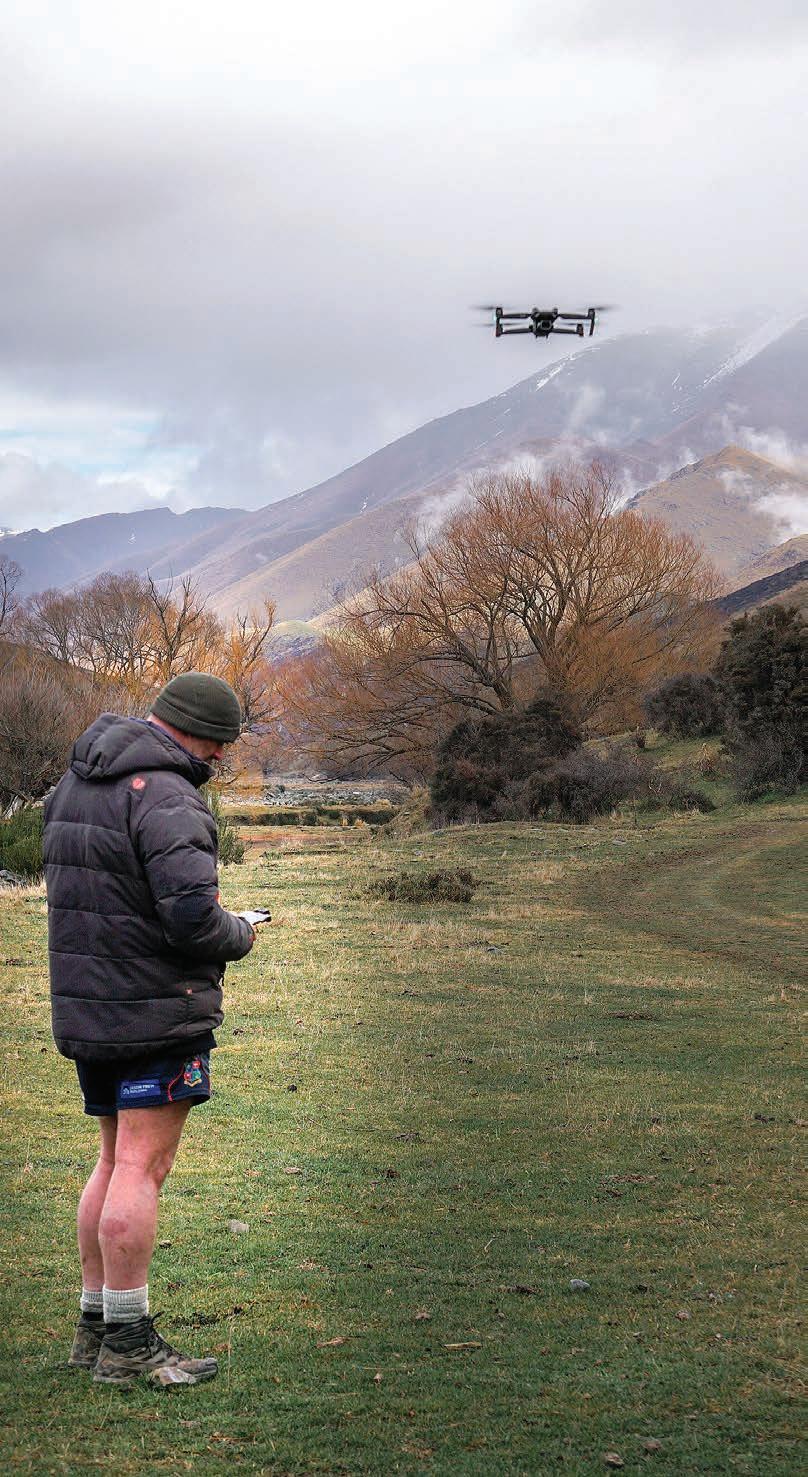
Devine is a licensed pilot and says the height limiter on smaller drones and CAA aircraft flight rules build in a safety buffer.
“What they’re proposing sounds like overkill to me.”
Birkett says drones are a technology showing great potential for helping farmers tackle some
of the myriad and ever-changing challenges in front of them.
“Their use is clearly increasing. Whacking farmers with Part 102 rules would stamp out that option for most of them.
“Let’s not let red tape bring down one of the most useful tools to land on farms in years.”

An in-depth conver sation with Hugh Jackson, 2025 Young Far mer of the Year. We talk far ming, mindset and backing your self – plus his take on leader ship, mental health, and the big challenges for young Kiwi far mer s.

DRONE DISMAY: Awakino Station’s Dan Devine, who has a pilot’s licence and understands air safety, says proposed new rules for drones on farm ‘sounds like overkill to me’.
Dan Devine.
Public backlash over police cuts
Plans to cut police services in rural Canterbury have drawn major public opposition, with hundreds of residents turning out to voice their frustration at two meetings.
“Police heard it loud and clear at these meetings that rural families and businesses are deeply concerned about proposed staffing changes,” Federated Farmers North Canterbury president Bex Green says.
“We had more than 500 people at the Culverden meeting alone, which should ring alarm bells for Canterbury Police District
Commander Tony Hill.”
At the meeting, Hill said one of the reasons behind the proposal to reduce staff at some rural stations, and close the Arthur’s Pass station, was a relatively low level of crime reported from those areas.
“That’s where we’re misaligned on this,” Green says.
“It was very clear from audience comments that it’s all the preventative, behind-the-scenes work done by the officers who live and work in our communities that
heads off so much offending.
“That sort of work isn’t always logged – but it’s extremely effective.
“Our local cops know every single detail about our community; they know the people, who their children are, who to contact if there’s something amiss.”
Green says police offered assurances over new rural liaison officer (RLO) roles and roading officers, and that the Rangiora police hub isn’t far away.
“But those officers won’t know all that crucial work that our local officers do.
“The rural people who spoke up at our meetings made it very clear how vital that local police presence is for them.”
Federated Farmers also organised a second public meeting at Leeston, held at the same time on August 6.
Local farmer and Federated Farmers national dairy chair Karl
Dean says residents were critical this was the first they’d heard about proposed changes in a review process started 18 months ago.
“I understand they’ve got to work things through with their
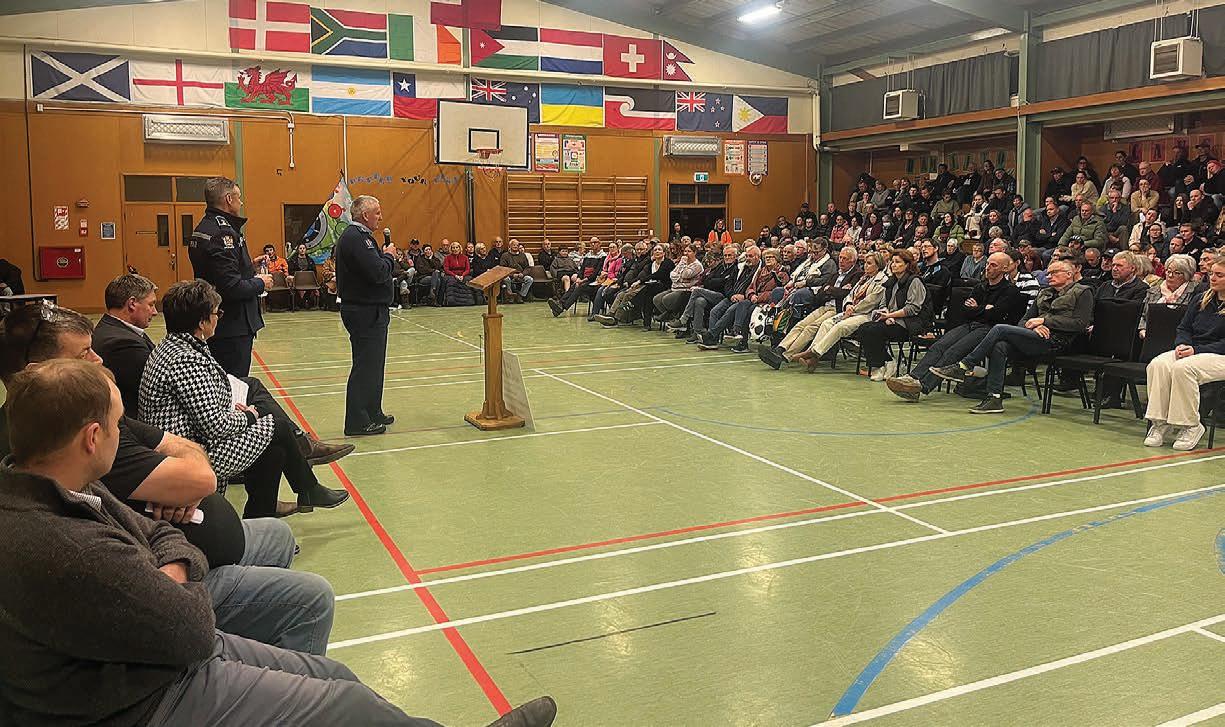
staff affected, but when were local residents going to be clued in? It all seems to have been so hush-hush.”
highly valued contribution rural response officers make to their local communities.
always intended to be additional, not instead of dedicated communitybased officers.
HIDDEN: Federated Farmers North Canterbury president Bex Green says rural police do valuable but unseen work deterring crime through relationship building and regional presence.
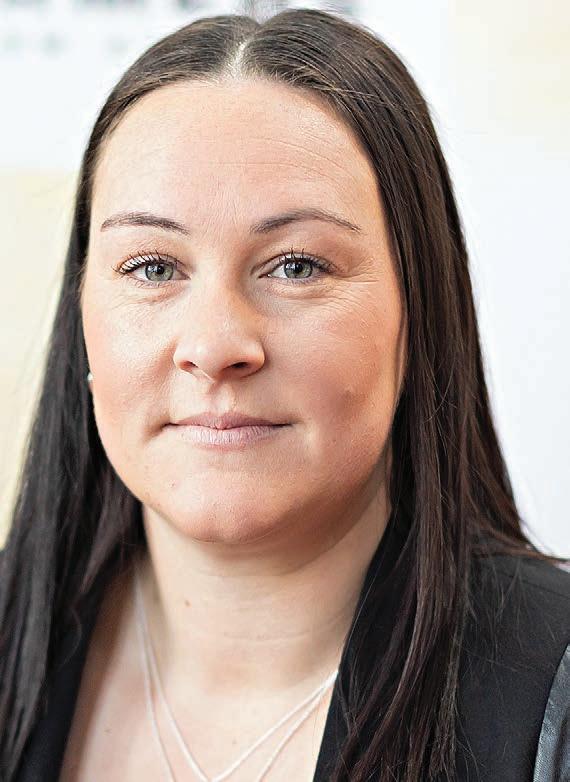
There was also frustration over the lack of detail on the role of proposed RLOs, Dean says.
“It seemed they hadn’t decided the hours of these RLOs and the scope of their work, but we heard if there was a call-out, and they were closest, they’d still be activated.
“So, what’s the difference between that and having the police staff we have at our local stations as now?”
Dean says if Rolleston needs more police, numbers there should be boosted – but not at the expense of rural coverage.
“The likes of Lincoln and Leeston are growing towns as well. They deserve an increased police presence – not a lower one.”
Chris Cahill, president of the NZ Police Association, described the proposal as “robbing Peter to pay Paul”.
“We recognise the increased demand for a 24-7 response model in Selwyn and Rangiora, but this should not be at the expense of the
“The benefit of rural staff to their communities is not always visible in police statistics.
The likes of Lincoln and Leeston are growing towns as well. They deserve an increased police presence –not a lower one.
Karl Dean Leeston farmer and Federated Farmers dairy chair
“Rather, consideration should be given to the ethos of the father of modern policing, Sir Robert Peel, that ‘the test of police efficiency is the absence of crime and disorder and not the visible evidence of police action in dealing with them’.”
Cahill says the rural liaison officer role was a positive initiative of Winston Peters, but the RLOs were



“I’d be surprised if Mr Peters, a champion of increasing police numbers, would support a reduced police presence in these rural communities.”
Minister of Police Mark Mitchell says it’s “very clear” the lack of information made available by Canterbury Police has resulted in confusion and concern.
In a Facebook post, Mitchell encouraged people to read the public consultation document and give feedback to Canterbury Police.
“I know Police are listening and my expectation is that the views of the communities affected are prioritised and responded to accordingly,” he said.
“In relation to this proposal, it is up to Police to set out the case for any change and justify it by assuring affected communities that they will not lose but gain as a result.
“Any final proposal that does not meet my expectations would not receive my support as Minister.”
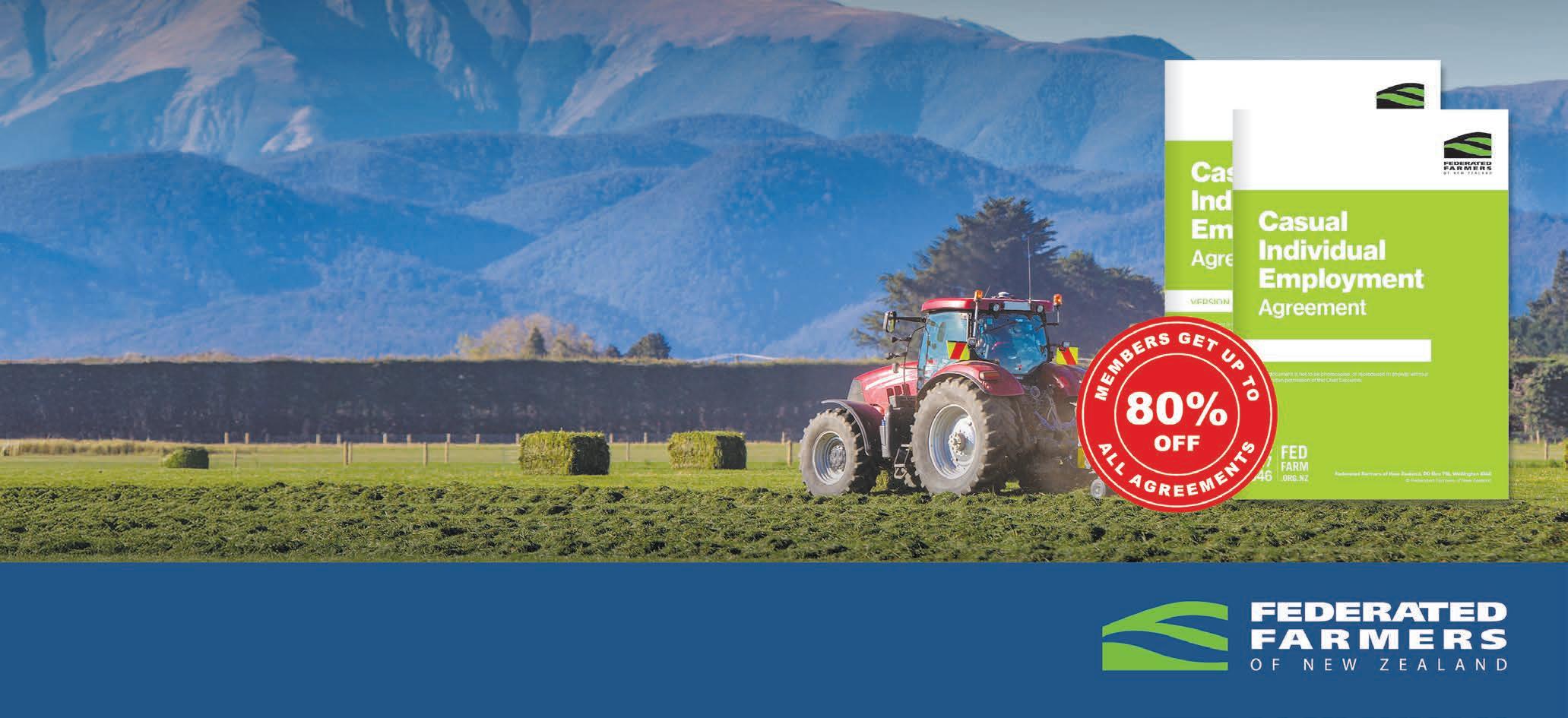
COPPING FLAK: More than 500 locals turned up in Culverden to make their voices heard on Canterbury Police’s proposal to cut police services.





VENDOR WANTS SOLD, HOKITIKA, WEST COAST DEADLINE PRIVATE TREATY CLOSING 21st NOVEMBER unless sold prior
221 HECTARES – BARRYTOWN
310 COWS - ALL STOCK CARRIED ON FARM, 220 Hectares
Located approx 30 minutes north of Greymouth on the Coastal Highway. Milking 440 cows with 3-year average 128,932kgs MS. Approx 177ha effective. Centrally located 40-bail rotary with ACR’s meal feeders and molasses feeding, auto teat sprayer. Expansive 2-storey main homestead and further 3-bedroom cottage. Local runoff for wintering and young stock.
Located 25KM from Hokitika. Approx 190 ha effective, milking 310 cows with production last season of 145,082kgs MS all stock carried on farm. 40 A/S Cowshed, Read plant and meal feeders. Good compliment farm buildings 3-bedroom Summerhill stone homestead Self-cont sleep out. Additional 3-bedroom cottage. Excellent mid-range opportunity in sought after traditional dairying valley, available going concern with stock and plant at valuation Possession date options
PRICE BY NEGOTIATION WITH OFFERS BEING SOUGHT
On Account Cargill Rd Barrytown Ltd, 22 Cargills Rd, Barrytown S.N.665
The Greg Daly Rural Team
The Greg Daly Rural Team
www.gregdalyrealestate.co.nz

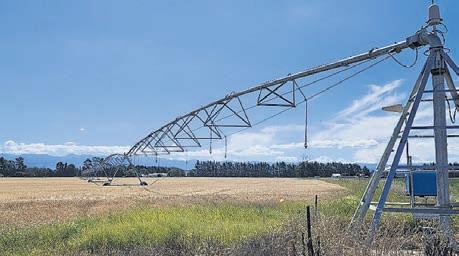
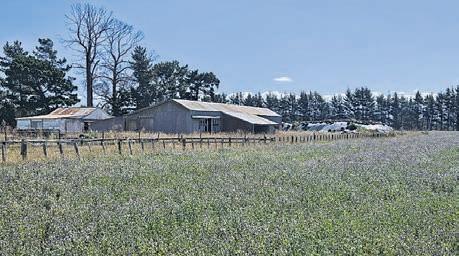


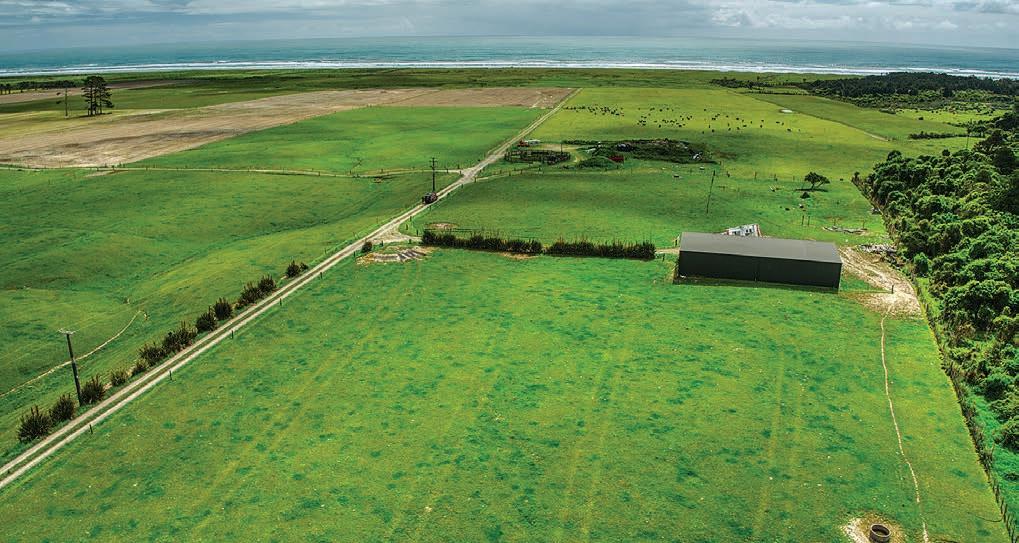
VENDOR WANTS SOLD, HOKITIKA, WEST COAST DEADLINE PRIVATE TREATY CLOSING 21st NOVEMBER unless sold prior
310 COWS - ALL STOCK CARRIED ON FARM, 220 Hectares Located 25KM from Hokitika. Approx 190 ha effective, milking 310 cows with production last season of 145,082kgs MS all stock carried on farm. 40 A/S Cowshed, Read plant and meal feeders. Good compliment farm buildings 3-bedroom Summerhill stone homestead Self-cont sleep out. Additional 3-bedroom cottage. Excellent mid-range opportunity in sought after traditional dairying valley, available going concern with stock and plant at valuation Possession date options
Estate Agent REAA 2008


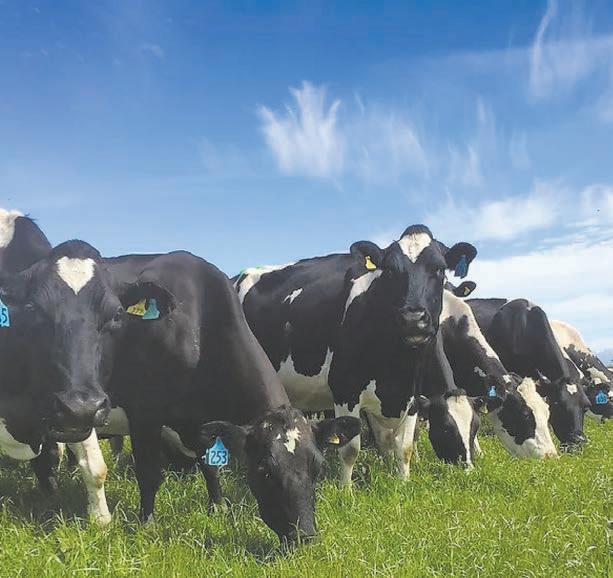








Tr





CRUTCHING TRAILERS
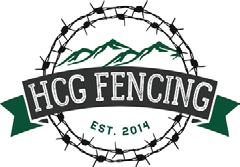







•
•
•
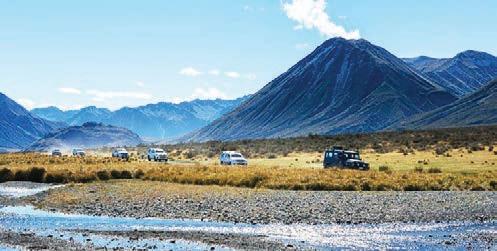
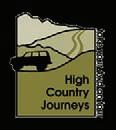
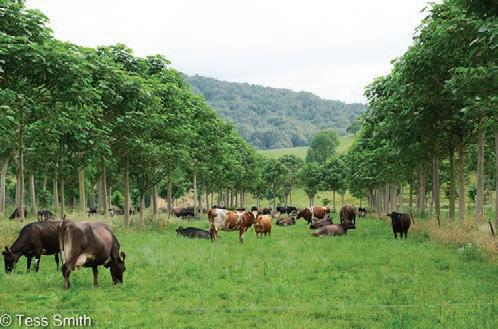
shade for stock
Paulownia Elongata, bare rooted saplings for sale.
Sizes from 2m to 6m – fast growing. Spring flowering, leaves suitable as stock feed.

• SEANZ Accredited Installer
• Tailored Solar Systems for Dairy, Livestock & Cropping Farms
• Battery Storage & EV Charging options
• Expert local support – from design to installation


Qualify for ETS. Leafy shade from year 1. Contact Graham 027 621 4091 Email miraka1@outlook.com paulownianz.co.nz
Available now for ASB Rural customers –make the switch with no upfront cost!



Junior Multimedia Journalist
If you have a passion for farming or rural New Zealand, then this role might just be what you’re looking for.
Farmers Weekly NZ has a great opportunity for a junior multimedia journalist.

As a key member of our digital editorial team, you’ll find exciting and new ways to tell stories in the digital space, by creating content for various media, including articles, images, video, and audio (podcasts, interviews) that upholds our commitment to quality, accuracy, and trustworthiness.
You’ll have the opportunity to work alongside some veteran ag journalists, while also carving out a name for yourself in the digital media space.
About you:
• You’ll have recent and relevant newsroom experience (ideally 1-2 years) or relevant qualifications.
• Have an interest in the food and fibre sector, or willingness to learn.
• Possess technical skills to shoot video, take high-quality images and a good understanding of using social media to tell stories – strongly desired, but there’ll also be opportunities to learn on the job.
Able to craft compelling narratives using different media formats to engage audiences.
Your attributes and talents will include high-quality research and writing skills. You will have a positive attitude, strong communication skills, be flexible and adaptable, and have the ability to switch between different tasks and media formats as needed.
Location: Head office – Feilding (ideally for first 12 months).
We invite you to register your interest and request a job description and application form now by emailing hr@agrihq.co.nz
Closing date for completed applications –5pm Friday 22 August.



TOURS
Bring your own 4X4 on a guided tour to discover more of the South
500 Mainly R1 Steers & Heifers Angus, Hereford, Simmental Online bidding available on bidr Enquiries Barry McAlister (PGW ) 0274 416



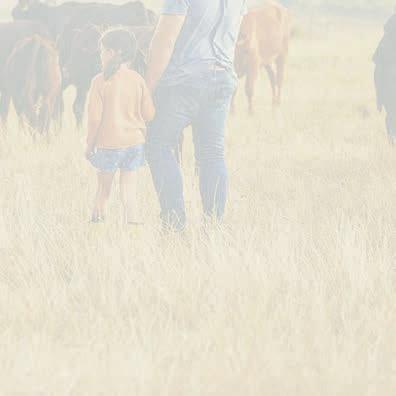

Three drunk guys entered a taxi.
The taxi driver knew they were drunk so he started the engine and turned it off again, saying, “We have reached our destination.”
The first guy gave him money.
The second guy said “Thank you.”
The third guy slapped the driver.
The driver was shocked, thinking the third guy knew what he had done.
He asked, “What was that for?”
The third guy replied, “Watch your speed next time, you nearly killed us!”
Here at Farmers Weekly we get some pretty funny contributions to our Sale Talk joke from you avid readers, and we’re keen to hear more!
If you’ve got a joke you want to share with the farming community (it must be something you’d share with your grandmother...) then email us at: saletalk@ agrihq.co.nz with Sale Talk in the subject line and we’ll print it and credit it to you. Conditions apply
WANTED TO BUY
TRAVEL
INDIA & SRI-LANKA package tours. Visit www. maharajahtours.co.nz or email india@xtra.co.nz or call Craig on 021 193 0091 for details.
WORD ONLY ADS. Phone 0800 85 25 80.
BOOK AN AD. For only $3.30 + gst per word you can book a word only ad in Farmers Weekly Classifieds section. Phone 0800 85 25 80 to book in or email wordads@agrihq. co.nz TREES FOR FARMS
ADDITIONAL INCOME. Stock shelter, erosion control, Truffle income, animal fodder, fireproof cork and Natives. 021garden.co.nz Litherland Truffles 021 327 637.
TREES FOR SALE
TOTARA’S FOR SALE. 80cm plus. $8+gst. Pick up Wairoa. Phone Jan 027 278 7033 or email j.doran@xtra. co.nz
WHAT’S SITTING IN your barn? Ford, Ferguson, Hitachi, Komatsu, JD. Be it an excavator, loader or tractor, wherever it is in NZ. Don’t let it rust. We may trade in and return you a brand new bucket for your digger or cash for your pocket. Email admin@loaderparts.co.nz or phone Colin 0274 426 936.
SAWN SHED TIMBER including Black Maire. Matai, Totara and Rimu etc. Also buying salvaged native logs. Phone Richard Uren. NZ Native Timber Supplies. Phone 027 688 2954.
MACROCARPA AND PINE TREES. Plantations, Shelterbelts, Farm lots. Big or small, Lower North Island, No obligation free quote. Call Grant 021 246 4329 HSF Ltd.
the land, she loves rural living and everything it brings. Wendy is hoping to meet a sincere gentleman who shares her interests and values. Her passions include gardening, music, cooking, animals, travel and spending time outdoors. To meet Wendy or one of our lovely country ladies please call 0800 446 332.
RAMS FOR SALE
WILTSHIRES-ARVIDSON. Self shearing sheep. No1 for Facial Eczema. David 027 2771 556.
STOCK FEED
HAYLAGE $80. Balage $100. Hay and straw are also available, competitive rates. Phone 021 455 787.


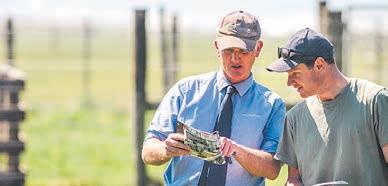

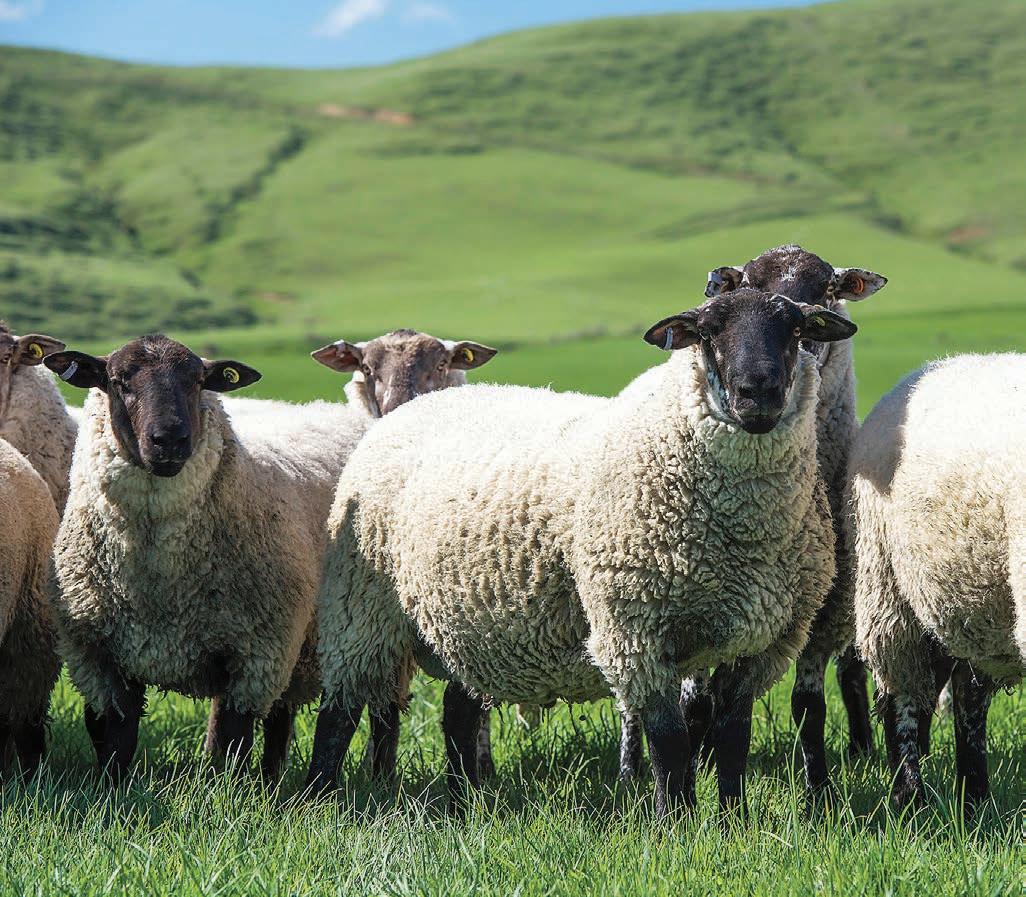
Photo:
ASTLEROCK C AT TLE SALE
SALE TALK
HEIFER MATING HEREFORDS
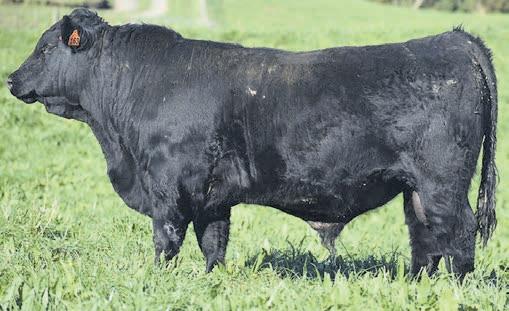
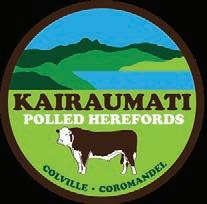

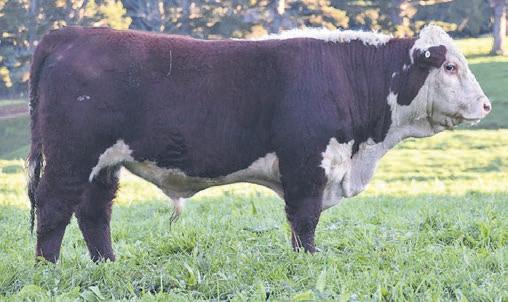



• High calving ease, above

Waikato
Auctioneer Cam Heggie 027 501 8182
Local Agent Stephen Hickey 027 444 3570
Enquiries contact John Allen 027 440 7504 or jvmeallen@xtra.co.nz

RIVERINA JERSEYS 2ND ANNUAL RECORDED JERSEY BULL SALE

A/C Riverina Jerseys Ltd – Warren, Louise, Jordan, and Liam Berry
Wednesday 10th September 2025 at 12pm 873 Owairaka Valley Road, Te Awamutu or online via

Riverina are a well-established jersey stud, who are excelling in breeding programmes across the country. One of their bulls, Riverina Castro ET currently the 10th highest Jersey bull on NZAEL with straws being sold through St Genetics.
Bulls for sale hold an average BW of 238 (boosting up to 386BW), and are a combination of mainstream, overseas, polled, and unproven bulls with the special addition of a ‘slick gene’ bull; marking exceptional opportunities so suit anyone regardless of their breeding motivations.
With a nationwide shortage of both dairy cows and youngstock, take advantage of these outstanding bulls this spring mating to ensure valuable pregnancies for your benefit!
Herd Averages: 200BW, 214PW, RA100%
To view the full sale catalogue, visit our website and click the ‘on-farm auctions’ tab.
Enquiries contact:
Mike McKenzie – 027 674 1149
Luke Gilbert – 027 849 2112
Upcoming Bull Auctions:
Friday 29th August
Waimarie & Otengi Hereford Bull Sale, Kaeo
Saturday 30th August
Hoobees Hereford Bull Sale, Coroglen
Tuesday 2nd September
Matai Mara & River Rock Angus Bull Sale Online ONLY via BIDR
Friday 5th September
Hairy Spot Hereford Bull Sale, Taranaki
Friday 5th September
Matapouri Hereford Bull Sale, Whangarei
Monday 8th September
Kaingaroa Simmental & Angus Bull Sale
ONLY via BIDR
Tuesday 9th September K Flower Hereford Bull Sale, Dargaville
Tuesday 9th September
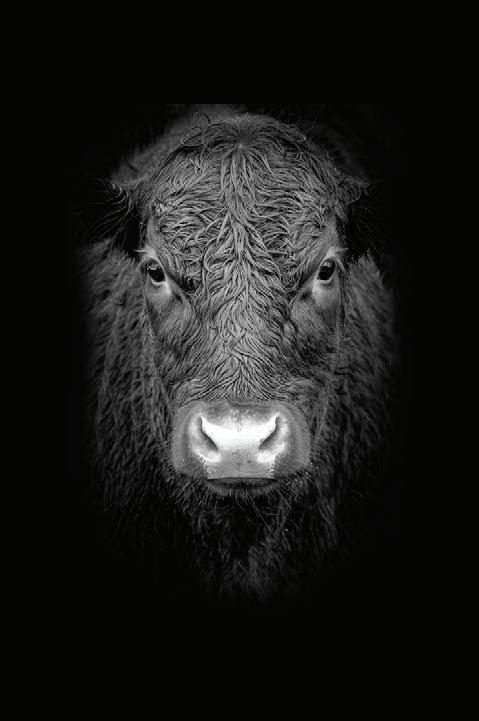
EXPANDING OR CONVERTING? WE’VE GOT YOU COVERED
Dairy Herd Solutions to suit your operation
Whether you’re expanding, converting, or planning ahead, Carrfields Livestock is your trusted partner in a fast-moving dairy market where quality herds are in hot demand and often selling before they officially go on the market.
It’s a hot market, don’t miss out! With buyers moving quickly, Carrfields has already contracted herds and heifers for delivery to the South Island in May and June next year.
Carrfields has a strong nationwide agent network with trusted local knowledge and dedicated dairy coordinators with proven results in sourcing, negotiating, and settling dairy transactions of all sizes. Contact your local Carrfields agent today or speak with one of our Dairy Coordinators.
OUR COORDINATORS
National – Paul Kane Ph 027 286 9279
South Island – Richard Andrews Ph 027 536 8693
Waikato Bop – Matt Hancock Ph 027 601 3787
Taranaki – Dainiel Hornby Ph 027 636 2090
Northland – Craig Couling Ph 027 292 6828

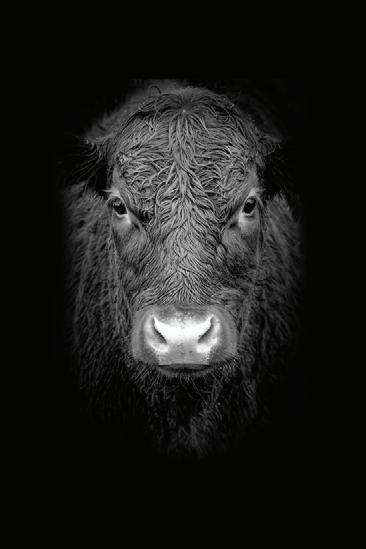




25 Hereford and 12 Angus Performance Recorded & Carcase Scanned Yearling Bulls
Matariki Performer P24







craigmore polled
herefords


All bulls are:
We’ve done the work for you!
All bulls are:
We’ve done the work for you!
• Performance recorded for 55 years
• Performance recorded
• Craigmore has genomic tested >200 cattle per year since 2018
• Genomics tested to improve accuracy of EBVs
Polled gene tested
• Polled gene tested
• BVD tested
• BVD tested
SPECIAL OFFER
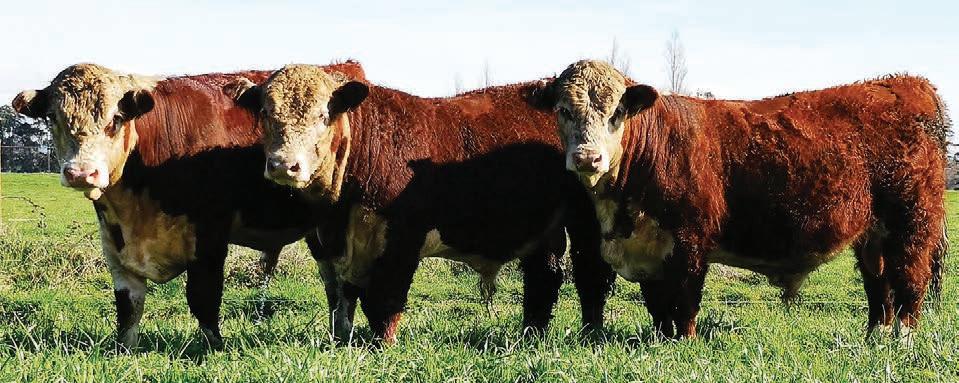
YEARLING BULL
YEARLING BULL SALE
SALE
On farm bull sale plus online sale at bidr Sign up at www.bidr.co.nz
On farm bull sale plus online sale at bidr Sign up at www.bidr.co.nz
Monday 11th September 2023, at 12.30pm Luncheon available On A/C D.B & S.E Henderson
For every bull purchased the buyer will receive a bonus package of 15 semen straws of Craigmore 23251 for use in commerial and dairy herds
Craigmore has been breeding Hereford cattle for over 50 years! We have bulls that will suit beef and dairy farmers www.craigmoreherefords.co.nz
At the stud property: 429 Rukuhia Road, RD 2, Ohaupo 100+ registered well grown bulls









Markets
Hard work ahead to protect farmgate prices
Weekly throughput is in its seasonal slump, but the test will be how markets respond to a spring surge in supplies.

Mel Croad MARKETS Exports
WHILE there is plenty of work to do on farm currently, it’s a different story at the processing end.
Weekly throughput is at winter low levels, leading to low export volumes. While this has enabled record high export returns and farmgate prices, the key now is how markets react to the seasonal improvement in supplies that will develop from spring. This will be the first real test since export volumes started falling from April/May.
July lamb exports came in at 18,700 tonnes, the lowest July volume shipped since 2019. This comes on the back of June volumes, which were the lowest ever recorded for that month. Not surprisingly, the average export value for lamb in June pushed to a record $14.64/kg. Early indications point to July results being similar. These high export returns, as opposed to unsustainable procurement competition, have enabled both processors and farmers to benefit.

Key overseas markets have been prepared to pay to secure the small volume of lamb exiting New Zealand. And that’s unlikely to change over the next two months. Export volumes tend to drop even lower in August with only subtle upside into September.
With 42 weeks of processing data now released, it shows the NZ lamb kill sitting at 14.91 million head. This compares with 19.26 million lambs processed over the same period in the 2014-15 season.
With only 10 weeks of processing data left to collate, it’s inevitable that NZ will process a record low volume of lamb this season, potentially even lower than earlier industry expectations.
However, some of this slowdown in throughput has been a direct result of finishers wanting to hit peak lamb prices. This will mean October processing numbers will likely be more inflated than last
year, dominated by old season lambs.
Average export values for lamb tend to peak in September. As lamb supplies start to pick up through spring, farmgate prices inevitably come under pricing pressure. One large meat company is offering a guaranteed minimum priced contract of $10/kg for the first week of November. AgriHQ data shows the highest price ever achieved for that week was $9.60/ kg, back in 2021.
What this current contract price does confirm is that by November, farmgate prices will likely be on their way down and at a faster rate than normal. Despite this, AgriHQ is still forecasting farmgate returns to average in the high $9/ kg level through November.
It’s been a similar scenario for beef. Monthly beef export volumes out of NZ in July and June dropped to their lowest level in 12 years and nine years respectively.
Much of this stemmed from a non-eventful cull cow kill and a significant reduction in the number of steers processed earlier on.
Average export values remain firm at elevated levels, leading to record high farmgate prices.
Cattle processing numbers tend to bottom out by late winter but don’t gather much momentum until late September. From there, weekly kill rates track higher and can double by Christmas. Much like lamb, this leads to pricing pressure at the farm gate. Often that doesn’t start to show up until November.
With beef, however, it’s not just a matter of seasonal supply pressures here domestically. Changing trade dynamics instigated by United States President Donald Trump’s ever evolving tariff announcements could also create some challenges in the short to medium term.
The potential impact of these

RECORD LOW: It’s inevitable that NZ will process a record low volume of lamb this season, says Mel Croad, potentially even lower than earlier industry expectations.
is going to be greater for beef than lamb, given its larger global footprint.
While the US is currently navigating a production deficit and needs imported beef, the variable tariff rates now in play will complicate the situation. Export markets are acutely aware of the seasonal supply trends out of NZ. Last year, export demand was strong enough to counter some of that usual downside at the farm gate. But export markets were paying a lot less to secure our products than what they are now.
As our supplies grow, it will test current demand levels and naturally lead to some softer asking prices. It’s crucial that exporters work to ensure those prices land at a level that enables a continuation of consumer support within key markets but also maintains an equally profitable return at the farm gate.
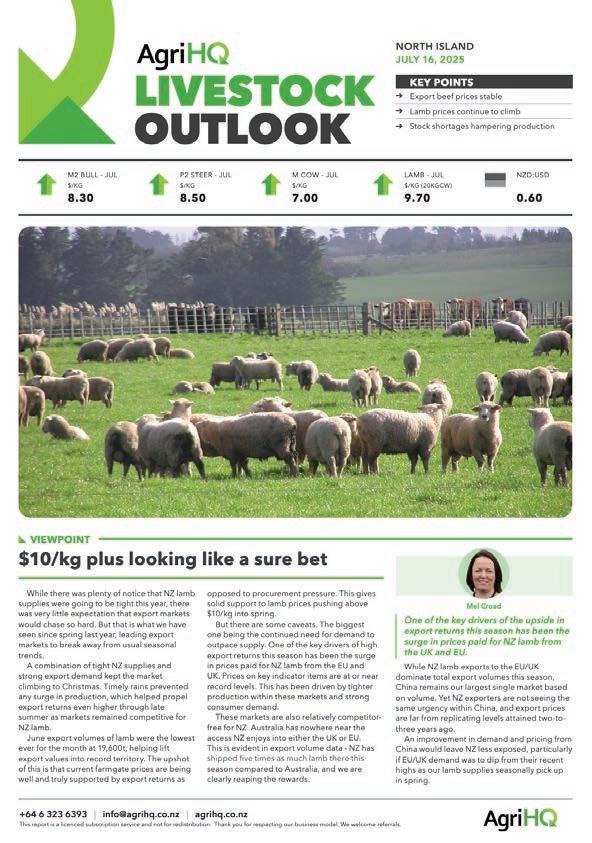
Cattle Sheep Deer

Weekly saleyard results
These weekly saleyard results are collated by the AgriHQ LivestockEye team. Cattle weights and prices are averages and sheep prices are ranges. For more
255kg
R1 dairy-beef heifers, 210kg
Aut-born weaner dairy-beef bulls, 130kg
Aut-born weaner crossbred bulls, 105kg
Temuka | August 11 | 368 cattle

Feeder Calf Sales
Frankton | August 12 | 1908 cattle
Hereford-Friesian bulls, all
Angus-dairy bulls, all
Charolais-dairy bulls, all
Hereford-Friesian heifers, all
Charolais-dairy heifers, all
Cambridge | August 12 | 1236 cattle
Charolais-dairy heifers, all
Tirau | August 12 | 927 cattle


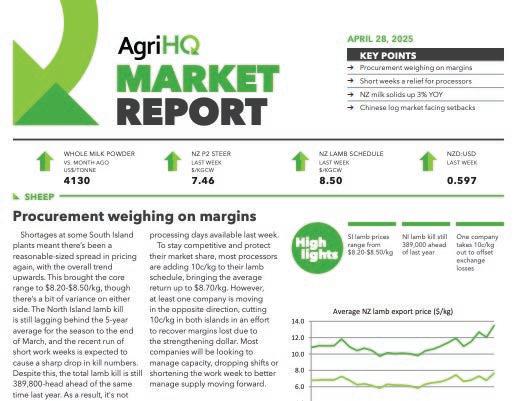






Marton
August so far colder and drier for many

Philip Duncan NEWS Weather
GROWING up in rural New Zealand, something I loved doing when I was a kid was blocking up the tiny stream on our property to see how long I could dam it before water eventually broke through.
So it’s no wonder that, as we get to the later part of winter and towards spring, the boy in me gets excited to see how the weather is going to break, and how the weather around New Zealand and Australia will then behave – it’s the chaos of it all that I enjoy the most, along with the ever changing forecast landscape.
Farmers, on the other hand, may not embrace that as much as I do – especially coming into lambing and calving.
August has been quite settled to start with – like someone built a small dam in the sky and blocked the flow of lows and storms.
High pressure zones during August and September can block some of the winter/ spring storms we get – but then suddenly they can be unleashed without a moment’s notice, which is why we need to monitor the coming several weeks very closely.
For perspective, the majority of New Zealand’s regions have not even had 50% of their normal August rainfall so
far, with parts of Hawke’s Bay (Napier to Hastings and surrounds) and south coastal Canterbury only receiving 10% of normal rainfall this month (at the time of writing this).
The wettest areas were, oddly, also in the east between those two regions, namely central and northern parts of Canterbury and up into Wellington, Wairarapa and Hawke’s Bay.
So yes, the two regions with the lowest rainfall so far this month compared to usual in August also have areas that are the wettest above normal in the nation. Would you like my job?!
When it comes to sunshine hours so far this month, it’s easier to work out – eastern areas have been cloudier, western areas sunnier.
Temperatures nationwide have been below normal for most – with so much polar air stuck over us, for really long spells, including up to the “winterless north” where there have been a few light frosts.
The polar air boundary does move up and down across New Zealand during winter, much like how waves crash on a beach and go up to the dry sand mark, then retreat. But lately that polar air hasn’t retreated – like a wave that crashed up to the high tide mark but stops there and takes days to flow back to sea again.
The only places that have been a little warmer than average are parts of the West
Bright Sunshine Anomoly 01/08/2025 to 12/08/2025
(Note: This estimation is based on data from a small number of climate stations. Estimates located far from climate stations will be less accurate)


RAINFALL ANOMALY: The driest and wettest regions have been in the same place lately, mostly Hawke’s Bay and Canterbury. Rainfall Anomoly 9am 01/08/2025 to 9am 12/08/2025
Coast, East Cape, Northland and northern parts of Auckland (although southern parts of Auckland and into Waikato were colder than usual so far).
Manawatū stands out as being coldest compared to usual for this time of year, with
most parts of that region more than 2degC below normal.
We may see more lows in the mix in the coming weeks – spring’s weather pattern (with milder days in the mix) looks to slowly start forming now.

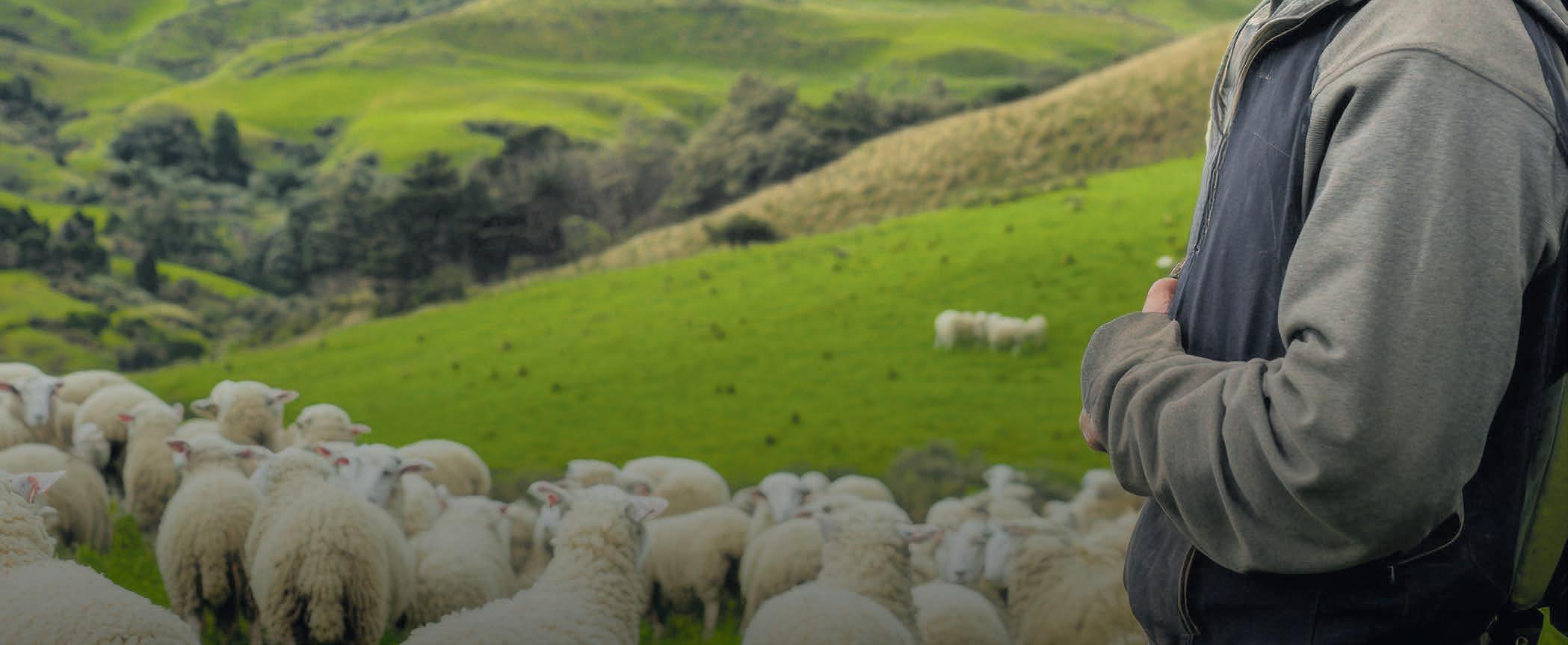
SUNSHINE ANOMALY: West has been best for sunshine so far this month.
